|
Hello Readers of ‘The Pipe’, It’s that time again. Another volley of personal perspective. As we here in North America are about to enter another summer (and growing season) it’s evident we do so (in some regions) with frighteningly low levels of stored water, both in the ground and in lakes and reservoirs. The author has been reading that in the middle and western states this summer and fall, severe water use restrictions can be expected, as a result. (PtP can recall the 1970-‘77 California drought where at the worst stage, residents of the City of San Rafael received as much as a $50.00 fine for as little as one too many toilet flushes.) And, how many readers remember “The yellow’s mellow but the brown goes down”, or “Share the water, shower with your neighbors”? Well, now PtP believes it’s very possible a sizable number of us Sunbelters are, in the near future, going to revisit some of these strapped conditions. Yes, it’s scary, in more ways than one. (The author lives deep in an already stressed fire-prone forest.) How bad can it get? Only time will tell. But in this blogpost the author will revisit some of the standard water saving precautions we tend to forget or overlook in plentiful water times but may now, again, be worth paying attention to. The Whales There are four consistent trouble makers when it comes to the most common causes for water waste involving residences. Pete likes to think of them as The Four Whales. This post will not be a repair tutorial but rather a maintenance preparedness reference for a possible Western/Mid-Western mega-drought. 1st Whale: Thirsty Mechanical Servants Pete the Plumber’s long time good friend, Berkeley professor C. McGee, once had a fridge/freezer that should have been retired a generation previous to its demise, but the old Scot just couldn’t bring himself to chuck it and buy a new one. This went on for years until finally he was finding his chilling martini glasses totally entombed in ice. After PtP’s constant chiding (and ice chipping) the Perfesser relented and replaced the old servant with an efficient new refrigerator/freezer. (He learned from the appliance store that his old fridge/freezer had six motors which when new, the electricity to run them was cheap.) (The ‘Perfesser’s’ electricity (aside his drinking water) was also sourced from hydro-power, hundreds of miles away, part of the biggest plumbing system on the planet. It was the same with his automatic washing machine. I think Eisenhower was President when it was made. A rivulet of water ran out from under it every time it ran. Conveniently a floor drain was feet away. When the rivulet eventually became a horse piss the old Scot’s disdain to spend was drowned into action. A a new mechanical servant was installed. (After a rather short interim (two utility’s billing cycles) later the Perfesser was bragging that between the savings over the old fridge/freezers electric bills and the water and power savings over his old washing machine, he was ‘ahead’ twenty-five dollars a month. So, (the lesson) if you have been thinking (dreaming) of replacing some long serving water and/or power hungry appliance (fridge/freezer, dishwasher, or washing machine), according to meteorological science reports it appears there would be no better time than now to do it. *Also, if your dwelling is served by a water utility, you should check with them for any number of money saving incentives they may have on offer. Pete the Plumber has saved many of his clients considerable sums by recommending that action. If ‘things’ (drought effects) do get really ‘dicey’ again, fees are going to climb sharply to possibly astronomical. Any such incentive programs acted upon will have proved prescient. Don’t lose out. Timing and the 2nd Whale: Bathing Just as the public has been informed through community service media that we can save on our electric bill by timing our washing machine and dishwasher use to ‘off’ hours, time and water play another part in our rhythmical hygienic habit: bathing. Be honest now. Who hasn’t fallen back into long showers and/or deep soaks since the last time we were asked to drastically reduce our water usage? The time it takes automatic appliances to go through their various cycles, is, automatically programmed. Even though our present, possible decadent bathing practice (2nd Whale) may seem ‘automatic’ to us, we are the programmer. We may discover here in the future just how much monetary expense we will endure to enjoy our presently unregulated bathing habit. At the State Park we may insert several dollars of quarters in the slot to take a hot shower of the shortest ‘acceptable’ duration. In a worse case scenario we could see comparable pricing (or worse) at home, on our monthly utility statement. A Suggestion May the author make a suggestion? (Too bad if you disagree). ‘Things’ can have a way of becoming pretty irritating to us in our daily activities, but one thing that is almost universal: a good hot bath or hot shower goes a long way reversing it. Though yours truly wasn’t in the military service (Boy Scouts doesn’t quite cut it) he wishes to mention/introduce a military term: G.I. Shower. You have probably heard the term and already understand the concept. (But PtP doesn’t want to lose any stragglers.) The G.I. Shower equates to a: quick, military version of a low water use bathing method, via a timing. This method means shower water running in short segments, with it turned off in between, while the bather lathers. Then the water is resumed to rinse down the body. This timing cycle: water on/water off (in military scenarios) serves two purposes. One, is to reinforce the concept of efficient use of ‘supplies’, and the military’s other intent (of course) is torture: to ‘viscerally’ remind the bather who’s the boss. Doing It PtP wants to tell you in the next paragraph about a little piece of plumbing hardware (which has been around for decades) that can remove any semblance of torture for conscientious civilians (sand crabs?) wanting/needing to take ‘action’ to combat the ‘tyranny’ of severe water restrictions, which could interfere with their personal desires involving the cleaning and maintenance of their bodies. Mounting the Flow With the incorporation of a flow control valve (Photo 1) on your shower arm, upstream of the shower head, lucky civilians can learn to enjoy an actual civilized version of the G.I. shower (with the superior to G.I. bath fittings in most homes). This routine will come in handy when ‘things’ get ‘dicey’. Because of the flow control valves ability to abruptly stop and then let go of a pre-determined temperature and volume of water, there’s a huge savings by two measures. Read on to find out how and why. Most tub and shower valves manufactured at this writing are now single handle designs. The reason for this is scald safety. The long used two handle shower valve was cause for many tragic burns, usually involving children’s use of the plumbing and to a lesser degree tragic burns to adults from using an unfamiliar shower valve which was improperly installed (hot and cold piping were switched.) States like California (usually first at everything) finally put their foot down and mandated no more unregulated two handle and single handle shower valves. After a certain date a l l shower valves sold in the State had to be temperature compensated so that a bather, by his/her actions or due to a negligent plumber could not scald themselves when using the shower. A two handle shower valve can be temperature regulated by plumbing in an additional temperature control device. The added cost of the extra device and the plumber’s labor time to install it makes this an unappealing choice for most consumers. Manufacturers found the simplest fix was to modify a single handle valve to attain the goal of scald-safe. The internal mechanics of a scald safe valve means (except for one version mentioned downstream) the valve first begins sending only cold water. The hot water is added as the flow is increased, awaiting “The Three Bears” ‘just right’ point. As you go from cold to the hot in the “just right” direction, the flow also increases. Many bathers using single handle scald safe shower valves (without the addition of a flow control valve) never find the “just right” combination of flow rate and temperature that they most desire.) See: Slight Detour, downstream. With scald safe valves there is no way anyone can make hot come out first (like one could do with the ‘old style’ two or ‘old style’ unregulated single handle valve). An ability to turn on the hot water first is what caused so many scalds over the years. ‘High end’ models of some scald safe tub/shower valves are offered in a pre-temp version where the bather selects the desired temperature prior to turning on the valve. The price there-of is reflective. The ‘G.I.’ Made Easy And Mostly Painless Having to re-adjust both temperature and flow rate each time one turned off a two-handle shower valve in order to conserve water, and perform a ‘G.I.’, the author believes was an imposing force of resistance to doing the routine. But, with the inclusion of the flow control valve on the shower arm, it’s an all new ballgame. With a flow control valve (Photo 1, above) on the shower arm, we have the luxury of maintaining the temperature and flow the bather first selected, and, return immediately the same with each ‘on-and-off’. This allows (with a quality shower head) for a surprisingly degree of ‘pleasant enough acceptance’ for a more water saving bathing routine if and when it becomes mandatory. A Slight Detour The author lives in an apartment blessed with a spacious bathroom and spacious shower with a non-pre-select temp, scald-safe single handle shower valve. Because PtP likes things hot, to attain his desired temperature for a shower the valve will also have to be operating at near full volume. Now you might find this a bit odd but Pete prefers his hot water delivered from his shower head at a somewhat reduced (wimpy?) flow rate. Without the added flow control valve Pete would be out of luck. To get his desired temp he would have no control over how much force the valve produced. The flow control valve lets the scald safe valve operate normally to attain desired temperature and at the same time also lets the bather select the flow rate of that “just right” shower water. Not only that, but by leaving the knob on the flow control valve where he found his “just right”, he saves water with each shower by not having to “search” for his/her “just right” with the water running (with or without the neighbors). Confession The author admits that he likes nothing better than lying in his antique, 6’, legged cast iron tub, out on his deck (up to his chin) in 104 degree heaven, on a starry night, soaking with Ms.Piggy Bubble Bath in water that’s derived from his free-flow spring— for free. 3rd Whale Our first whale of a cause for high bills of water and energy, just discussed upstream, was out dated washing machines. Our Second Whale was bathing (our choice of shower habits). Our third whale cause for high usage and high bills is our toilets. A running toilet can easily go through 30,000 or more gallons of water a week. If things were to get drought ‘dicey’, at those volumes, someone’s most basic bodily function might have to function in a less than convenient place. (As a touring cyclist PtP learned first hand what a convenience a BM was on a manufactured fixture in a private setting.) Toilets tend to leak large volumes of water in two places. Either the fill valve (Photos 2 & 2a) does not shut fully off and the tank over fills, and the excess flow, through a connected poly Fill Tube, goes over to and down the Flush valve’s Over-flow Tube (Photos 3, 3a & 3b), sending potentially thousands of gallons of fresh, drinking water, very slowly and silently down the MBD (Main Building Drain). The cost of that wasted (and soon to be precious) water at severe drought pricing would be prohibitive. The second common water loss is a leak at the tank flush valve (Photo 4). At the time PtP first buckled on his tool belt there were several unique designs of flush valves commonly found in his district. Today, what’s called generically a flapper design (Photo 4 ) is industry-wide, the most common. Because of its shape, plumbers often referred to them as pancakes (Photo 4a). Over the years, other competing designs found some favor, one of them the tilt-back.
Tilt-Back One of the major competing designs that did take hold that the author favored for its simple/dependable operation, was the ‘tilt-back’ introduced by American Standard. (Photo 5) The author appreciated this design because he could manipulate the ‘timing’ of the flush by adding/subtracting tiny weights. (Out of his tackle box). PtP in his earliest tutorials (The Straight Poop—A Plumber’s Tattler) wrote Chapters such as: “Hot Rod Your Toilet Tank”. Those were different times, both culturally and state of the environment. He would not suggest you follow those instructions, today. Manufacturers have stepped up to their obligations to society, so to speak. You can find very efficient toilet choices today. *PtP was once admitted to an exclusive, experimentally focused medical clinic which happened to have terribly performing toilets. As a bribe, he wrote the manufacturer of one design of high performance/efficient toilet and offered to write a magazine article for the most elite publisher of the ‘enlightened builder’ genre, IF they would donate toilets to the clinic. When Pete wasn’t being treated, he was busy installing toilets. Regardless of the design of flush valve you might encounter, the sealing of the water in the tank is accomplished through the use of rubber type material, formed into preferred shapes for the valves seat (Photo 6). Rubber type compounds do break down over time, in water, and need to be replaced.
Regardless of the shape of the flapper and the seat in the base of the flush valve, when the rubber type compound of the flapper (or ball) deteriorates far enough, leakage begins. In almost all cases the leakage is silent and only by billing shock is one alerted to ‘something’ being ‘wrong’. Thankfully, most all of the different ‘flappers’ are economically priced. Over many years PtP discovered that the flapper (pancake) one manufacturer shipped with its toilet sometimes worked on other brands of toilet, also. He had a large collection on his plumbing truck to experiment with. Double Check Most municipal water utilities will happily send you via the Post, free, upon request, some potent, brightly colored die tablets to help you determine if you have a flush or a fill valve leak. These tablets are dropped (gloved hands?) into the tank and, in time (minutes) if the water in the bowl turns that color, you know the flush valves flapper needs replacement, or a seal in the Fill Valve has failed and is letting excess water into the Fill Tube of the Flush Valve. If that is the case the seal needs replacement. (Depending upon the age of the toilet (and a worst case), replacement of the flush valve itself might be required if a new pancake/flapper cannot prevent at leak at the Flush Valve seat.) Oh No! Replacing a flush valve itself can be a time consuming procedure but a motivated layperson is capable of doing it using my other books: “Installing And Repairing Plumbing Fixtures” and “The Straight Poop”, available at used book sources. The Straight Poop can also now be downloaded for free on the Net. Last Whale The last common source discussed for slow, silent leaks are automatic valves incorporated into irrigation systems. If you have automatic irrigation systems which are maintained by professionals there is little worry about faulty valves. But if it’s your responsibility, it’s worth walking the turf occasionally with an eye not just for dandelions but also soggy spots (especially near and around the valves). If it does soon get ‘dicey’ (severe drought) water pricing will take care of the dandelions (and probably/maybe even your lawn, or plantings) but you won’t want to be pissing away the then precious commodity in a futile attempt or paying an exorbitant water bill (if they let you). Perhaps the situation (this? time) merits a professional’s attention? There are other common leak sources and ‘situations’ that can affect your water bills but the topics we’ve discussed are the most prevalent ones and those easily diagnosed by the dweller of the property involved. Even if you don’t find yourself so impacted, in casual communications with those in your ‘bubbles’ you may be able to offer some valuable hints on the subject everyone will be talking about, and…help someone else? *In the 1970’s drought in California a particular ugliness arose (that wasn’t plant growth). PtP has empathy for those who by nature are green thumbs and maybe ‘don’t feel really alive’ unless they are caring for their gardens. (Pete’s first ‘outside of home responsibilities’ job was a Gardener’s grunt.) In California’s 70’s drought there happened to be a high concentration of “one-percenters” in the area, served by PtP’s water utility. These individuals did not care how much dinero it cost to maintain their 40+ acres of urban, manicured tropical forests and grounds. When the pain level of the general public (having to let their landscaping die) started spilling over into the ‘overflow tube’, there were bills introduced to allocate water (a specified amount) per person NOT by account numbers. It got bitter. I hope we don’t have to witness that once more. Ace In The Hole Hopefully this summer and growing season will come and go with little suspense and the sky will stay put and we’ll again soon be thinking about ski and boot rentals. PtP (nevertheless) plans on getting off his “gasoline plantation” forest homestead for the duration, just in case—harvesting oysters and razor clams in Puget Sound (knee-deep in fire-proof H2O!). When It’s ‘That’ Time Again, PtP
0 Comments
Greetings. Me wonders if in these COVID times whether the ‘shelter-in-place’ orders might be sending some of the ‘bored’ to areas of the WEB they’d not otherwise likely be going, like stumbling into ‘The Pipe’. For those of late who have been purchasing The PEX Edition of Plumbing A House (in spite of these pinched times), not to mention these most turbulent times, the author would like to thank and commend you.” On A Roll One reality very pertinent to our present circumstance is the public’s penchant to wiping out the shelves of toilet paper at their favorite outlets, once again. A good example of our ‘Freudian angst’ with an unmitigable function of human physiology? (Caveat: Pete the Plumber was recently seen with an armload himself at Wiley’s, his local market.) Toilet paper was a topic yours truly covered in some depth (Plan B) in a late post. Pete has long believed that should a mega seismic event or electrical grid collapse ever render a large metropolitan area’s infrastructure a lethal blow, loss of waste treatment facilities would be almost as debilitating as loss of drinking water availability. (You would then find the ubiquitous 5 gallon bucket as rare as the missing TP roll.) When PtP lived in Northern California’s East Bay for over 20 years, the knowledge that his drinking water traveled hundreds of miles and at one point very far away, through two, 100 plus year old, hand lain brick tunnels, crossing a major earthquake fault, was something that he would be thinking about as he dozed off to sleep. This present post is not going to revisit the TP quandary. But it is focusing on a subject that is intimately entwined with waste water treatment and TP: toilets. And, in this particular instance, a modern toilet design that is fast gaining a major niche with new and remodel architects and designers: the “inside-the-wall” (hidden reservoir) wall hung toilet known as Concealed Cistern Wall Hung (CCWH) (Photos 1, 2, 3, & 4). Because of their growing popularity the author figured this newer design was a timely subject to discuss. And/but there are a number of angles (issues) about this tank inside the wall wall-hung toilet that the author feels should be aired for the benefit of anyone who might consider incorporating one in a ‘new build’ or a remodel. In the past ‘good old days’ wall hung toilets were not that common to residential construction. Most folks encountered them in commercial office buildings, medical facilities, and maybe an occasional gas station or movie theater. These designs required ample space for their bulk. The flushometer supplied models (Photo 5) were ubiquitous. In the ‘way past’ PtP did install some in private homes. These occasions were for architects who had designed their own new homes and for clients with physical conditions that lent custom height toilet bowls an expensive imperative in a remodel. The wall hung toilets for these residential installations eschewed flushometers (for several reasons) and instead employed two-piece, ‘close coupled’ tank-to-bowl designs similar to (Photo 6). The design requirements to create a bowl which ‘hangs’ on the wall versus ‘sets’ (rests) on the floor (and which can support up to several hundred pound human bodies) mean that a lot more clay went into making the wall hung design. A lot more clay meant considerably more weight. To securely hold this heavy vitreous ware bowl to the wall requires/d a sophisticated ‘rack’ or ‘hanger’ if you will, called a carrier. The carrier in most cases is made of sturdy cast iron pieces which are bolted together and secured in position inside the wall. These carriers differ for wall type (wood stud or masonry) and brand of toilet manufacturer. The toilet manufacturer usually does not make the carrier too, but chooses one manufactured by one of several long established foundries serving the plumbing trade. Photo 7 is a carrier used with wood stud wall construction. Carriers used mainly for masonry walls are bulkier and more time consuming to install (Photo 8). PtP lobbied residential builders who wanted to employ one of these common wall hung toilets to frame the wall with a minimum 2x8 stud and preferably in 2x10. Even with 2x8’s the author recommended that several stud bays either side of the toilet be ¾ plywood with rock over. As a plumber, the author on too many occasions witnessed installations which were prone to leaking due to wall movement (flex) supporting a body during use. In one instance he recalls a leak service call to a home which had wall hung toilets (2) which were ‘back to back’ (in two separated bathrooms). A user of one toilet would feel a definite ‘bump’ and lift when a person in the other bathroom sat down on that bowl. A mini teeter-totter it was. The reason: two, heavy, elongated 2-piece tank-to-bowl wall hung toilets hung on a common, unreinforced 2x6 wall. Bulk Matters In the author's opinion, most architects and designers give the bathroom short shrift when allocating square footage in their floor plans. (Me knows it’s prejudice on my part.) Well, this issue of square footage (the less of) Pete recognizes as a big driver for the newfound embrace of the tank inside the wall wall hung toilet: Concealed Cistern Wall Hung (CCWH). Most residential bathroom space is too small. The conventional two-piece, close coupled tank-to-bowl set on floor toilet in many marginally sized bathrooms ‘hogs’ an unacceptable amount of the available space. Many times in these situations door swing can also be a difficult facet of the design to accommodate. The author believes this issue of less than optimum space is the biggest reason to consider employing a (CCWH tank inside the wall wall hung toilet (other than ease of maintaining cleanliness of the toilet and surrounding floor area). By eliminating the bulk (physical dimensions) of the tank from a toilet (whether it be wall hung or set on floor), as much as 9 to 10 inches can be “shaved” from the ‘from-wall-to-nose-of-bowl’ distance. Nine to ten inches doesn’t sound like much? When it comes to door swing and passage concerns it can make or break the feasibility of a potential or added bathroom. A New Pallet A traditional facsimile (Photo 6, above) for a two-piece close coupled wall hung toilet you might have encountered in the traditional American home of past decades is now being out competed by the CCWH (Photos 1, 2, 3 & 4 above). The space saving aspects of this design however can also be secondary to designers without square footage constraints. For them it’s an enhanced design opportunity. (‘Wall treatments rule’.) Designers can select an almost unlimited choice of color and texture for a space previously limited to merely a few different colors of vitreous. The last four photos illustrate this. (This newfound freedom of texture choice though can sometimes present a challenge to the Finish Plumber.) What A Rack The traditional wall hung (Photos 5 & 6 above) and the new on the scene CCWH don’t simply defy gravity to remain in place. The CCWH too utilizes a carrier. But due to the smaller size of bowl (and the less weight) the ‘rack’ (carriers) for the CCWH need no longer be a heavy (cast iron) ‘one-of-only-a-few-kinds’ of assembly. The carriers for the CCWH are manufactured from standardized mass produced steel square tube, usually ‘powder coated’ to resist corrosion. (Examples downstream). There are incorporated into each brand’s design of carrier, a few customized plastic brackets and tubular pieces which lend themselves perfectly suited to the economical, current expertise of the plastics industry’s mass production capabilities. Because of the many different CCWH bowl shapes found today, the toilet’s manufacturer markets the carrier also, as proprietary, and a ‘package deal’. What the foundries produced in the form of cast iron carriers for traditional wall hung toilet designs, those for CCWH are also a fraction of the weight. However, to accomplish both the support of a plastic tank (cistern) a n d hold a toilet bowl firmly on the finish wall, our new found friend is a much lighter but a physically more expansive (much taller) shape (the extra height means more leverage = strength.) So, thin wall steel material may be employed which is many times over cheaper to manufacture than the older, cast iron carrier designs. As mentioned, each CCWH carrier is proprietary to the manufacturer of the toilet. No mixing and matching. Assembling and installing the CCWH carrier (regardless of manufacturer) is vastly quicker and a joy in comparison to installing its cast iron brethren. The framing schematic (Photo 9) for one particular brand of CCWH is quite straightforward. Some others may ask for dado’s for blocking. And most framing options incorporate double studs. With accurate execution of the plan the carrier fits, and quickly. Big improvement over yesteryear’s cast iron pals. Who Me? Over the years PTP met a lot of frustration because of the way a bathroom and/or kitchen was framed. Maybe a strong structure, but much more troublesome to plumb. Upon encountering such conditions on a job the anguish was never less. As a result (the author confesses) ‘there was a chance’ PtP ‘cried in his beer’ to his fellow tradesmen. A good friend, Charles Miller (at the time Senior Editor of Fine Homebuilding Magazine) one day said to the author: “Pete, make your case. That would make a great article for the magazine.” The author did just that. The Publisher titled it: “Framing with the Plumber In Mind.” It’s a common occurrence of making living space that plumbers need to remove framing members dutifully installed by the builder that are in the wrong ‘orientation’ for the plumber to be able to install his necessary piping. The author always felt a pang of guilt when this occurred because he either had to ask the builder to alter their work or make the necessary changes, himself. Also, it was always the case of: whose job is/was it to do what reframing should/could be done to re-strengthen a structure after a plumber removed ‘just enough’ to complete his/her work? (Yours truly always offered his services when materials were provided and if it was within his skill set.) As mentioned, in the case of framing for a CCWH toilet, the carriers are proprietary to the fixture manufacturer, a reversal of the ‘good old days’. Because of this proprietary to vitreous manufacturer, the builder framing from an ‘Approved’ set of plans ‘better/will/should’ know what brand of CCWH is spec’d for the job, and frame accordingly. Now if someone wanted to pay PtP wages to frame for one of these toilets, I would not balk. But because the framing (Photo 9, above) is more involved than just adding or removing a stud or joist, the builder can always frame faster than yours truly, and by a lot. (He was rarely offered the job.) By studying the carrier frame in Photo 10 you can see the spec’d framing is integral (tight to) the carrier. However, “…no time for wobbly knees.” One merely needs a quality circular or hand saw, hammer or nail gun, and a little concentration and patience to create it. Thankfully for the layperson, most of the toilet brands offer free, well-produced installation videos on their respective websites. Carried Away Observe the two CCWH carriers (‘hangers/racks) in Photos 11 & 12. In these cases the tubular, plastic, bowl inlet (smaller) and outlet (bigger) drain fittings have black plastic dust/debris plugs in place. Both carriers have similarities. (Dust/debris plugs are yellow plastic in the other.). They both utilize thin wall square steel tube in their manufacture. Both have adjustable feet to allow the installer to achieve a custom height for the rim of the bowl. That’s a big deal. If you were another Wilt Chamberlain, you could have the toilet ‘way up there’ on the wall because the legs are standard square tube and easily modified. The dimensions of the poly flush tank (cistern) yours truly believes is where the designs begin. There has to be a ‘certain’ amount of water (derived at by a smart person) at a certain height, to attain velocity to flush the bowl. Cistern shapes differ among manufacturers. The tank/cistern is the size it is due to physics, plus it has to satisfy the need to ‘pancake’ into as little as 2x4 framing, on some models. Note: Some CCWH toilet manufacturers offer a carrier even for a 2x4 stud wall. PtP would recommend ¾ ply on entire wall, to hang a toilet on a 2x4 stud wall. The 3-in plastic Schedule 40 drain pipe serving the toilet will eradicate the full width of 2x4 lower plate/s. Water In…Waste Out The water supply to some makes and models of these fixtures incorporate specialized, usually copper and or brass, parts which are supplied by the manufacturer as integral to those others of the carrier (Photo 11, above). Also, the proverbial “flush handle” or “trip lever” in the case of a CCWH is a panel (Photo 13). Pushing on the ‘buttons’ results in activating parts (little hooks) which travel vertically up and down, lifting linkages to the flush mechanism below, in the tank. These linkages (moving parts) are behind the finish wall on an installed CSWH toilet. As a plumber with deep repair experience, this makes me a little nervous. I feel more comfortable when I can switch out a fixture's components or even the fixture itself without having to bother a wall. Flat Footed Photos 14 & 15 focus on the adjustable feet of a CCWH carrier. The installer sets the height of the bowl by what he/she notes on the approved plan; or, if desired, by drilling one’s custom positioned holes in a carrier body and adjustable leg, any height of bowl could be obtained. However, if the bowl height was radically different from the range of standard toilets it could become an issue if/when the sale of the property was initiated. If it meant however the ease and comfort for the long term use by a physically challenged property owner the decision would be an easy one. The Real Business There are two places (smaller one above the larger one) where tubular (plastic) pipes are inserted into the carrier (Photo 16). These fittings are proprietary thermoplastic fittings which are part of the ‘kit’. Into them go the trimmed-to-length pipe (for the particular thickness of the finish wall of a particular bathroom. (Rough stone?, custom tile?, plastic laminate?, mirror?, smooth drywall? All will differ.) Now notice the two openings in the back of the CCWH toilet bowl in Photo 17. With proprietary rubber seals on the ends of the trimmed-to-length plastic pipes, a waterproof seal with the vitreous bowl on final assembly is attained…(See videos, by manufacturers, on YouTube.) Now look at Photo 18. The Schedule 40 PVC drain protrudes up through the lower plate with remaining wood around the hole, because the framing is larger than 2x4 stud wall. Another look at the photograph reminds the reader that the drainage continues out and down. To where? Straight down the wall to a lower story bathroom to pick up more fixture units before exiting the structure? To a crawlspace under a first floor before turning horizontal? What about those with slab foundations? On new construction or additions slab is ‘no problema’. What about a remodel on slab? Well, Photo 19 & 19a tell us that with enough money to throw at it, builders like Ed Marciniak (E/M Design) will happily saw up your slab foundation (and put it back) so you can have a CCWH wall hung toilet. For those lucky readers with the budget to ‘do something’ with, there are some facts PtP wants you to know about before you get your hopes up, too high. Seat of Power Due to the many more different shapes of CCWH bowls, (Photo 4 above is an example), each model has its own uniquely shaped seat. Specialization always colludes with increased cost. A replacement seat can command a hefty price because there is only one manufacturer making it. If you have the bucks to afford one of the real ‘spacey’ toilets, like Photo 4, you might think about also picking up a replacement seat (now) and putting it away for a rainy day. Availability could also be an issue, way down stream. Another aspect of the above sub-head (Seat Of Power) is just that: Power. In this case, electrical power. The ever more popular bidet seat that has all the “bells and whistles” needs electricity. Most CCWH toilet manufacturers offer a custom bidet seat to fit their particular bowl shape. Bowls so equipped will have integral plastic tubes (conduit) incorporated into the hanger for water supply tubing as shown in Photo 20, below. These conduit tubes are preformed or are ‘easily bend corrugated’ and come as a component of the carrier. For the person wanting a CCWH with an accompanying custom bidet seat (from the same manufacturer), the carrier (for such) most often will be supplied with these conduits so there will be no exposed electrical cord or water supply tube to spoil the aesthetics of the design. Often then there is no adding a bidet seat as an afterthought (without having exposed cord and tube if you could find one to match the bowl). In the framing plan upstream you’ll notice an electrical outlet on the lower left. This location may differ between brands (on whose models of bowls are ‘drilled’ (cast passageways) for electrical cord and water supply for the proprietary bidet seat). Photo 20a is an example of a custom bidet seat made by the manufacturer of the toilet. Well, that’s about the shape of the article the author had in mind. But before closing this piece he wanted to share some general concerns/facts about CCWH’s that might help a reader decide whether they might want to paddle down that stream. Job Site Realities PtP asked his San Francisco son building contractor (Baywardbuilders.com) what comes to mind when he thinks about Concealed Cistern toilets, and what he shares with prospective clients who inquire about them. Dan mentioned the following topics. They were all familiar to the author. As follows: Space CCWH’s can save as much as 9 to 10 inches of floor space. That is crucial for ‘tight’ bathrooms. Hygienics CCWH’s make clean up a breeze. No more toilet base to clean around – mop glides right underneath the whole thing. Also, no joint space between tank and bowl for moisture to collect and fester. No more condensation from porcelain water tank contributing to dank bathroom conditions. Ergonomics Adjustable legs on wall carrier allow for fine tuning of your preferred toilet height. No longer limited by factory options. Noise Rushing water noise from plastic tank [cistern] in the wall emanates from behind the flush control plate on the wall in addition to the typical toilet bowl flushing sounds. This is potentially louder than some of the quieter tank toilets with porcelain tanks. Installation Considerations/Challenges CCWH’s are ideally suited for new construction bathrooms or full remodels because you need to fine tune the wall framing for the particular wall carrier unit. Even with slimmer 2x4 wall carrier models, you may still want a 2x6 framed wall. Although doable with 2x4 stud wall, it gets tricky at the bottom where the drain discharge pipe penetrates the floor. On Geberit brand carriers, the discharge pipe actually protrudes into the plane of the of the wall board that gets installed over the carrier (causing a very slight bulge). In tile wainscot situations, the tile will ultimately cover the drain pipe, while sheet rock will result in needing a gap and a ‘thin veneer’ of drywall ‘mud’ at this juncture (instead of a ‘full thickness’ of wall board/sheet rock). Alternately, by using 2x6 wall [or deeper] instead of 2x4, you can install the carrier back another ½-in. or more, placing the discharge pipe safely into the wall cavity behind the finish wall board AND it allows you to install plywood backing at the bowl mounting area to increase rigidity of your wall and reduce flex movement of the toilet bowl. This is crucial for tile wall wainscot applications where tile or grout may crack from any movement. Setting the carrier back further into the wall cavity also reduces sound transmission by preventing direct contact between plastic tank [cistern] and the wall board. This will also allow for packing the wall cavity with insulation for even greater noise reduction. O-ring Sealing To insure perfect sealing of the plastic inlet and discharge pipes (of the carrier) to the behind the toilet bowl cavities, be sure to employ high quality plumber’s ‘grease’ (Photo 21) or even consider using a ‘touch’ of silicone sealant (in lieu of) to ensure a long-term water tight seal. In Closing The employment of CCWH’s sometimes lets one create a full bath out of a half-bath, or a different, square foot challenged space. Photo’s 22 & 23 by Baywardbuilders.com, show how a small half-bath (plus sharing a junior portion of a small adjacent closet) was remodeled to a full bath (Roman tub included, with shower) complementing a residence with two other full baths. By employing the CCWH the hair care demands of a four person household, three of which maintain long hair, makes life much easier. Well, that’s going to be ‘it’ for this topic, for now. I hope you don’t feel cheated by your time investment. With luck we’ll both ‘be here’ in several more months, when this old man finds inspiration to put another one “In The Pipe”… PtP Greetings To One And All Crazy Times Between hurricanes, a recession, and a pandemic, how are you managing? PtP has been hunkered down and keeping busy with hobbies which explains his of late word scarcity. He though, has noticed an uptick in book sales and readers’ questions. He figured this might be due to a financial squeeze on the planned, previously-to-be, contracted projects of his reader? The possibility of losing audience to Covid occurred to him too. (How many might now be m.i.a.?) Yours truly is of an August age which has been recently more than well informed on healthy pandemic habits. So methought this post would be the perfect ‘couch-time’ activity to keep old Pete inside and ‘distancing.’ Now, due to WAY too much shelter in place electronic device time, the author has noticed a flood of advertisements pertaining to an aspect of my last post: toilet paper and personal hygiene. These online adverts are urging the public to adopt a different method of personal hygiene, and be ‘done with’ toilet paper by using pressured hydro to wash your bum clean, instead of wiping post poop. The author’s concern with this new on-the-scene toilet bidet involves a physics issue, and by illuminating the functioning of traditional bidets he hopes to assure your possible adoption of a toilet bidet be a safe practice. This is underwritten by the addition of a little known, important plumbing device NOT necessarily included in the inexpensive, foreign designed and manufactured toilet bidet now appearing in so many on-line adverts. This little gem of a plumbing part is discussed and illustrated in The Lone Ranger To The Rescue, near the end of the article. As for toilet bidets, while cruising the NET in search thereof, the reader will see hundreds of ads for the same means (and mostly the same product). It’s a hand held bidet ‘handset’. It consists of a nozzle/handle; a flexible metal hose; and a diverter valve. The diverter valve allows the existing cold water supply for the toilet to be the source for the handset also. This particular design of bidet is marketed for cleaning human ‘bottoms’ following a poop, without the need for toilet paper (or much of). PtP is all for this new campaign, but as he mentioned above he wants to raise a red flag (and offer a few complementary suggestions). Before we slide into this technical ‘head’s-up’ topic, the author first wants to air some historical perspectives of the long in use bidet, as we’ve known it. Little Horse Water, and especially moving water, from time immemorial has been utilized for dispensing with human waste. The Minoans, Etruscans and Romans were especially adept at it. Where the author would like to launch this post is when we begin to see objectively depicted (posh) ladies astride a bidet. (Photo 1): Men, no snickering. With your adoption, you would find your appreciation thereof increasing as you aged, in dealings with overly saturated methane, for one. OK. Now. Why is a bidet called a bidet? Well, if you haven’t already guessed, bidet is old French slang. It referred to a ‘little horse.’ When one (I) look at renderings of ‘bidets’ of early eras (Photo 2) the saddle shape of the fixture and the fact that the person, when using, sat astride only supports the slang story that stuck: little horse. These artfully rendered female members of the upper crust (most) were not using the bidet as a chamber pot but rather attending to their lady parts with (at the time) a quite convenient pool of mostly (for the times) clean, and most probably warmed water. Then, the fixture was portable. It was a vessel one squatted on and with the use of finger/s and more, cleansed themselves. Many who trusted the use of as birth control had big surprises. It wasn’t until we see stationary, piped bidets first appearing in American upper class housing during the early 1900’s (Photo 3) and becoming more common in 1940’s following World War 2, that directed flow and temperature of moving water became fashionable in this exercise. The author will have more to say about this further downstream. In the early 1960’s, apprentice Pete was becoming familiarized with the installation and workings of the two basic designs of supply and drainage plumbed, free-standing bidets, those accepted by municipalities’ and States’ building and safety codes. The ‘new ones’ he worked with then still utilized a p-trap in the floor. His at the time employer (Me and Angie) served a world-traveled clientele. Pete right away appreciated the complexity of fittings incorporated (and required by codes) for modern bidets. One of the two basic designs has fewer parts than the other. The fewer parts version is cheaper to manufacture and cheaper to rough plumb. But both designs though have to wrestle with physics to be accepted by codes. Both types of free standing (modern) plumbed (supply and drainage) bidet designs have a pop-up stopper (like bathroom sinks) to form (when desired) a pool in the bowl, (Photo 4). And, both designs employ ‘sprinkles-to-blasts’ of your choice-of-temperature water, in their functions. (That temperature selection aspect is a big deal and we’ll get into that shortly.) Because plumbers are known as protectors of the nation’s health (Photo 5) yours truly wanted to raise an issue concerning the recent effort by some to ‘dump’ toilet paper in favor of a hand held toilet bidet, for this purpose. This new interest blossomed alongside a Covid-19 related consumer supply problem: TP availability. However, the aspects of both temperature and directed water for said purpose, the author wishes to raise. PtP will begin with water temperature before water flow choices are discussed. Ice Cube The author admits (confesses) that the ‘morning after’ an over-indulgent (rack it up to youth) consumption of abalone stuffed Mexican hot chili peppers (in Mexicali), he discovered the most important use there is of an ice cube. But since these occasions (thankfully) were far and few, additional desire to have coldness ‘down there’ was not extended. If you are someone who, in spite of being limited to only cold water, would be interested in living with one of these remarkably low-priced off-shore sourced hand held toilet bidets now being advertised, PtP congratulates you. (Anyone who can make the adjustment to using only cold water this way: all the more to you!) With traditional, permanently installed bidet fixtures, to have them accepted by states and communities everywhere, they have to have met some important safety/sanitary codes, one of which keeps ‘everything’ directed in the safe direction: downstream. This is where the physics issue aforementioned comes into play. Back Siphonage In the plumbing code of jurisdiction for the author (Uniform Plumbing Code), a condition defined as a Cross Connection is the plumber’s greatest worry/concern. A mixture of waste water into a source of drinking water has long been known as an accomplice to death and ailment. It is an action that plumbers just cannot allow to happen. Today’s manufacturers of sanitary fixtures have to provide for a function that does not let waste water (water used) have any possible way to mix with fresh water supply. With plumbing fittings and materials, what the non-plumber effects in his/her bathing routine (by their own actions) must not constitute a Cross Connection. Below is the actual wordage of the code. “A connection or arrangement, physical and otherwise, between a potable water supply system and a plumbing fixture or a tank, receptor, equipment, or device, through which it may be possible for nonpotable, used, unclean, polluted, and contaminated water, or other substances to enter into a part of such potable water system under any condition.” (Spoken with beautiful legalese.) An accidental back siphonage of waste water from a bidet would constitute a cross connection. In the case of the permanently installed bidet fixture, one method to accomplish this safety/sanitation level is with the addition of an anti-siphon valve (Photo 6) on the water supply portion. (This valve and piping illustrated was common on earlier models which left the pipe and fittings exposed behind or on the back shelf of the fixture. To appear modern (at the time) the manufacturers decoratively electro plated the parts in chrome and more expensive finishes then in vogue.) A later style of free standing bidet popular to present, illustrated in Photo 7, the shelf mount, that maintains its favor with authorities (illustrated in: Installing And Repairing Plumbing Fixtures) employs an air gap (gap of free air). This design of bidet directs water flow to the bather’s anatomy from above, versus below the flood level rim of the fixture, as in a ‘rose-sprinkler’ design (Photo 8). The gap of air between the water issuing the shelf mounted valve spout illustrated in Photo 7 and the lower altitude of a bather’s exposed flesh, establishes a “safety distance” against any possible back siphonage and resulting cross connection should water supply be interrupted. Yours truly will have more to say about this choice, downstream. All quality plumbing manufacturers like to put their name or mark on their products, often with an additional mark of a regulatory agency for extra effect. For about a third of the lower 48 United States, reputable sanitary fixture/valve/equipment manufacturers mark their products with: UPC, sometimes within a shield facsimile. UPC are the initials of the Uniform Plumbing Code. Fixtures and valves that can exhibit that mark guarantee (with proper installation) that no back-siphonage occurs with their product, among other imperatives. To earn this sign of safety, manufacturers incur considerable design and manufacturing expense. Does the hand held toilet bidet product being sold online and even in some brick and mortar outlets exhibit the mark of the Uniform Plumbing Code? Or others? If it has passed UPC requirements by spending the bucks doing so, it would only make sense to advertise that fact with a UPC or other nationally recognized code symbol, prominently, somewhere on the item of manufacture, no? This brings us to the second point of interest in my argument: direction of flow for both waste and supply. Check Valve The average person in the US uses 9 squares of toilet paper per poop. Do the extrapolation and the possible environmental rewards of using less are plainly seen. (According to the Natural Resources Defense Council, toilet paper accounts for 15 percent of deforestation.) However, this switch of hygiene habits should be done safely, without the possibility of ‘cross connection’ through back siphonage. Does/did any possible hand held bidet product you purchase/d or are evaluating, have such a mark of approval like a UPC mark? If it doesn’t, does it mean one should not purchase it? Though PtP is rooting for toilet bidets, he does not want this to become a public health trade-off due to laypersons’ lack of code knowledge. If it’s going to happen, yours truly would like to see it safely handled. He proposes the addition of a consumer supplied, very reasonably priced check valve, readily available by a respected US manufacturer for just this purpose. (I’ll tell you more about this product downstream.) More on Anti-Siphon From a ‘rose-in-bowl’ plumber’s installation schematic (Photo 9), we are looking at a cross section of a rose/sprinkler anti-siphon and diverter valve, in one! This specially designed valve serves both a function change (directed spray or rinse-down-and-fill bowl), and at the same time provides the service of an anti-siphon valve. This valve prevents spent water collected in the bidets bowl from back siphoning up into the fresh water supply system through the ‘rose’/sprinkler. (The same precaution is taken for landscape sprinkling and watering.) The lower supply valve shown on the right would be the cold water supply. The hot water supply valve would be replicated on left side of this symmetrical fixture. This design of traditional bidet where the supply valves are under-hung (with trim above), on the back ledge/shelf of the vitreous fixture, and which through tubing connections, water is routed to the traditional rose (sprinkler head) in the bottom of the bowl, has long been the standard bearer of ‘top drawer.’ (And before it, the ‘in-the-wall’ valve and supply with sprinkler.) Back Shelf/Ledge The newer, second major free standing bidet fixture (Photo 10), (the design mentioned prior and illustrated in Photo 7) referred to as a “back shelf” design, again, escapes the requirement of the anti-siphon valve by the means of its natural (physics) air-gap. The bowl shape and ‘faucet’ style valving choices are quite varied, Photos 10a, 10b & 10c. What with this change in valving, where the mixed temperature water is emitted from above the flood level of the bowl, angled down onto the bather’s choice of exposure, affords a ‘no chance’ of back siphonage/cross connection. There’s no way for waste water (bouncing off the bather) or left in the bowl, to climb up and out of the bowl and be ‘accidentally’ siphoned back up into the valve and supply piping. Can one do all of the ‘things’ with this back shelf design as one can do on/with the “rose in the bowl” design? The answer is no. But, if you haven’t been introduced to the ‘rose’ first, you’ll still be very impressed, and hopefully become an adherent. Alternatives Most Americans are probably already feeling too financially encumbered in the time of Covid-19 to make or re-make bathrooms to accompany stand-alone bidets. Until lately, manufactured options have been the toilet seat bidet, made popular in my region by the Toto Manufacturing Company, such as Photo 11. This Japanese company has been very successful selling their version of toilet ‘seat’ bidet ‘attachment’/add-on, in the US. Now many competitors compete in the “seat races.” But, predominantly, they too are ‘sanctioned’ anti-siphon and also require an in-wall electrical supply. Plus, one look at pricing, and if your heart is still in it, Pete says: “Go for it.” Not many readers are in the position or mood to go that direction however, especially now, thus the interest in cheap alternatives. The Lone Ranger to the Rescue Wanting to do his part in rooting for the ‘entry level’ hand held hygienic device for the toilet (toilet bidet), the author has a simple recommendation for the ‘questionable’ choices on offer: Put your own check valve on it! Thanks to the American Standard Manufacturing Company for making available their wonderful little product, the M962520-0020A check valve (Photo 12) this is easily and economically accomplished. This check valve comes to the rescue. With this plumbing part installed on either end of the flexible toilet bidet hose (Photo 13), fresh water can only travel in one direction. No going backwards. No cross connections. In Luck Because standard US pipe threads (Photo 14) are traditionally used in this country throughout the ‘rough’ and ‘finish’ plumbing schedules, foreign competition now shipping to the U.S. equips their offerings with US threads. Luckily that allows us to employ the American Standard check valve in conjunction with foreign offerings too. The author recalls the 1970’s when he first started encountering foreign made plumbing products. On the west coast the Germans landed first. Great ‘old world’ quality and no plastic, but one needed to purchase extra adapters to make threaded connections. We (U.S.) didn’t take very long though, to jade them however (lower the quality). Now, it’s lots of plastic too (yet superior to ours) but US threads. Regardless of country of origin, now you can do something for public health and prevent back siphonage: include the American Standard Shower Hose Check Valve on your non UPC sanctioned, hand-held, toilet bidet kits. There are two additional aspects of indulging the hand held toilet bidet the author would like to air before ending this post. Be Kind To Yourself The author has spent time in primitive conditions in the northern wilds where your butt could stick to an outhouse toilet seat like a boy’s tongue to a frozen metal flag pole. If you cannot afford (at this time) an expensive ‘seat’ bidet or free standing ‘standard,’ providing warmed water, and want to experiment with toilet bidets, PtP would like you to know about two things. The first is a diverter valve for bathroom sink faucets (Photo 15). This device allows a person with a conveniently close-to-toilet lavatory basin faucet the ability and luxury of having a temperature mixed hand held toilet bidet, on the cheap. When you can have the pleasure of having water at the temperature of your choice, the odds that you make a successful bridge between hand held toilet bidet hygiene and 9 to 27 or more squares of TP are greatly enhanced. 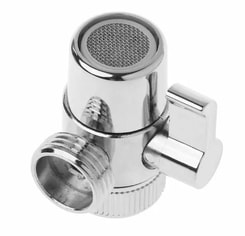 Photo 15: This diverter valve threads onto a bathroom lavatory faucet spout after removing the faucet aerator. An aerator adapter may be required depending upon your faucets manufacturer. It allows for temperature mixed water for use with the hand held toilet bidet. This particular valve was discovered on eBay and it had no manufacturer’s name or model number. Round or Elongated The second ‘thing’ yours truly wanted to mention is a factor to consider when your toilet bowl is round versus elongated. Back Shelf and rose-in-bowl free-standing bidets are, by design, longer bowls than a standard, round, 12-in. rough toilet bowl, allowing for hand movements. Instead of having the pre-positioned sprinkler or jet of mixed temp water from a standard bidet, or a ‘seat bidet,’ with a hand held bidet on a hose, you the bather must, by hand position, get the flow of water to where you need/want it. In choosing a hand held bidet ‘head,’ which bowl you have, round or elongated, can spell your level of success and enjoyment. Using a hand held toilet bidet is more physically challenging in conjunction with a round toilet bowl than with an elongated toilet bowl. In this situation size matters, in favor of modest. Definitely for round bowls but not excluding elongated bowls, depending upon your choice (size/bulk) of bidet heads, an open front with lid toilet seat combination (Photo 16) might be well worth the expense, allowing sufficient space to manipulate, effectively, your eventful choice of head. The case of hand held toilet bidet heads could prove a parallel with hearing aids: rarely is your first and even second choice the one you settle on for the longer haul. Be thankful again for the standard ½- in. female iron pipe connections on hoses, and the standard ½-in. male pipe threads on heads, noted above. This allows you to try as many different available heads as you desire. And, if you have satisfactory temperature desired flow rates, you might find yourself owning an additional head that is better suited for other tasks. Well, the author hopes he didn’t lose too many readers on the trail. For those who persevered though, he hopes you found it worthwhile. For all of us, I wish the quickest and safest end to Covid-19. Until Next Time, PtP Hello ‘In the Pipe’rs. Crab season (see upstream post) ain’t over yet but yours truly felt motivated to paddle ashore and broach a subject which he felt was very timely. (Salt water and cell phones are a dangerous pairing.) It’s a subject close to the author’s heart (but even closer to his anatomical sphincter). It’s a subject which PtP feels if not illuminated at this time, could cost the world public (those with flush toilets) even more financial burden than what they might already be suffering due to income loss from the fallout of the Novel Coronavirus, plus: clogged toilets and drains and the fees to ‘get them back on line’? This post takes a look at the dangers of substituting the wrong paper for genuine toilet paper. The author believes that at no other time in recent history is this scenario more probable due to present circumstances. First, there were the Pentagon Papers. Then we got the Panama Papers. And now, lo and behold, we have the Corona Papers. Who would have ever thought the corner stone of personal hygiene, toilet paper, would become the poster child of a 21st century global pandemonium. (Pete the Plumber once came to the rescue of a Mr. D.E. and family (frozen water pipes), so yours truly felt entitled to coin: Corona Papers.) According to the site: HistoryExtra, the earliest known record of using a form of ‘paper’ for this hygienic chore comes from China, in AD 589. However, it was a Yankee in 1857 (New York) by the name of Joseph Gayetty who first started marketing commercially packaged ‘toilet’ paper, Photo 2, below. His were individual sheets with our man Joseph’s picture printed on them. However the masses had to wait another twenty-years before the introduction of perforated rolls (and even then the occasional splinters were a problem). The ubiquitous, super soft, layered fare we know so well today was a twentieth century dream come true. Isn’t it ironic that in the span of about one month a disposable commodity selling (normally) for ‘peanuts’ suddenly became a new gold standard, one everyone clambering for. Our aversion to employing anything else (historical standby’s and Plan B’s) speaks volumes. Pete the Plumber (yours truly confesses) for years has harped to anyone who would listen that only poop and TP should be flushed down the toilet. This admonition served/serves a double purpose. The first concern involves drainage piping and the second concern involves septic systems and sewage treatment plants. Those inaugural individual sheets and albeit splintery perforated rolls are a far cry from today’s quite technical ‘bath tissue’. Today’s TP is made with short cellulose fibers. When the paper is deposited in the toilet bowl and becomes saturated, it breaks down (dissolves) into tiny bits. This assures that it will flow through the sanitary drainage piping without causing a stoppage (clog). The pliable nature of our poop (in most cases) presents little resistance to transit within the piping. (Japanese toilet designers use mochi dough to model human poop to test new toilet passageways.) Most other forms of paper are not made of short fibers designed to dissolve in water. As a matter of fact, household ‘paper towels’ purposely use longer, in-twining fibers to produce a paper resistant to breaking down in water. Paper towels, even if they manage to slide through the toilet passageway will hang up in the drainage piping because of their bulk. Homeowners who need pay the drain cleaning contractor learn this lesson early. Inhabitants of living space served by septic systems are faster learners than a populace served by municipal sewage treatment facilities. There are several concerns involving living with a septic system that the municipally franchised need not concern themselves with (mostly involving bacteria killing household chemicals). But the use of any papers not designated short fiber toilet paper is equally problematic to both types of sanitary system. “In the literature” the author has read conflicting accounts on the biodegradable-ness of short cellulose TP. Some claim it does not biodegrade. Others claim that ‘in time’, it does. As the author has been known to confess skipping chem lab, on too many occasions, he has no chops to question either camp. But, he knows of occupied dwellings operating on septic/leach that never need “pumping” or “additives”. This tells the author that a well designed, well fed septic system takes care of itself. Just don’t poison it. Biodegradable TP is widely available for those on septic who wish to “get the best mileage” out of their hard working bugs. A caveat: biodegradable toilet paper is not as soft as the standard fare. On a different note: Another one of Pete’s ‘hot button’ sanitary paper concerns involves the manufacture of products marketed as flushable. Flushable does not connote dissolvable or biodegradable. Sewage treatment plants end up having to operate sophisticated mechanical systems to intercept, then extract (tons and tons) of non-biodegradable trash. Flushables a majority among it. Then, more expensive rolling stock is required to transport the trash to a land-fill. Who pays the price of recycling what private industry designers concoct from non-degradable material? The City/County/State taxes it’s citizenry to pay the cost of ridding themselves of such garbage. (It’s just going to another spot of ground with a much lower property tax.) The old “vote with your feet” slogan, twisted by twisted minds to shout “vote with your butt” might be heard some evenings, now. The only way to stop and then reverse the “non green” solutions is to educate the public (the market, by association): “Do not make it with ‘these’ materials.” Cut the demand and you see companies rethinking former actions taken. Only then will we begin to reduce the amount of land fill for consumer non-biodegradable materials and lower the costs for sewage treatment. Which brings me back to my old slogan: Flush nothing but poop and toilet paper! For those interested, inexpensive, temperature/flow controlled hand held toilet bidets (served by lavatory faucets) are available for reducing TP usage. Where we end up our battle with the Covid-19 virus is anybody’s guess. But one thing you can be assured of is that tissue mills and paper companies are operating at full employment (with big smiles). How much longer the hoarding of the new, “soft white gold” continues, is an unanswered question. But the industries involved with producing America’s TP are, presently, enjoying robust order sheets. How fast the public stops panic buying and production falls back to pre-pandemic levels, we’ll see, first hand. The author had a couple of automobiles in his early past that used a roll of standard toilet paper as the filter material. (Photo 3) Would that design, after all the present hullabaloo has died down, be worth resurrecting? O.K. That’s it. The fish heads are beautifully stinky. The pot is baited. Short rod and surf rod lashed to deck. It’s back out with the tide, lamps lighted… Until Next Time, PtP GUEST BLOG:
Hello In The Pipers! The “old man” is taking a short break while he prepares his latest pipe dream project - a crab pot kayak! Hopefully all those years of chasing leaks means he won’t take on water and we won’t lose him to the crabs of Puget Sound any time soon. In the meantime, I have a little plumbing story to share with you all…. As a kid growing up watching my dad wrench on pipes, I learned just enough about plumbing to think I could do it too. That inherited knowledge has come in handy plenty of times over the years as a homeowner and later, as a general contractor specializing in residential remodels. With that limited expertise in my back pocket, it’s often difficult to resist the temptation of taking on some of the little plumbing fixes and upgrades that accompany our frequent bathroom and kitchen remodels to save some time and even money. The (good) plumbers in my market are frequently very busy - “you can’t fit me in until when?!?” and expensive - “you guys are billing over a buck and a quarter per hour now?!?” Hmmmm…. well, I have a set of adjustable wrenches too. Maybe I’ll just do that last minute faucet replacement myself and save us all some trouble. Ha! If only it ever worked out that easily. In this particular tale, we had just wrapped up our final day on a kitchen remodel for an adorable young family in San Francisco. Their condo conversion was on the 4th floor of a building that was presumably built sometime in the ‘teens. Mind you, that would be the ‘teens from 100 years ago. The project had gone very well, with only the usual level of surprises and cost overruns and they’d been perfect clients through it all. I knew they’d spent more on this remodel than they’d planned and had stretched themselves a little thin, especially with their second child soon on the way, but they were otherwise very happy with how everything had turned out. It was early Friday afternoon as the Mrs of the house and I completed the final walk through, exchanged the final payment check and said our final “thank you’s”. As she walked me to the front door, she stopped at the little “washroom” off the hallway. This cute and very original half-bath had been used by my crew throughout the kitchen remodel since we didn’t have space for a portable toilet down on the street. “Oh, wait….. I want to ask you one more thing before you go”, she said as she flicked on the washroom light and grabbed a box from the floor beneath the sink. It was a new faucet she had picked up someplace for “a song” and she wondered if it was a suitable replacement for the old, tarnished original. I opened the box and sure enough, it was compatible with the sink and would work fine. It was a tasteful modern interpretation of a classic widespread faucet and it actually looked really nice with the sink and would finish off their otherwise pristine half-bath. I was quite pleased to have their project all wrapped up and taking on one more item didn’t exactly thrill me. But I would also never leave a good client hanging, so I contemplated the next move. Getting my plumber back out for such a small task wasn’t going to be easy, cheap or convenient and the more I looked at that gleaming faucet, the more invested I became in seeing it installed. I then realized that the tool kit in my truck had everything required for installation and in that moment it became impossible not to offer to swap it out for her myself, as a parting gift on a project that had gone so well. Should only take me about 20 minutes! I’d be home before the Friday commute even began... Well, I’m sure at least a few of you have heard the old maxim, “a good deed never goes unpunished”. I probably should’ve taken a closer look at things before offering up my help, but I didn’t recall anything out of the ordinary about the old sink or faucet. And the only unusual detail on the new faucet was the factory-installed braided stainless steel supply hoses, but they had the garden variety, female ⅜” compression fittings that we use all the time, so I figured -- no problem! Well, things got off to an unexpected bumpy start right away when I first tried to shut off the water to the faucet. The old angle stops below the pedestal sink were as original as everything else in that bathroom and not like anything we install today. They were thick, smoothly polished & plated castings with chunky 4-cross handles. They looked like they belonged on a steam ship or an old submarine. And they were quite impossible to turn! We had learned during the kitchen remodel that the apartment didn’t have its own water shut-off, so if I couldn’t get these angle stops to work, it would mean shutting down all 6 floors of the building. And that would mean a 24 hour notification to the other occupants, a return visit, the usual gripes and grumbles about inconvenience, plus the very real nightmare possibility of dislodged scale and crud from the 100 year old pipes clogging faucets, shower heads, dishwashers, washing machines etc. throughout the whole 12 unit building after the water came back on line. That was a nightmare scenario I was not prepared to endure for “a favor” and I was beginning to worry that I would have to renege my offer. Then I remembered an old trick I’d learned from my Pops -- Pete the Plumber. We all know how plumbers use their propane torches to sweat copper pipes, right? Well, they come in handy for so much more: thawing icy pipes, cleaning gunky tools, warming cold, leftover pizza, to name just a few. I own a plumbing torch of course, but didn’t have it with me on my truck so I asked the lady of the house if I could borrow the next best thing - a hair dryer! It took a good minute to warm up those hefty angle stops and soften the hardened stem packing, but it eventually did the trick. The heat probably softened the crusty old rubber washers too because lo and behold, those ancient angle stops still managed to shut off the water to that old sink. It then took me less time to remove the old widespread faucet and rigid supply tubes than it did to shut off the water. Should take just another 15 minutes or so to get this faucet installed and I’d be on my way home for a cold beer and a satisfied early start to my weekend. But not so fast! While I was wiping crusty (heat-softened) pipe thread compound off of the old angle stops, I realized I’d failed to take notice of the larger outlet size. It was noticeably bigger than the ⅜” fittings on the new faucet supply hoses and coarse thread to boot. Since I couldn’t swap out the swaged-on factory installed hoses, I would need a step down adapter for the angle stop. No problem, I thought. These looked like ½” coarse NPT thread. A quick run to the ‘Big Box’ for the parts and I’d be able to wrap this up before traffic got bad for the ride home. I’d also pick up a small tube of clear silicone for the faucet bases and a roll of teflon tape while I was there. Have you ever gone to the ‘Big Box’ hoping to find something a little out of the ordinary? A: it doesn’t exist. Or B: it does, but the young kid working that department doesn’t know what you’re talking about or where to find it. Or C: they do have what you need and the computer says they have 14 of them in stock but there is only one in the box on the shelf when you need at least two. It was scenario ‘C’ that day. Luckily, the other nearby ‘Big Box’ answered the phone and was able to confirm they had some more on their shelf. So after a little detour I had the two “BrashCraft” ½” FIP adapters in my hand for less than $4 each. At least I was in and out of that second “Big Box” in less than 20 minutes! Friday afternoon traffic congestion was starting to pick up and when I finally returned to the job it was pushing 3 o’clock. I confidently told the Mrs that I would be wrapped up and on my way in another 15 minutes or so. I could almost taste that beer waiting for me at home…. Alas, I would have to wait a little longer for that refreshing beer. Out of habit, not doubt, I did a quick test fit of the adapters on the angle stops before applying teflon tape to the threads. Hmmm…. these are WAY too loose. No way the teflon tape is going to take out this much slop. Dang, these adapters aren’t going to work at all!! What gives?? I’ve never had problems with “BrashCraft” stuff before. No, it was those old angle stops -- they were some funky size between ⅜ - ½”. So what to do now? Accept defeat and reinstall the old faucet? Too embarrassing. Try and find some way to connect old-style rigid supply tubes to the factory flex lines of the new faucet? This was all exposed - that would look awful and ridiculous. Replace the funky old angle stops with new ones? Remember the nightmare scenario -- no shutting off the building -- certainly not on a Friday afternoon. Dang… it’s time to call Pete the Plumber for some advice. Hope he doesn’t have his head stuck up in the bow of his kayak and he can hear his phone. Turns out he did have his head up in the bow of his kayak, but fortunately for me he was using his cell phone as a flashlight and was able to answer. Before I finished my second sentence, he knew exactly what I was dealing with. He interrupted me, “Those are American Standard angle stops. They’re 7/16” coarse thread and not ½”. They used to sell adapters for those if you can still find them.” Needless to say, “Big Box” didn’t have any such adapters. Neither did the last few remaining neighborhood hardware stores not already pushed out of business by “Aces” or “Big Box” and more recently “Amazonian”. Quite desperate now, I was on my phone Googling anybody that might sell plumbing parts. Shockingly, I discovered a previously unknown “WB Plumbing Supply” located just 10 short blocks away from the job…A quick phone call and finally the words I wanted to hear, “Yeah, we got ‘em. We’ll be open for another half hour. We’ll leave two up at the counter for you”. “20 minutes” had now turned into nearly 4 hours, but I finally had that new faucet connected and just in time for the “crawling” Friday evening commute. If only I’d known about those old American Standard angle stops and their unusual thread size, or realized that small, family-owned plumbing supply stores still exist in SF’s neighborhoods, I could have started my weekend hours earlier. But it also could have turned out a whole lot worse (an embarrassing retreat, or the nightmare of clearing dozens of clogged faucets throughout the building). This was a useful reminder of the invaluable expertise and knowledge you get from your professional plumber and the dedicated stores that serve them. Without our active support to keep them both in business, stories like mine might not have had such a happy ending... Thank you all for reading my little yarn! As I mentioned before, Pete the Plumber has been crustacean-obsessed lately and is presently spending most of his waking hours doing critical ocean-duty kayak modifications before the crabbing season closes. After some well-deserved “rest” in the brine and with luck, a belly full of hot buttered crab, he will return to his regularly scheduled In The Pipe duties. In the meantime, if you should need to reach ol’ Crab Claw Pete, feel free to send him a message. His “flashlight” receives email… Cheers! Daniel Hemp Bayward Builders Welcome back. Everyone survive the turkeys and cranberries? PtP was moving a little slower in all the snow but happy to share with you again.
In his last post the author had some things to say about stoppages. And/But, he’s never sure what most readers would prefer more: the shortest possible, immediate dive to the hard truths or a rambling cornball infused story via plebeian spin. When nearly completing Stoppages the author rationalized: Well, it’s still a lot shorter than the one on choosing and installing basket strainers. Haven’t gotten any complaints for that one, yet. So, methought, this time, I’d take another chance. PtP has chosen to tell you about his discovering (at the time) a novel, highly promising (stoppage related) drain cleaning device; and, how much deep doo doo he promptly got himself into upon its first deployment. Yes, this is that ‘funny’ story Pete so mercifully spared you from at the end of Stoppages. Like his father used to tell him: “Don’t finish your dinner? You know what’s for breakfast.” (Turkey and cranberries?!*#) Drain Serpents The author remembers how interesting some factory rep’s new display on a Will-Call counter appeared, even from way off. Closing the distance to the (perennial) big pink box of doughnuts (near), Pete could see the open, threatening maw and beady glowing blood-red eyes of an anaconda. It was rendered within the requirements for plausible. (As an adolescent the author used to catch and trade in snakes.) This scary dude’s head seemed to protrude off the top of a self-standing poster/display (near eye level). The printed background of the poster at first appeared to be a jungle scene. It made it look like the serpent was reaching right for you, menacingly, from inside a pipe. Then the author had to laugh. All the jungle trees and foliage were assemblages of cleverly rendered pipes and fittings, but so well executed that it could have come from Disney Studios. A yellow plastic, faux bamboo tower-works, (cubby holes), rose up from the display’s base almost two-thirds of the way to Mr. beady eyes. This cubby rack was separated in the middle by a ‘waterfall’ of ‘tug free’ overlapping handbills mimicking a waterfall. In each cubby was a genuine Anaconda Industries Ltd., SA, PLC. Drain Serpent. Two sizes: one for 1&1/2-in. to 2-in. drains and another for 3 to 4 inch drain lines. The folding, full-color hand bill/brochure showed a handsome ‘thirty-something’ attaching a Drain Serpent to the end of a garden hose, then inserting it down a clogged shower drain. Also represented was a pair of hands, turning on a hose bib. Following this in an even bigger rendering, one saw a blast of brilliant, chrome-blue water obliterating a blockage (of undetermined origin) in the drain (smiling plumber in coveralls). (Next to was a smiling heroine in bath towel (ruby red lips). Did Pete read the whole brochure? Do men read instructions? “I’ll take one of each of these Richard.” (The author was positively sure that some smart person/people had a dynamite idea and their invention was going to save PtP lots and lots of time.) (And his customers a lotta bucks.) View From The Top Manufacturers wrestle/hustle for the privilege of hawking their wares, under plumbers’ noses (on the Will-Call Counters of Wholesale Plumbing suppliers.) Those lucky-enough-to-be-there displays have served two purposes. During rush business hours it gives (hopefully) the impatient in line something to keep them entertained while awaiting their turn to belly up to. The second angle is (hopefully) the hand bill will leave with a customer and like dandelion seed blown from a stalk, end far and wide and possibly germinate a/an additional sale. (If the convincing artwork doesn’t end up a mashed mess on the floor of the cab under the brake pedal.) (Like so many perished in Pete’s rigs). Homeowners and plumbers, alike, have historically tried or succeeded in introducing garden hoses into clogged drains. And, with pressurized water, many forced open blockages and flushed them. The author had carried several hose coils of different diameters and flexibilities just for this purpose. But now, according to this new jungle display advertising, ole Pete just had to stuff a properly sized Drain Serpent into an open San Tee branch or drain and turn on the hose bib! Yea! House Pressure Hydro Rules! Well when Pete did eventually try out a Drain Serpent, this wasn’t what really happened. That isn’t quite how it worked out. Two interrupting factors tripped him up. One was a topic briefly mentioned in the previous blogpost and another was a topic of much ink in Plumbing A House, neither of which pried their way into Pete’s consciousness, in time. Any fly fisherpersons amongst the readership? If so, you then know how that newly tied/purchased/gifted ‘special fly’ (Lefty’s Deceiver?) can drive someone mad, waiting for “opening day” to be able to fish it? Well, that was sorta what Pete was feeling when he was anticipating using one or both of his newly acquired Drain Serpents in actual battle. Ohhhh, the agony. Following the purchase, for week in and week out: no stoppage calls. “This can’t be.” Well it was exactly that for a couple of months. (Pete should’a been really happy.) It’s not that PtP likes cleaning drains. He’d really prefer to have a one year minimum between calls. (This particular new Serpent itch however, having spent the months & money, and then hoping a call would soon vet his decision/conscience (for making the purchase), got more acute as time marched on.) “All This Will Pass”. Yes. Thankfully, with its ever slow passage, the issue eventually lost its first place in concerns because of any number of other really pressing responsibilities, fully/always occupying the author’s ‘peripheral’ conscious state. Neat Junk Now, at this ‘Drain Serpent introduction time’ of Pete’s career he reasoned there were still going to be needs/desires for all of the real ‘neat junk’ that presents to plumber’s in general, and expressly to Pete, through the trade. Things like 1890’s flash coil hot water heaters, piano’s, chandeliers, tools, welders, lathes, drill presses, appliances, bicycles, carved teak chests, antique lamps, antique radios, etc. etc. etc. Stuff people finally tired of hoarding for decades. All of a sudden it’s a: “…deduct $$ from your bill and please haul away.” (The all time champion was Pete’s super/neat/great/wonderful/fabulous discovery he mentioned in his children’s tale: Pete And Coco Save The Day. It was so special that thinking about it gives him the jitters (pleasure). Pete’s ‘corporation yard’ these years would have been a good film set. (“Sanford and Son”?) (And It was not without a little pride.) Then, the author used to cruise several local emporiums of ‘juntique’ just for the pleasure of it. Pete would occasionally spy articles of a plumbing nature that he could see benefiting one of his long time clients, and he would barter for it with items of his own ‘collection’ (meager by comparison). One such entity of the author’s jealousies was ‘Mack’s Antiques’. Mack had a 1/3 rd. block ‘gallery’ on a major thoroughfare in a prosperous business district. Mack and his wife and young son lived in a big Berkeley ‘Victorian’ on the corner of a leafy, ‘South Campus’ neighborhood. Pete and his wife Katherine also belonged, at the time, to the same babysitting co-op as that of Mack and his wife. To put it comfortably, Pete and Mack were “paisanos”. On To The Eye Of The Storm One Saturday morning the author’s office got an emergency drain clog call. Pete was on his usual stool at the Homemade Café. Every morning without fail, sometimes seven days a week, at 7:00 AM a double-latte would silently be placed before him, silverware and napkin were set, Shirley would ask: “The usual?” More often than not it would be a flirting-friendly: “Sure Lady.” But sometimes, Pete would ask for something not a menu item. He had some fantastic combos, like: four egg, Swiss, blue, guacamole, bacon, and pesto omelette, or six poached ‘swimming in Hollandaise’, with side of ‘sour dough’. Or, a crab/lox/pesto 4-scramble and toast. Also like clockwork five days of the week stoolmate ‘Dr. Fred’ (Conrad) (Toothman), would glide in fresh from a 2k meter sculling (Berkeley Rowing Club), order his fruit bowl, oatmeal, and double-order of brown bread toast, chuckle, and begin a story. He and Pete had exactly thirty-seven minutes to commiserate before Doc had to be heading for his office. The Good Old Days? You bet! The author would put his lunch-to-go order ‘in’ when Doc vacated his stool. This was long before cell phones, though Pete had a beeper. Calls would be taken by wife Kay in the office and depending upon the nature and seriousness of the request, she would either deal with the client: notes that could wait until day’s end, or if a super pressing need arose, it was beeper time. Pete hated having to slide off his breakfast stool and go get in his truck. How much coffee and coffee cake could one consume before it was impossible to hang any longer? Go it must be. Well, one particular Saturday the beeper beeped (terminated breakfast) and PtP checked-in. Kay’s reply: “Mack has a clog emergency. I told him I’d get you right away.” The news was what PtP had been waiting to happen. “Oh Man! Just maybe!” then flashed in the author’s brain. He could maybe use one of his new Drain Serpents! (And PtP with much ease was able to fit Mack into his schedule, mid-day.) Good Vibes In a way, if the stoppage had to happen, this particular time was made for it: ‘Mrs. Mack’ and son were out of town. From the client’s front door the author followed his friend. “Oh Pete, thanks for coming. After doing breakfast dishes the sink wouldn’t drain.” And then, heading on to the kitchen: “Hey Pete, before you get going on unclogging the sink, got time for a cold one?” How could the author have replied no? After some small talk and the brew, in Pete’s cabeza, it was: Yes, this situation looked like the perfect application for a Serpent: soft foods scraps. Mac’s Victorian house had ten-foot ceilings (with fancy shapes and symbols of antiquity, in zinc), tall, big, stained/wavy glass windows, and the kitchen was cavernous. The dining room (on the way to the kitchen) reminded the author of Hearst Castle: tapestries, opulent drapery, oriental rugs, columns supporting sculpture, long, carved sideboards, carved wine cabinets, gilt framed paintings, and large, elaborate, swinging doors to the target of our call, the kitchen and the offending sink drain. Battle Site Due to my client’s business acumen Mack was able to furnish his home to his liking, and it wasn’t modern, but all real cool (genuine) stuff like you’d see in old black and white movies. Mack’s sensitivities. The kitchen sink was a gorgeous cast iron, three-bowl wall-hung with legs. There were two really fine Chicago wall hung KS faucets. The continuous waste (“tubular”) for this sink was all 17 gauge with solid brass slip nuts. No ‘frick’n’ cabinet doors to have to mess with. Pete the Plumber thought he’d “be outta here in half an hour.”* This, thanks to his new assistants: The Serpents. *The BEST EVER advice this fossilized plumber could give the world: Whenever assessing a plumbing repair and you hear/find yourself thinking (or being told): “I aught to be out of here in a half’n hour”, there’s an increased chance that that job could give you one or two ‘black eyes’. Talk to someone who has ‘been at it’ for decades and you’ll hear some real doozies (‘war stories’) to support the author’s claim. (Even publishable? by others?) The Decision As PtP made clear in his website tale: “Me and Angie”, he had a ‘thing’ about hoses and in particular: garden hoses. Quality underwrites performance and longevity. Pete’s truck was well supplied with them. After perhaps an anemic assessment of the clog complaint Pete felt more encouraged to give the Serpents a go. So (fatefully) it was: “Eh Mack, I got just what we need for this job.” Pete casually coupled the necessary yardage of his onboard hose to span the distance from “the best” outside hose ‘bib’ (faucet with hose threads) and the San Tee under Mack’s kitchen sink. Upon the author’s request (for passage) Mack opened one of the swinging doors (and with the fancy bronze toe hardware for that duty) set the stop. With hose lain at the ready and with the continuous waste out of the way, Pete, on his knees, inserted the Serpent into the San Tee’s breech. “O.K. Mack, you go and turn the water on and count to one minute and then shut it off.” This Mack did. Pete then removed his Serpent and re-assembled the continuous waste and opened both the hot and cold on the wall hung faucets. Expecting a fast drain time, Pete was very pleased to witness the next thirty seconds or so. Then it was “Oh no/Oh boy, gotta do it again, for longer.” The water began climbing out of the basket strainers and forming pools in the bowls. Waiting several minutes, the water was once again “outta” sight. Reluctantly, once again, the author took down the “tubular” and re-inserted his Serpent and Mack was instructed to let the water run for a full five minutes before turning it off. On this second ‘time around’ Mack again stayed at his post, governed by his wrist watch. And, after this second ‘blast’ Pete then quickly re-assembled the tubular waste and resumed faucet flow for a second test. After a full minute, once again, the devil reappeared. Egg On Face At this juncture the author was sincerely embarrassed by the failure of his attacks and his choice of weapon. Thoughts of: “Should’a got ‘the 3/8ths’ (powered mechanical snake) instead” were now mocking. After several deep breaths and before he’d let himself totally surrender, the author decided to give it “one last shot”. “O.K. Mack, this time we’ll do it again and turn’er on and let ‘her’ run for twenty-minutes.” Which the two Paisanos did. Twenty minutes for waiting was a long enough spell for Mack to wanna “do the time” in the dining room: “ Hey Pete, while we wait, how’s about another cold one?” This the author and his “paisano” did. At the twenty-minute mark though, the author was enjoying himself SO much that he decided to let the water go for a full half-hour instead (resulting in another, you guessed it: ‘cold one’). That, as following examples of applied physics proved, was not a good choice. The author and Mack had done their gossiping/imbibing at the dining room table. The ‘inducted to duty’ Dacron fabric reinforced, one-inch, all rubber, ‘contractor’s’ hose passed by and right up to a couple of chair legs. Upon the finally agreed time, Mack, back at his ‘station’ again, turned off the hose. No! This Isn’t Happening! Whoa!!!!!! Who would have thought! The instant Mack did what he was asked, Pete’s ‘reptilian hope’ (following a loud, soggy bang!) came jetting out of the drain, flying out from under the sink, landing with an ignominious thud five feet out on the kitchen floor.. .A horizontal, solid stream of water, 1½-inches in diameter shot out of the KS’s San Tee branch, and crossed the entire kitchen floor, airborne. It passed unopposed through the opened half of door way, and whence in the dining room chose to dive under the edge of the big luxurious carpet. “Oh S**t !!!!! T’was TOTAL SHOCK! NUMBING… In a flash the opulent carpet appeared to come to life. As more water continued diving under, undulating woven waves lifted and fell as if squirrels were running all around underneath. The frilled edges were flashing on agitated waters. (This instant, plus one more previously mentioned in an upstream blog, were life influencing.) The water ran everywhere, into the living room and hallway too. The author’s immediate reaction (movement) remains an ‘unanswered’. (Same syndrome PtP experienced in Me and Angie.) This time, he just remembers awakening in terror and rushing around madly. Furniture to rescue, rolling soggy carpets, dropping drapes, fans, and hours and hours of floor squeegees. The water had even drained down the floor registers of the furnace and flooded it. What caused the now shocked and humiliated Pete’s Serpent-failure, aside a good dollop of poor judgement? “Just soft food scraps?” At the Root of the Problem In conjunction with the author’s bad ‘call’ was what should have qualified as a ‘four letter word’: roots. They proved the devil. As the author mentioned in Stoppages, at times, DWV clogs can form anywhere from San Tee branch to way downstream in the MBD (Main Building Drain). In Mack’s case the Sewer Lateral, outside the house was the culprit. It had been taken over with roots. The entire lateral was a mass of roots, finger to tiny. Mack’s breakfast food waste that morning was what broke the camel’s back. PtP’s first two attempts using house-pressure water to clear what he thought was a branch line problem instead delivered and positioned the offending food scraps and then compressed them into enough filtering roots to stop almost all flow. The longer the author left the hose charged, the greater pressure he was applying to the clog, as the increasing water had nowhere to go but back higher up in the DWV system. With the waters increasing volume its weight also increased, applying ever more pressure on the weeping clog. If the Serpent hadn’t blown outta the drain, every minute longer it ran would have proved more disastrous. With sufficient run time the water would have climbed high enough to have overflown the toilets and tubs. And, probably would have run on for some time before detection (compounding the water damage). (The accumulated energy in the laterals compressed root system may have even contributed to the power of the discharge?) A second black eye (as noted upstream) was having to service the furnace. Mack had an extensive ‘scorched air’ floor grill served system, with of course those of the fancy, Art Deco bronze kind. (Never before saw such fancy drains.) What did PtP learn from this mistake of judgement and resulting disaster? Let Serpents reside in the wild, and/or stay in their vivariums. When a need arises: Stick to snakes of coiled steel… Final Word (Thankfully, Eh?) Quite interestingly, Pete and Mack remained paisanos for years following, until Mack and his wife retired to a villa in Italy. PtP End Note With this tale told, the author would like to announce that he will now take a hiatus from his ‘In The Pipe’ missives. He has decided to pluck a couple of low-hanging, high priority Bucket List pleasures. (Having to do with fishing). However, thanks to our “electronic devices” PtP won’t be far off. Happy he’ll be to answer any questions through these marvelous technologies while he’s in the chase (and return even more grateful and ready to pick up the quill). Remember, until next time: “No wooden nickels.” Pete the Plumber As PtP has mentioned in past writings, Thanksgiving is for Plumbers/Drain Cleaners what Black Friday is to retailers. ‘Our’ (actually your) stoppages are their televisions. Plus, during/every Thanksgiving family feast, we know there will be, somewhere, too many volunteer kitchen hands (for the size of the kitchen), with fingers moving too fast. Poor kitchen sinks. Poor overworked now-dead disposers, poor folks. This is the major event, this is the biggest lesson on discovering the ‘red button’ on the bottom of the disposer. However, family-centered plumbers, at home, on that day, would gladly forgo the opportune wages so as to remain free, to enjoy the company. (I wonder if ER physicians and nurses feel something similar.) But, we push away from the table, put on our coveralls, grab our caps, and go to someone’s aid (because most often it’s one of our dear, longtime customers). Because it’s that time of year, again, the author picked a topic he thought was timely: Stoppages. Since man has been sending water and waste (human and otherwise) down piping, stoppages have been a bane. (This is primarily the case for drainage, but supply, at a utility level, can also have its moments.) In this post PtP will give you his ‘overview’ of the topic, as they pertain to residential structures. This will not be a ‘how-to’ session to unclog drains. (That would be a book in itself.) Here the author aims to isolate and illustrate the common stoppages people experience with residential Drains, Waste & Vent (DWV) systems, inside walls, under floors and in ceilings. We will also take a look at Continuous Waste stoppages: involving piping connecting sinks to drain lines at the walls. (Garbage DISPOSALS included.) This is followed by stoppages involving bathtub waste and overflow (W&O’s), Shower Pans, and lavatory basin Pop-Up Wastes. Lastly, we’ll take a look at stoppages of the toilet. Pushing Off and No Rocking-the-Boat Photo 1 is a drawing snatched from that wonderful book, “Clean And Decent”, by Lawrence Wright. This screenshot illustrates some very sophisticated pipe technology from about 4,000 years ago. What the author here wishes to share with you is this: this piping design is self-cleaning! The Minoans, the inventors, had an extremely advanced culture dealing with plumbing and sanitation. Skipping ahead to the present, our DWV stoppages occur for two reasons: the piping is not/no longer ‘sophisticated’ enough to do what is asked of it. And/or: its physical condition has suffered so badly since the time of installation that it needs to be repaired or replaced. Pete the Plumber over the years has had the honor of plumbing many ‘top drawer’ edifices where he was tasked with creating the best plumbing systems the coin of the realm could produce. Not exactly Carte blanche (“….we trust your judgement…”). PtP’s ceaseless DWV goal was to create a system of: ‘Never A Stoppage’, a system that occupants never need worry about experiencing a stoppage. Did this cost more than any other code approved method? Unquestionably. A lot more? Not necessarily. Plastic (PVC and ABS) DWV systems can be assembled quite quickly when compared to those of DWV copper and no-hub cast iron. Sometimes due to story height regulations, a community will not allow ‘plastic’ above a second story (fire hazard). But code approved ‘hybrid’ systems (a mixture of two or more DWV possibles) are still much faster than an entire cast iron or copper system, which is also greatly reduced in price compared to copper and iron (pipe and fittings). A proficient plumber knows how to “take the extra step” and create a superior job with only a modicum increase in charges. Alice’s Mushroom I was a little boy. I can’t say the exact age anymore, maybe 4 to 6. But, methinks “Alice In Wonderland” would have been a prevailing influence on me then. I remember watching my father and grandfather plumbing some drains on the farm…I was mesmerized by the fittings, how smooth and heavy they were. I have a hunch that Alice’s magic mushrooms came into play. I was soon envisioning myself like a tiny bobsledder, flying along inside the ‘dad’s’ pipes, sliding and twisting, dropping, dropping, dropping…swishing this way and that through the fittings, in pitch blackness. Flying along at those speeds you wouldn’t want to meet up with a stoppage. If Only Tradespersons (all disciplines) applying their skills to a brand new structure, have the singular opportunity (if they so choose) of doing the ‘little’ things that make “all the difference in the world” in the efficiency of their creations. The extra cost for this level of service is usually the difference between a low bid and one of the top three. For the life of the structure, though, the extra cost is ‘peanuts’ for the extra measure of workmanship attained when weighed against the cost of drain maintenance. For example, Photo 2 is another screen shot, one from “Plumbing A House”, Pg.127. A HUGE advantage for attaining ‘no stoppages’ is running every possible drain line individually, as PtP did in the drawing. The kitchen sink, the lavatory bowl and the shower connect to the main building drain as single drains. When branch drain lines must attach to other branch lines (for architectural anomalies) on their way to the main building drain (MBD) PtP, when possible, increases ‘downstream’ pipe size (code required or not). Also try not to join laundry machine and tub/shower branch lines. (We will get into the reason why further downstream.) And, most importantly, when ¼-inch per foot fall is maintained on ‘horizontal’ drainage lines, the risks of a stoppage are reduced. It has been determined that the ratio: ¼-in./ft. is the most efficient degree of slope (angle) for successfully transporting solid waste in ‘horizontal’ drain lines. Any steeper and the liquids race ahead of the solids. Too little slope and the needed volume and velocity of the waste water to carry solids, slows to the point of stopping, and oops…a stoppage. Repair work performed on existing ‘mature’ DWV pipe systems can be a lot different than installing new versions in either a new building or a remodel project. If the plumber of the original structure did ‘only- enough-to-pass’ (inspection) level of workmanship, sometimes, plumbing-wise, succeeding tenants/occupants will unfortunately have to be inconvenienced in both lifestyle and budget by the cost of drain cleaning contractors, sometimes on a maintenance schedule. As the author quoted from the Uniform Plumbing Code (UPC) in his book “Plumbing A House”, the Code is a minimum level of workmanship. A well designed and executed plumbing system is the mark of a plumber’s plumber. And, if you live/lived day in and day out, for years, never having to even think about stoppages, you can bet a few extra ‘extra-steps’ were taken by your installing plumber. DWV Stoppages Is there any one fixture responsible for a majority of stoppage calls? The author cannot claim he knows. Consumer grade/wide versions of toilet plungers (plumber’s force cups*) stand near a whole lotta toilets. But there’s no other specifically designed one-piece hand-operated ’un-stoppage’ tool for showers and or tubs and sinks that doesn’t require taking ‘piping’ apart. Is that a clue? Whatever is the case for those on off-the-ground foundations, let’s ‘first shine a light’ on the main building drain (MBD) the biggest drain in the structure. The ‘sewer’ lateral (pipe) is not found under the structure. It begins two feet away away from an outside wall of the structure. *Force Cups are commonly employed on tub and tub/shower stoppages and on sinks when their shape near the drain opening permits. Have you off-the-the-grounders (OTG’ers) ever ‘given a look’ at your structure’s main drainage lines? Are there any noticeable ‘sags’ or sagging at branch fitting locations? When the installing plumber creates an off-the-ground drainage system he/she is required by code to support their piping every so many feet, both horizontally and vertically. This support distance differs between pipe size and material composition. Schedule 40 PVC pipe is much heavier than Schedule 40 ABS pipe. Such a basic exercise (supporting piping) has a really big part to play in future, trouble-free operation. “Never too many straps” is Pete’s mantra. It’s the same for buried pipe (slab). Here, backfilled earth is supposed to provide support for plumber established grade, on piping. If/when the ground shifts enough, the MBD system can sag. Even inspected and ‘signed-off’ systems can have flow problems over their lifetimes. Just a little sag in horizontal lines, over time, can create enough ‘left-behind’ residue to slow down drainage to the point of a stoppage (Murphy’s Law: at the worst possible time). Clearing stoppages occurring in drains and wastes supplied with convenient cleanouts (CO’s) are much easier to manage than the ‘take-apart’ or ‘cut-into’ solutions. Pre-history When PtP entered the trade, DWV for residential construction was bell and spigot cast iron, joined with compressed oakum and poured lead. Support for this pipe material was ultra important because of its very heavy weight and its wont to sag at unsupported joints. Many buildings still providing habitation were plumbed with ‘corked iron’ (bell and spigot/lead and oakum), Photo 3. It’s not only drainage piping that can ‘sag’. When a foundation fails, (quite common) piping hung from now-sloping floors, ‘sag’ or shift along with the structure. Bell and spigot cast iron pipe was especially prone to horizontal sag when buildings failed to remain plumb and level. Stoppages can be attributed to both negative and excessive slope on runs. The author commonly sees broken and missing support straps and brackets when crawling under buildings, which afford both situations. For someone faced with too often-a-need for an in-house MBD drain cleaning service, in a building with an “off the ground” foundation, the author would first suggest checking for proper slope on the MBD. Those with slab foundations and ‘snake-camera’ friendly access to the MBD, can perform inspections from the inside of this largest of drains. Pete sees an analogy between old people’s arteries and the sanitary drains of old housing. Both tend to clog up with age. Another analogy is the fact that what coursed through their ‘veins’ had an effect on their longevity. Homo sapiens sapiens, aside from clogging their own arteries with junk food, are known to disregard what (other than human waste and TP) they rid themselves of, via the sanitary drainage system: toilets, tub/showers and sinks. The author (now) is never surprised at what he might find (plumbing-wise) in built residential plumbing situations. But, proper pipe sizing, installing and maintaining proper fall on horizontal drains should be the first concern for attaining “Never a Stoppage”. Want to hear a funny story? No? Well…if you don’t, please skip ahead to The Small Stuff section below. When the S**t Hits the Fan One day PtP got a clogged toilet call. The gentleman Pete spoke with had just finished adding a bedroom and a bathroom in the basement of his old house. “We can’t use the toilet…could you come and look?” “OK” I told him…“How about I squeeze you in, late on my runs.” Upon arriving, and with greetings exchanged, PtP was led to the basement. The new bedroom was quite cute. The bathroom, yours truly, was not prepared for. It was more a large closet, where in one corner it was three high steps to the toilet, set atop a plywood ‘pyramid’. “Oh my!” I remember thinking (and maybe even audibly?). This was a brand new vision for PtP. Although outlandishly impossible, I had to chuckle (internally?) and admire the scope of this man’s imagination. The sewer lateral for the existing house (which a new toilet would need to join) ran in the ground, parallel to one of the foundation walls comprising the toilet corner. The owner’s loo was supplied water via an interior, wall-fastened Schedule 40 PVC pipe from an existing laundry sink bib fifteen feet away. This newly installed toilet’s outlet however was still more than a foot lower than the outside, in the ground sewer. Interesting follow-though. He was faced (in his mind) with how to run his combined toilet and wall hung sink drain line either over or through the thick foundation wall, and, how to connect to the sewer lateral in the ground. (That’s why he called the author.) The client assumed, because he was going to be pumping his waste, that he could use smaller diameter pipe: 1½ inch ABS. That is smaller than the two-inch regulation size for a proper sewage ejector and basin. The client was hoping Pete would vet his design and help with the last phase, ‘connecting’. Across the inside wall, for several feet on one side of the pyramid, ran a 1½ in. ABS plastic drain line for the new, small, wall hung lavatory basin. Our amusing fellow poked this drain into the pyramid and then joined to the owner’s ‘brilliant’ waste “pumping” system. What was so brilliant about it? Well, there was no pump in the pyramid. There was no basin in the pyramid. But there was an installed and wired garbage disposer in the pyramid. A garbage disposer! A cheap ‘tract’ model, secured to the toilet outlet. Our amazing old guy thankfully hadn’t been able to make his final connections before my visit. Pete was really sorry when he had to pop that bubble. And the shame? Today that homeowner could have a composting loo without the need for utilities and he would have made ‘home’ for someone else. The Small Stuff Upstream, the author recommended that laundry and tub/shower drain lines, whenever possible, should not be joined. PtP will now tell you why. Most readers, I assume, are aware that automatic clothes dryers produce a modicum amount of ‘lint’ (fibers) in the lint trap as clothes are dried. Well, there’s almost as much or more ‘lint’ going down the laundry drain with each cycle of the washing machine. All by themselves these ‘fibers’ wouldn’t be much of a concern for properly sized ¼” per foot drains…but even better would be ‘home run’ drains to the MBD. However…when you think about what is the effluent of tub/showers (aside warm water), it’s an “Uh Oh” moment. All manner of chemicals and compounds are applied to human bodies before/as they bathe. Shower and tub/shower drains (depending upon lifestyles), can/should leave only an immeasurable amount of particulate/residue behind (to add to an ever building inner layer of “sludge”). Now, that’s a big enough concern all by itself, but WHEN you mix ‘fibers’ and ‘sludge’ together, over time, the ‘liquid’ waste, in some cases, can be described as “liquids on steroids”. Or, “pushing the definition of liquid.” What was once a pipe diameter the thickness of your arm, eventually, has the inner drainage diameter of that of a broomstick. To clean out sluggish, joined, ‘minimum code’ laundry and tub/shower drain lines, in habituated space, is somewhere between “Well, let’s see” and a nightmare. For only a few more shekels spent on the DWV installing plumber (CO’s) this problem might never have arisen. On ‘off-the-ground’ foundations original mistakes sometimes can be reversed, or at least ameliorated. For first/single floor ‘slab’, like the present majority of new housing in suburbia (tract), any below grade ‘committed sins’ are ‘cast in stone’. Pete the Plumber’s got his jackhammer. But, “We both don’t want to do this.” Sometimes architectural anomalies (for both new and remodel) can throw ‘the wrench’ into an otherwise ‘perfect job’. In these cases we can only try to give up as little as possible, and minimize the the inconvenience of a future stoppage with well-placed cleanout accesses. Photo 4 is a top view of a hypothetical main building drain layout suggested for slab, with conveniently accessed cleanouts. Page 134, “Plumbing A House”. (This would also apply for minimal ground clearance ‘off the ground’ foundations.) Photo 5 from “Plumbing A House” illustrates a lower, super-handy, cleanout tee and threaded plug for a lavatory basin drain, page 150. Photo 6 shows a cleanout tee and threaded plug for a kitchen sink installation, page 152. If it took the plumber an additional ten minutes of labor time, at $150 per hour (for each fixture) and a cleanout fitting expense of $10.00 for each fixture, you’re looking at a sum of $35.00 difference, for each installation, for a guaranteed savings of hundreds of dollars for having a plumber first need to remove and then re-install the under sink waste piping (where no cleanout exists) before and after needing to mechanically clear a clog, adding to the bill. Note: PtP had special fun discussing one of the all-time sneakiest kitchen sink clog causes, in his children’s tale: Pete the Plumber Meets Arnold The Anteater. At work, how many readers (not Maintenance Staff) have been required to use a plunger before or after you could use the loo? At home?...a raise of hands? How about when/because of a garbage disposer, your sink takes minutes (or more) to drain? After ‘needing to address’ exceeds a ‘certain number of times’, life is not so much fun anymore. Competing Nemesis’s The author would now like to share a plumber’s concept with the reader that is usually not common to many laypersons. Plumbers view a structure as having two, distinct building phases: Rough and Finish. Plumbing activities involve both. Stoppages are inherent to both. However, correcting for causes with rough is many times more difficult than correcting problems with finish. Think of rough plumbing as all the pipes hidden from view, in the walls, floors and ceilings. Can you see why repairing or improving this system of piping is so difficult? Getting at it means opening walls and floors and ceiling inside a furnished structure. The rough plumber who designs and installs this system of piping by using just one poor choice or wrong fitting (even if Code accepted for circumstance) can cause every succeeding resident/worker or owner much misery year after year after year. Site and/or architectural challenges aside, the author touched upon the importance of workmanship and sound design of main building drains (above) for attaining “No Stoppages”. Now let’s take a look at the second nemesis: Stoppages of Finish Plumbing, including Continuous Wastes. Tubular wastes (Continuous), our next focus, are commonly repaired and replaced many times after their initial installation by someone other than the installing, qualified plumber. Continuous Wastes offer the ‘unlearned’ or ‘insufficiently inspired’ a dandy opportunity to cause stoppages. Tub Waste and Overflow The most inaccessible tubular waste, and therefore most worrisome, is the bathtub waste and overflow (W & O). (Photo 7) If it is not installed properly it may result in Sawzall and large holes in adjacent walls or ceiling (yours or someone else’s?) or even a tub lift and reset to facilitate replacement of this waste. Needless to say, attention should never waver when selecting quality and installing them. Some W & 0’s are a better long term bet than others, because of better designs and materials. Based on inherent performance and durability (“unadjusted” for human interference) PtP’s preferred choice of tub W & O is the pop-up version. (Photo 8) This waste uses, as does the lavatory basin, a pop-up stopper as discussed downstream. Its major and more common competitor, the “lift bucket” waste and overflow (Photo 9), has a greatly reduced internal passageway, slowing the drain time. (The faster a sanitary vessel drains, the cleaner it remains.) These also have internal linkages of minimal stoutness that wear faster than the rod and spring of the pop-up W&O. But, both types have to deal with hair and residue of the world’s chemists, which will be discussed downstream. It’s a Hairy Question PtP was once consulted by an International chemical company concerning a formula tweak to their top selling brand of liquid drain cleaning compound. They came prepared with clear glass waste tailpieces, p-traps and trap arms in demonstration module/kiosks, whence there was introduced to each module various “usual culprits” for causing stoppages. Then they followed by adding their product. I was truly impressed. Especially after seeing wads of human hair dissolve in front of my eyes. Human (and pet) hair is an extremely difficult opponent in keeping residential drains running freely (especially when it mingles with ‘sludge’. Beauty and health products, and hair (as mentioned above) can create mini, reinforced ‘fat bergs’ (search) in tubular wastes and undersized/under-performing sink, tub and shower sanitary drain lines. Supposedly, if we ‘still have it to lose’, we part with between 100 and 150 strands of hair a day. Of what hair we lose while taking a tub or shower (and not getting caught by any hair catch strainer), has the opportunity to latch on to the slightest waste fitting/drain line imperfections, whether manufacturer or trade related). Internal tub W&O ‘trip-lever’ and ‘pop-up’ W&O linkages are both trouble spots for anchoring and fostering hair snakes (Photo 10). And, other imperfections both manufacture- and plumber-caused, offers ‘safe harbor’ for ‘hair nurseries (which can lead to a stoppage). Photo 11 illustrates how hair, given the opportunity, can form a ‘hair snake’ on linkages and when serious enough, create a stoppage. Lavatory Basin and Pop-Up Wastes Lavatory basins having pop-up wastes seem to be among the ideas the 20th Century successfully bequeathed to the 21st. All that time, different minds have produced various pop-up waste designs worthy of manufacture. Some were/are better than others, but ALL of them are no match for hair. Regardless of design, maintenance is a must, and hair is the biggest threat, followed by toothpaste, beauty creams, cosmetics, shampoo and other grooming products. The actuator arm of the pop-up stopper, serving many designs of stoppers and wastes, is the Gorilla in the room. Knowing how to remove and clean and reinstall this actuating arm without fiddling with lift rods and linkages is a very handy maneuver to know. The author taught his 90 plus year old Mum (mile upon mile away), how to do it. (Saved my Deep Pockets brother “Captain Hemp” zillions.) Garbage Disposers were never one of PtP’s wishes for responsibility, thereof. I can remember with great excitement waiting for my father to finish his second remodel of the family kitchen. Wow! Soon. Mickey (older brother) and I won’t have to wash dishes anymore! Whoa……. What Pete was not ‘clued-in’ to was that this privilege involved an alliance with an appliance called a ‘garbage’ disposer. (The dishwasher’s drain hose connected to the disposer’s grinding chamber and its discharge used the tubular continuous waste to make it to the San Tee in the wall.) Oh though, it was really cool having to only rinse off the dishes before putting them into the dishwasher (‘Iron Maid’). But, the act of putting food scraps anywhere but in the under-sink garbage bin was also weird, not to mention a genuinely, unnerving event. Those first, occasional, errant pieces of silverware foolish enough to enter a running garbage disposer hinted at our peril. We still live with an uneasy ‘alliance’ when it involves garbage disposers. Dishwashers, you fill‘um, start’um, and run’um, even leave them running while you do other things. Garbage disposer operation requires more ‘attention to duty’. Yes, maybe it’s only a quick swipe of melon rinds and (with water running), hit the switch. But as Pete told in his children’s story: Pete The Plumber Meets Arnold The Anteater, just one wrong assumption about your electrical slave (GB) and your schedule will take an abrupt left turn. Many factors come into play to cause/allow a stoppage involving the garbage disposer. If the appliance is in good working condition, and the drain lines are properly sized and installed, and you ‘suffer’ a stoppage at a hosting kitchen sink (KS), the grand jury will rule the culprit has your hands. Something went down that shouldn’t have. Sometimes you can have a sink stoppage caused by and limited to a clogged grinding chamber (and the continuous waste remains free and clear.) Sometimes the clog ‘medium’ passes through the disposer and lodges in the continuous waste, or anywhere on the way to the San Tee of the drain line, or even downstream at some point. Most laypeople assume a stoppage will occur in the trap. Isn’t that what that u-shaped fitting is for? Nada. It’s to keep gases out of your house that could kill you (asphyxiation and/or explosion/fire). Many times when a KS or a lavatory sink becomes clogged, the ‘medium’ is not holed-up in the U-bend of the P-trap. Most often it’s at the San Tee branch and downstream. Question: What’s one’s best hedge to avoid stoppages involving GB’s? Answer: Purchase the appliance as far up the chain of quality as permits; install or have it installed to professional standards; and, don’t feed it anything that you shouldn’t. (See: “The Straight Poop” and other references for suggestions.The list is a long one.) For kitchen sinks without disposers and laundry sinks, most stoppages (as mentioned above) are not caused by U-bend blockage, but rather congestion at the San Tee or downstream in the drain line. After-market, well-designed (and efficient) sink drain cover screens and ‘lint socks’ on washing machine drain hoses are/should be your first lines of defense. Finish Woes Pete the Plumber in his book “Installing And Repairing Plumbing Fixtures” (IARPF) advised the reader while at the point of purchase, to have opened for them, by store/supplier personnel, shipping cartons for their chosen fixtures. Then is the time to inspect each article for damage and quality control issues, before taking them home or to a job. Specifically, for closet (toilet) bowls it is critical to check the horn for deformities and roundness and smoothness of exit. (Photo 12). Photo 13 shows one that got past quality control. An undetected, badly shaped horn could mean stoppages from the get-go. If the new toilet’s horn is not inspected prior to setting, later, when diagnosing flushing problems it must be lifted to settle the issue of horn deformity. There are other toilet quality control issues but they are not of a stoppage concern so, if interested, you can read about them in IARPF. But, when it comes to toilets, minding the 3 P’s rule: “ONLY poop, pee and paper” is your best line of defense for toilet stoppages. Other vitreous concerns lie in malformed, internal lavatory basin overflow passageways, and how well they joined with the bowl waste chamber when they were manufactured. Out of shape and casting imperfections can occur at this junction. When serious (and combined with human error) they can be cause for loss of overflow protection (internal blockage stoppage) and an ‘over-the-rim’ flooding incident (with/when a loss of ‘attention to’…). Outside The Building Perhaps (for sure) one of the major causes of stoppages is thirsty and hungry ROOTS from trees and shrubs. Whenever there are functional, convenient cleanouts (CO’s) many homeowners straddled with either paying for a sewer replacement or a cyclical drain cleaning (depending upon state of the landscape), choose a maintenance arrangement. An old, ‘old plumber’ friend who did a lot of drain cleaning in his life said that after a thorough clearing of sewer laterals having root problems, that the roots could be kept at bay with a cup of rock salt in a ‘last toilet flush ‘til morning’, every night. That makes sense for a homeowner/dweller hooked up to a municipal sewer system. In that case, if one had the storage space and capacity to carry a large, 50-pound sack of rock salt, it would go a long way for postponing the next need of de-rooting service. “Those Varmints”, he said, “Dey just don’t like saline… and…stay away.’ But, for those on septic systems, I’d adhere to the rule: “Nothing But Poop, Paper, and Pee.” For those already on septic and anyone considering switching from sewer to septic, the author HIGHLY recommends reading “The Septic System Owner’s Manual”, by Blair Allen (Photo 14). The knowledge contained can save one from ‘die-off’ catastrophe $$$, and predatory septic snake-oil drummers. Well, the author was going to tell you another ‘funny story’ but he thinks maybe he has already put enough readers to sleep. Happy Thanksgiving…without stoppages. Until Next Time… PtP Pete’s last blog post has left the floodgates open: he feels a need, now, to say a few more things about flexible water connectors. In this case: those used in conjunction with water heaters. Unlike the flexible supply tubes supporting faucets and toilets, flexible connectors serving water heaters did not come about solely for the purpose of labor savings. (Though they did just that, and more). In this case the plumbing manufacturers actually showed some genuine concern for the public’s wellbeing. Just as water conditions (good, bad, and downright ‘ugly’) and atmospheric traits (tornado’s, hurricanes, droughts and flooding) are apt to differ for regions across the U.S., geologic anomalies have given building designers and those who build their creations, fits, from time immemorial. The most prominent example in the arid west of PtP’s life experience: earthquakes. At this late date, PtP, if he were asked which came first, flexible faucet supplies or flexible water heater supplies, he’d have to equivocate. If he was a betting man (which he isn’t) and he searched his recall, intuition would place faucet supplies in first place, with water heater supplies trailing (but not by much). Early manufactured residential water heaters which were served by piping (opposed to manually filling (pouring) gravity operated reservoirs), were supplied water through lead and or cast iron/steel pipe. (If the reader wants the full history of water heaters, please consult PtP’s colleague, Larry Weingarten at larryweingarten.com. PtP admits he’s somewhat of a fossil but not all the way back to gravity W.H.’s. He’s also NOT inferring Larry is otherwise.) In PtP’s arid west landscape, earthquakes are a common experience. The great 1906 San Francisco earthquake and fire have had lasting effect upon building codes in his bailiwick, to this day. The author’s first recollection of a flexible water heater supply/connector occurred in this city. He immediately saw the advantage. NOT in labor savings, but in protection from property damage. Did San Francisco Iead in this practice? He knows not. But, prior to the trade’s acceptance of flexible water heater supplies, rigid piping was the foremost and often the only restraint keeping water heaters (during a quake) in the same exact location that the installing plumber left them. The 1989 San Andreas Earthquake brought this observation into sharp focus. (PtP got “caught with his pants down”: he rode-it-out on the toilet. He survived but the toilet did not.) Afterwards PtP did a land-office business in righting, strapping/securing and plumbing water heaters that had been installed with rigid piping. A toppled water heater, depending upon the location in the structure, can be a source of a terribly bad flood (and fire). The ’89 event was so powerful that existing, filled, heavy, holding tank heaters tossed about and broke rigid pipe supply (both galv and copper) and or connectors like dielectric unions and steel couplings, causing floods. Another fear: fire. This, arising from ruptured fuel gas lines and/or parted, ‘hot’ electrical wiring. Following the ’89 seismic event new codes (in the author’s bailiwick) were established regarding the strapping and securing of water heaters (methods & hardware kits) and the manner of supplying them with water: mandatory FLEXIBLE supplies. (For gas-fired heaters this also applied to fuel supply, which will be a future topic of discussion.) The Big 3 Today we can find three popular types of flexible water heater supply choices:
Corrugated copper (in the author’s bailiwick) was the first flexible water heater supply type on the market. And, it had a long run before serious competition arrived. During this time there were minor design ‘tweaks’ in the corrugations (Illustration 1) which the author also wishes to verbally illustrate further, because they are IMPORTANT differences which can still influence your success or failure when trying to employ this type. If you will, please take a look at the corrugations in the copper flex in Photo 5 above. At what angle do the sloping sides of the corrugations meet? (Sharply). And, next look at the corrugations in the SS version in Photo 8a, below. The copper corrugations, Photo 5, have almost no RADIUS to their grooves (Illustration 1, above). The grooves of the SS corrugated, as shown in Photo 8a and Illustration 2, are wide and deep. Wide and deep, here, spells success. The width of the groove is equally important to the depth of the groove. But, you need a generous combination of both to be successful. Copper, inherently, has a ‘behavior’ which works against plumbers (and to other crafts/tradespersons, by degrees). This ‘behavior” makes it hard to work with the more times it’s bent. It’s aptly named: “Work Hardening” When trying to employ corrugated copper supplies/connectors, the fewer bends you make the better. Copper, by nature, becomes more stiff and brittle the more times you change its shape, (bend) at the same location. This reaction is called Strain Hardening. It happens because of increasing material fractures. When making bends, and these ‘locations’ happen to be too close together, your chances of success are quickly downgraded. (No Moody’s. ‘PtP’s are the franca here.) So, the trick is to handle these gingerly and to the slightest degree possible, to ‘make your connections’. In other words: Do it right the very first time and make only surely thought out bends. If you are unable to bend it to your intent, successfully, on the first attempt, in most cases you’ll have ‘Lady Luck’ for one more roll. If you don’t have a full box of’m on the truck, it’s probably better to be doing your designs in corrugated SS, instead. The author will go into excruciating detail on that downstream…(Now’s your last chance to hop outta the canoe). PtP will install copper flexes IF he can find them in 36-inch length (‘3-footers’). It is VERY important to create 360’s with the connectors, when installing them. When you do this, you have a high degree of assurance that the hot water your heater makes/generates will stay at home (NOT go outside and down the block.) Stay At Home Heat Trap nipples may be found, factory installed, in new holding tank heaters. These are an attempt to trap the hot water, between demand cycles. These nipples have moving parts. How many years will they function properly/effectively? ~10-15 yrs? Or, maybe, a lot less? The author doesn’t take the chance, he 360 loops all his supplies. See Illustration 3. Yes? it’s costing someone $$$ to heat the hot water you use? Without functioning heat trap (‘check valve’) supply nipples in the tank, “offset bends” (Illustration 4) will not prevent this promiscuous behavior of your heated water. The amount of work taken to create the supply/connectors path (hopefully 360’s) will differ between jobs. It is very handy if the material you are working with ‘likes’ you, or at least, holds no grudges. PtP (only because he’s been doing it for so long) will employ copper flexes (as described/illustrated, above). However, I would not recommend these to any ‘first timer’ and/or ‘timid soul’. Matter of fact: I would not recommend copper corrugated water heater supply tubes/connectors, to anyone if, you/I had access to ‘3-footer’ corrugated stainless ones. You should expect to have to call on/upon a “serious” Wholesale Plumbing Supply to find the ‘3-footers’. The Chopping Block It so happens that some wholesale plumbing suppliers are eschewing (altogether) corrugated copper AND stainless steel overbraid supplies (discussed downstream). Corrugated copper has taken the hit primarily for its strain-hardening, and has fast lost its appeal to installers ‘in-the-know’. The SS overbraid is unsatisfactory because it kinks so/too easily. Plus it (overbraid) is subject to material failure in certain situations (discussed downstream). One Way…My Way When you wish/need to replace the flexible supply tubing to an existing water heater (or need to do so on a new installation), and cannot find ‘3-footer’ corrugated SS (Photos 1, 2 and 3, above), and now can only do ‘offset’ bends using copper or overbraid “supply’s”, something important should happen. That something is heat trap nipples (Photo 11, below). New heaters often come with them factory installed. If your new outta-the-box or existing heater in question has functioning ones already installed, you could be safe using ‘offset bends’ not 360’s. (The heat trap nipples do (for what period of time?) what 360’s do on standard, straight bore nipples.) They keep water flowing in only one direction. (They do this with moving parts.) (360’s = no moving parts.) Heat trap nipples are also available color coded to eliminate installation confusion. These very handy dielectric nipples keep the water going only one way. Before “leaving the copper’s behind”, PtP wants to tell you about one last tidbit. In Photo 5, above, we see a ‘whitish’ sleeve edge protruding out the back of the brass supply nut. This sleeve is ‘hat’ shaped. In other words, inside the brass supply nut, it does a 90 degree bend (Illustration 5, below) and also serves as the anti-corrosion (dielectric) shield between the supply nut (brass) and a steel supply nipple (regardless of heat trap or standard). The color of the sleeve has changed over the years. Initially they were red colored; and, a clear, an opaque, a white and a black version followed. You can still find multiple colors represented. It took a long time though for the manufacturers to eventually develop a ‘survivable’ plastic compound out of which to manufacture this dielectric sleeve. In the ‘early days’ these sleeves would prematurely fail (all brands) due to both the compression forces (stress force) applied upon installation and excessive heat exposure when used on fuel gas powered water heaters. The ‘draft hood’ on some fuel gas heaters (because of poor design) could/can direct extreme heat from combustion onto the lower section of the supply where the brass supply nut fastens onto the steel heater nipples. When this occurs, the dielectric sleeve, under high stress, high temperature, over time, cracks and leaks ensue. If you are a property owner and have (for whatever reason) successfully installed corrugated copper flexes at your domicile, because you live with the appliance, you can take an occasional look at these sleeves, and make any changes, if needed, to avoid property damage from water going the ‘wrong way’. Stainless Over Braid (The False Prophet) This late comer (Photos 6 & 7, below) as mentioned upstream, is losing it’s luster amongst most earnest plumbers and those supply chains who sell to plumbers. (We are asking for them less and less.) At first observation, the water heater version looks like just a big, or Jumbo version of the SS overbraid faucet supply. Basically the construction materials and method of manufacture are the same. But ‘what’ the overbraid faucet supply does well, its big sibling does poorly. And that ‘what’ is tight bends. Bend the WH version and you immediately ‘see’ how quickly it kinks. No tight bends here. To make a 3-footer capable of 360’s would (material wise) result in 1: probably a too expensive an article to compete with the corrugated. 2: ‘That’ length of reduced diameter supply tubing is a big obstacle to attaining efficient operation. Take a look at Photo 7. See what a much smaller hole (passageway) there is in photo 7 than there is in the stainless corrugated version in Photo 8. Between the kink problem and the issue of restriction (not to mention cost) smart people see the advantage of the corrugated SS. Another complaint heard about the WH overbraid has been warnings of failure when subjected to high temperature, such as is possible when installations are ‘fuel-gassers’, in closets with no more than code sanctioned ‘make-up’ grilles. (BTU to “square-inch-opening” tables are published.) Under that “woven” bright steel wire, is a thick plastic/rubber hose. Now, ‘savvy’ folks know not to store cleaning materials like detergents and bleaches close to gas-fired water heaters, both holding tank and instantaneous. The reactions of off-gassing chemicals in cleaning compounds, and heat (both water and exhaust) can create a corrosive atmosphere which can cause an early demise of the heater’s burner exhaust, due to overly aggressive corrosion. The same conditions can be detrimental to the life of the rubber/plastic inner hose/tube. Tardy detection of major failure of the overbraid supply tube, on an installed water heater, for any reason, means property damage. To Conclude Because of the burst history of faucet and laundry machine supply overbraids, which share the manufacturing method with WH flexes, this is enough reason for PtP to shy away from them. We find most water heaters are usually installed in inconspicuous locations, where we tend to forget about them until a disruption of service occurs. Here, leaks can go undetected for a long time, with resulting property damage. The author prefers to not take the chance. He’ll go with the SS corrugated and peace of mind. My friend Richard, (manager) at a serious wholesale plumbing supply company, told me recently that they had changed brands in their SS corrugated choice because of a sealing washer problem developing in their first-line offering. PtP has never (thankfully) experienced this problem with any that he’s installed. The washer failure mentioned results with the rubber washer being shoved into the nipple bore. The joint then loses its H20 sealing ability. For those concerned, be dutiful in your record keeping and have original sales receipts of products and materials cross referenced to job site. Regardless of type of supply’s used, regardless of electric versus fuel gas, heaters that are set in quality pans served by conscientiously sized and installed drainage piping is the best hedge against a flood. An inexpensive, battery powered leak alarm is also worth the investment. As Larry Weingarten (and his dot-com) would intimate to you, ‘Hot water was mankind’s first threshold to civilizing.” PtP sees it as society’s first request of him. (Right behind: where to poop). The almost profound luxury (freedom from the Stone Age labor of making hot water) the public has become expecting of it. Who wants the wrath for anyone disrupting this ‘demand’. Not Pete the Plumber. PARALLEL grooved SS (Photos 1, 2, 3 & 8a, above) provides a big degree of assurance the public’s expectations continue, uninterrupted. A Stainless Steel Trailer This trailer has not wheels. It’s an adios finale with a last minute recommendation. SS corrugated’s can be found with grooves of unequal performance. Thankfully, most traded today are of the parallel types as in Photos 1, 2, 3. However, there is a Benedict Arnold amongst us. When you observed the corrugations of copper WH supply/connectors, above, you noticed that they followed a Spiral. This shape tells us that it was created by being rotated in machinery as one piece, probably at a robust temperature. The spiral shape does help them bend by hand. But as discussed upstream, the spiral shape does not bend as tightly and easily, hindering its bindability. And thus a loss of plumber’s choice/desirability. The Benny If you do not take the time (at sales counter) to make sure that the corrugations of your desired SS corrugated supply’s are parallel, you might purchase a ‘second tier' choice: a spiral corrugated Stainless Steel supply/connector (Photo 9, below). This wouldn’t be the end of the world if you were working with ‘3-footers’ in a comfortable height distance. These spiral corrugations often do not have the flexibility of parallel corrugations. Of course you may experience a price increase for going SS corrugated. There’s a legit reason though. See Photos 10 & 10a, below. If using/working with these supply's will be a new experience for you, the author recommends that you revisit the installation site a couple of times to make sure none of the threaded connections have loosened to the point of a leak forming. The connections should be “snuggly” tight but NOT over tightened. Excessive stress force can shorten the life of a rubber sealing washer and/or hat sleeves, a risk for leaks. Until Next Time… PtP This blog post is a morality tale, a story within a story, broken into segments. The author employed it to give the reader some history involving the evolution of faucet and closet supply tubes, and angle stops. The header on Pete’s blog page states that he will be telling you about new materials, products and practices in In the Pipe. Well, for this post the author thought it fitting to give the reader a little history of older, past materials (some problematic) which are still lurking out there in the hope that if you encounter one or some, you won’t make a same mistake that PtP did (and spare you lots of regret). It begins with a visit to the cardiologist, wallows in the arcane world of manufacturer greed, exposes one plumber we know for a disastrous long ago repair decision, and winds up back in the doctor’s office, all striving to give your plumbing labors a “clean bill of health.” Pete the Plumber recently found himself at his cardiologist’s for an annual check-up. All proved well for his re-circ pump. But a rather alarming discovery caused him no little unease. The author’s alarm had nothing to do with his physical state but rather a condition existing in Doctor P.’s exam room. While awaiting the good doctor’s entrance, the author’s gaze fell upon the plumbing of the hand washing sink. PtP finds himself critiquing everyone’s plumbing wherever he goes in his travels (public buildings, medical facilities, restaurants, you name it). (Just can’t help myself.) It was not a long wait for Doc but I also thought not to bring up my concern until after the good physician had completed his responsibilities. Due to PtP’s anticipation over his soon, forthcoming diagnosis, it seemed an eternity waiting for the healer’s summation: “Hardy one you are…and unbelievably good labs…you’re showing off…get outta here…and never stop riding that bicycle.” (Dr. P., himself, is a ‘roadie’.) Then, for an instant PtP wondered if he should even bother bringing up the sink plumbing. But, some remorse that the author still carries from many years ago was too much, not to: “That’s good news Doc, but, there’s something I gotta bring up…” Oldies and Some Not Goodies There’s a non-stop evolution in plumbing supplies. Sometimes it speeds up and other times it slows down, but it never really ceases. In this post we will take a critical look at past faucet and valve supply tubing designs and the angle stops that facilitated them. When PtP was a young plumber, still working for another contractor, he was given a work order to fix a leak under a residential kitchen sink. The job was located on the third floor of an apartment building. The tenant was not in. I was escorted to the sink in question by the building manager. Upon opening the cabinet doors I saw this (Photo 1). (Facsimilie) The reader is looking at a BrassCraft “AmeriFlex” combination angle stop (shut-off) and supply tube. (If you happened to be an animal technician working in a vivarium and were searching the lab for an escaped Naja naja (Indian cobra) and upon opening a low cabinet door, inches from your face, was your escapee, you would have a good idea of my shock. (By the end of this post hopefully you’ll understand (forgive) me for being so melodramatic.) PtP’s first introduction to the AmeriFlex was in 1973 when he was “setting finish’ for a plumbing contractor who was snagging upscale, whole, new-house jobs in multi-acre avocado plots in California’s Southland. Prior to this time maybe only by five years or so, a long practiced, essential plumber’s skill was made redundant. This skill involved the proper shaping (bending), cutting and installing of heavy, solid wall, brass and copper faucet supply tubing being served by FIP (female threaded) rubber cone washer angle stops, Photo 2, below left. This smooth brass supply tubing was sold in protective, paper wrapped lengths, five feet long. It was quickly cut to length with a plumber’s tubing cutter. (It has since joined the dodo bird.) Several wall thickness choices faced the plumber. The cheaper, thinner walled could be hand bent. The quality, thicker wall (Photo 2) required a mechanical bending tool (the operation of, requiring a learning curve). Two finishes (polished nickel and polished chrome) were popular (thus the protective shipping paper). When employing this hard, smooth supply tube material, leak-free water connections at both ends were achieved with rubber cone washers and brass friction rings and a “supply” nut, Photo 3 (above right). In time (10-15 yrs) plumbers began to see a ‘newfangled’ version (Photo 4, below left) of supply tube and angle stop (Photo 5, below right) which aimed to reduce this installation time. The new tube was smooth and of rather thin wall for easy bending and it had a factory formed bulbous end which connected to the faucet or valve without a rubber cone washer. It was soon nicknamed the ‘acorn’ head’. Coupled with the new angle stop using a brass compression ferrule for the supply’s lower connection eliminated, meant even more labor savings. Until this time all fresh water distribution piping was threaded galvanized and in some rare occasions threaded brass pipe or a combination of both. (On “Top Drawer” jobs the hot water was installed with brass pipe.) All angle stops threaded on to rigid galvanized or preferably brass nipples stubbed out of the wall. By the end of the 1950’s the ceaseless march for labor economy saw this iron and brass pipe practice being challenged by a newcomer: copper pipe and fittings, assembled with solder and flux. With the copper, at first, a brass adapter fitting was used (See Illus. 1A below and again along with Illus. 1B at end of article, with In-depth explanation) to transition from the copper pipe to threaded nipples for securing FIP angle stops. By the end of the 1960’s the march for labor savings (spurred by tract and subdivision construction) had made the transition fitting (copper by FIP winged 90 elbow) also redundant. (EXCEPT REAL PLUMBERS WHO CONTINUE TO DO “TOP DRAWER” WORK). To effect this latest change, a new, compression angle stop (Photos 6 & 7, below) enabled the plumber to fasten it directly onto a ½-in. copper ‘stub out’ (which the author, to this day, thinks was a step backward). 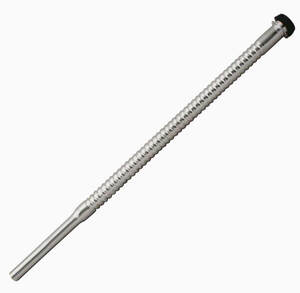 Photo 8: This is a corrugated ‘easy bend’ chrome plated copper lav/toilet supply tube. The difference between the faucet and toilet version, aside the lengths, is the size and shape of the rubber cone washer at the top. This design is still in production. Photo 8: This is a corrugated ‘easy bend’ chrome plated copper lav/toilet supply tube. The difference between the faucet and toilet version, aside the lengths, is the size and shape of the rubber cone washer at the top. This design is still in production. The smooth acorn supply could still be employed with FIP angle stops for those who saw the superior quality of that practice. Skinflints adopted the compression angle stop variant. But, in either case the supply had to be trimmed to length, to fit between the angle stop and the valve above it. Unlike the old heavy supply stuff in 5 ft. lengths (which the plumber used with his/her rubber cone washer/FIP stops), and which the plumber could cut several or more supplies from, any trimmed material from acorn supplies was ‘junk’. This meant the acorn supply had to be sold in different lengths, the longer the more expensive. (It never felt good having to cut a pricey 30 inch acorn supply tube down to a short one to serve a toilet because you had used your last 12 incher. To leave the job to go to the supplier would cost you even more.) “Why Can’t You Be More Flexible?” How many years? It’s hard for Pete’s old brain to recall but what seemed like too soon, human greed fueled another supply tube design change, one that cost the consumer incalculable expense and sorrow. Even with ‘acorns’ and smooth, thin-wall, some savvy was still required to install supply tube in a timely fashion. So, with our old nemesis greed still on the job the industry regressed again, with an ‘easy bend’ corrugated faucet/valve supply tube. In its debut form it came with a rubber cone washer pre-installed at the top, for faucet or toilet fill valve, depending (Photo 8). Due to the corrugations, trimming to length had to occur on the much shorter, smooth section closer to the bottom. The easier, quicker bending was a boon but the limited length of the smooth portion posed problems of its own. The author sees it as opening the door to the erosion of workmanship which ALL flexible designs, past and present enabled. (The plumber found that he/she could have lots of these supplies on the truck but none of them (due to limited cutting area) answered their needs of a particular situation, which resulted in supplies of excessive length becoming an accepted fashion. In time this corrugated design was offered with an acorn head but it did not find favor. Today the rubber washer topped version is still traded. Industry To The Rescue 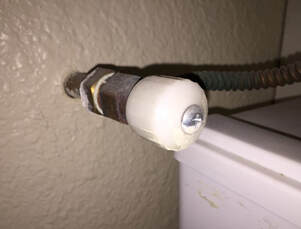 Photo 9: Another seriously off-set AmeriFlex combo angle stop and supply serving a cabinet mounted lavatory bowl Photo 9: Another seriously off-set AmeriFlex combo angle stop and supply serving a cabinet mounted lavatory bowl Do-It-Yourself-ism in the late 60’s/early 70’s had reached such heights that the plumbing supply manufacturers reached for the forbidden apple: a compression angle stop with a factory connected flexible, corrugated supply all in one piece!, the AmeriFlex (Photo 1, shown earlier & Photo 9, left). “Just keep a stock of extra long ones and trim them to any length.” “One or two sizes cover all of the plumber’s needs.” When something sounds too good to be true it often is. This proved the case for the AmeriFlex. The big shame of the AmeriFlex combo is that if the manufacturer had not cut corners in the amount of raw materials going into the product, it would have proved a worthy addition to the world of plumbing trim. But that was not the case. The author himself (in other’s employ), reluctantly installed many of these. Yes, they were installed quickly, especially if the supply stubs sticking out of the wall were ½-in. tube copper. Now, the layperson probably thinks of water as a smooth, slippery medium. At the user end of plumbing it is. But, when under pressure, and laden with minerals (either utility or water well infused) water can be very abrasive, not to mention corrosive. I’ll mention more on this downstream. Among the major shortcomings of this potentially helpful combo design:
However the combo still employed the standard 5/8ths compression mounting ferrule (Photo 10, below) with its one-off compression thread pitch. Proof In The Pudding After some years (ten or less?) on the market (depending on local water quality), problems with the AmeriFlex started happening… LEAKS! FLOODS! The biggest cause was the make-up (alloy recipe) of the copper used to make the supply tube. It corroded easily in water systems not affecting products of other manufacturers. And, its wall was too thin. Remember upstream I mentioned water as a medium? This medium, when mineral laden, can act like liquid sandpaper to the walls of copper tube (smooth or corrugated). After enough of this “liquid sandpaper” has rubbed up against the internal corrugations of a corrugated metal supply tube, on its way to the above faucet (or toilet fill valve), it made holes in the tubing wall. On the outside this leak was in the bottom crevice of the corrugations of the tube, at any point in its length. On the inside of the corrugated tube, it was the tops of the corrugations that got ‘sanded down” long enough to eat all the way through. Still to this day, recirculating systems for hot water plumbed in copper pipe suffer leaks in the piping and especially any 90 degree elbows used, due to the continual scouring action of mineral laden water. This is one advantage of PEX tubing. It greatly resists this scouring action and failure. Another weakness of the AmeriFlex supply tube surfaced when a faucet or toilet valve needed replacement. Any re-bending of the corrugated supply cracked it all too easily. You were lucky if this problem made itself known, immediately. But often, the leak occurred at the crack (sometimes invisible under the plating) and the leak appeared weeks to months later. In PtP’s first book, The Straight Poop, A Plumber’s Tattler, the author informed the reader that houses on Utility Water can undergo huge swings in water pressures between mornings and late nights. This night pressure swing can be double or more than the daytime operating pressure. (Any compromised part of the system usually meets its fate when you are in REM.) And yet, there was another liability for the AmeriFlex also involving the corrugated supply. If you look at Photo 4, shown earlier and Illus. 1A & 1B at end, you see the “acorn” head of a smooth, copper supply tube. (Eastman is PtP’s preferred brand.). Around the underside of the acorn runs a metallic lip, or edge. This lip, being of rigid metal, guarantees that the supply tube, under excessive pressure, cannot pull through the bottom hole of the brass supply nut at the valve connection, (Photo 11, below). In this connection, there is no rubber cone washer employed. It’s a metal-to-metal seal. And, if left undisturbed, could last generations. The Ameriflex supply did NOT have any such lip. It had regressed to rubber cone washer, and due to problems with their cone washer design and material composition, was subject to a failure referred to as a blow-out. The supply tube separated from its valve connection. Another One-Off Another ‘one-off’ concerning the AmeriFlex corrugated supply tubing was the rubber cone washer itself. IT WAS NOT YOUR USUAL CONE WASHER used on smooth standard tubing. This, the A/F cone washer had female (inside) threads that matched the very corrugations of the supply tube. The plumber would drop a supply nut down the supply tube first, followed by one or two friction rings, (Photo 3, shown earlier). Then, he/she threaded the one-off cone washer down the corrugations to a dictated/desired length on the tube. When happy with its position/placement, the plumber then trimmed off the excess length sticking out the top of cone washer and made his/ her connection. The brass friction ring/s nested in the bottom of the valves supply nut is/are there to prevent a rotational (friction) tear in the rubber washer. And a yet added aspect the author did not appreciate was: he could not employ his swift acting tubing cutter to trim this corrugated supply. He/she had to use the mini-hacksaw (or other grinding or cutting-tooth apparatus) which regardless of attention and sense of purpose in its use, was a p.i.t.a. This action, in most cases, left undesirable and imperfect ends. (These could cut the rubber cone washer when threaded on.) (You were not given extras.) In time these A/F ‘one-off’ rubber cone washers had their own black market value: One plumber to another: “The contents of your lunch box and I’ll give you one. Two? You gotta take me to dinner.” A common mistake the plumber made when installing an AmeriFlex (instead of a single angle stop and a smooth brass/ acorn head supply) involved trying to supply a valve which was farther to one side or the other of the angle stop (shut-off) “than he/she would have been happy with”. Creating a long radius or sag with the A/F (Photo 1, shown earlier) was setting one’s self up for trouble. If/when the plumber did not install an A/F (AmeriFlex) with its cone washer connection as close to vertical as possible, above the valve, under high water pressure, without a rigid metallic lip to prevent ‘pullout’ the supply tube was prone to blow-out. The corrugated rubber threads of the cone washer were not formulated (strong enough) to contain the pressure. A special high density (remedial) washer for this application, one to successfully prevent blow out, was never on offer. If the reader has already checked off PtP’s book “Installing and Repairing Plumbing Fixtures” from their reading list, by osmosis they would have known not to employ this component. But luckily, time and space has spared them the possible repercussions. This combo has long been out of favor and production. An Uncommon Thread Now for the uncommonness (non-standard) of the A/F’s installation/inlet compression thread alluded to upstream. A big problem with this A/F combo was the manufacturer’s decision to not employ already industry standard compression threads. (They came up with their own.) My Illustration 2, below will hopefully help you understand how the compression connection works, or is supposed to. (PtP has made zillions of compression connections but he never uses compression angle stops. By this term compression, he refers to the 5/8ths-in. (1/2-in. nominal) installation/inlet compression joint (Photo 6, shown earlier). (A 3/8ths-in. supply compression angle stop outlet connection (Photo 5, shown earlier) the author has no issues with. It seals much more effectively than larger sizes.) A Change of Horses From the ‘put-in’ upstream, the author has been venting about supply and angle stop design. Now he’d like to touch upon some issues of ‘practice’ involving angle stop installation. Am I Stand Off-ish? Now, take a look at Photo 2 (shown earlier) again. This was a decades old installation at the time of exposure. It was done when plumbers were still using the heavy, smooth, brass, electroplated, standard (then) supply tube. The closer to being almost a vertical rise the easier was the shaping and fitting. If you are one who employs copper tube supply stub outs (Photo 12, below) and compression angle stops (Photo 13, below) when you have a fixture supported by a cabinet, (where the occupant of the room does not see the under bowl plumbing, and when the water is stubbed out on the blind side of the toilet bowl, out of sight), cut your stubs 2&1/2-in. from the wall (Photo 14, below). This leaves room to cut the pipe, again, at a later date, and install a second angle stop, if problems in the future should arise. This extra thought/measure, now, could save someone else a nightmare in the future. Up Tight (Too) Here is my biggest dislike about compression inlet (mounting) angle stops in general: when someone has installed an angle stop like the one in Photo 7 (shown earlier) and they applied design force to the compression nut (1&1/2 to 2 full turns after finger tightness) and the valve needs to be replaced, and the compression nut is corroded to the valve body: someone else (you?) is in a pickle. If separating (unthreading) the valve away from the captive nut, or vice versa, cannot be accomplished due to corrosion, and the valve leaks at any of its three prone points, how do you get out of this predicament? Well, a plumber merely opens the wall (after toilet is lifted? or sink cabinet?). If it’s a cabinet, what about a mirror resting on top of the counter. Does it have to be moved outta the way first? How many lost vacations has that just cost you? Then, with heat and solder or PEX and rings, depending, a new section of water tube and its anchoring fitting is put in place. With a new angle stop and fixtures back in position they’re usable again. (Oh, did the new winged 90 for a toilet require new $blocking$?) (Even with a simple cabinet replacement, if you have compression angle stops, when escutcheons cover holes in a solid cabinet back, the cabinet cannot be easily pulled forward as would be done with FIP angle stops, after unthreading them.) If you or a plumber had to go into the wall because of a dud compression angle stop, who patches the wall? Will the fixtures need to be moved again to do this patching and or possible painting? How much will that cost? How soon can they come? How soon can I afford to hire them? What if I told you seven more seconds of conscious thought by the installing plumber could have spared you or the customer the above p.i.t.a. When copper supply stubs/tube are far enough out of the wall that you can use the mini hacksaw and cut right behind the compression nut, and you have enough room to install a brand new valve, it’s a HUGE relief. It’s no big deal. But, few installers (not real plumbers) think about the ramifications of the labors they perform, at the time. Not All Is Lost Even when a non-repairable contemporary compression angle stop is installed up against an escutcheon, as in Photo 7 (shown earlier), if you can get wrenches on the captive nut and valve body, and can separate the two, you merely have to thread a new valve into the existing, captive nut. No need to go through all the pain and labor to remove the existing nut! That existing nut has proven it had enough torque (design force) put on it at installation time to stand up to the ages. And most importantly, the threads on the new angle stop body will mate with those of the long installed captive nut. You’ve saved yourself mucho dinero or time or both. Now, as fore mentioned, the industry standard compression thread was not the case for the AmeriFlex. The wisdom of the manufacturer decided to create their own, new thread pitch which (by design?) would not mate with any of its competitors. If you have a must-remove, must-replace AmeriFlex, ONLY another AmeriFlex angle stop will do. You won’t be rescued by the procedure mentioned in the above paragraph dealing with Photo 7, shown earlier. Where would you find an AmeriFlex today? You won’t. If this was to be your fate, and you’re dealing with the A/F combo, and you need to hire a plumber (if you are not one) my true sympathies. At today’s wages and the plumber’s degree of sympathy, you might not be taking your significant other (or yourself) out to a fine meal for some time. Most of the many floods this product caused were the result of an aneurism of the corrugated supply. A close second were the ‘blow outs’ mentioned. The vast majority of those combo’s that were installed are already history, but nonetheless, this product caused grave property damage to many and odds are there yet may be more, waiting! (When a ‘seasoned’ plumber ever encounters a corroded A/F installed tight to an escutcheon, his/her shock is akin to a backhoe operator’s if they uncovered a big undetonated WW2 bomb.) Okay, enough with the parts history and on to the morality part… Pete’s Remorse Now PtP has told you most of the shortcomings of the Ameriflex. What I’m going to tell you next is a confession, which most lucidly shows how:
Way back upstream the author mentioned being sent to an apartment to repair a leak. It was this repair call, early in his career that forever changed the author’s philosophy about his labors. PtP knows that in The Bank of Karma (due to this leak call), his account debits are still waaaay in the red to his deposits. But he hopes by sharing this event with you, the good deeds by others, might transfer some of their interest into his account? Round One: At the Apartment The tenant had left a note to the manager: “Soggy boxes of dishwashing detergent and other items on kitchen sink cabinet floor.” Upon opening the cabinet doors hosting the kitchen sink, PTP did a cursory inspection of the waste (tubular drain ) system. Nothing alarming other than there were TWO GARBAGE DISPOSERS! Not just that, but to plumb both of them there was a LOT of waste piping components and it was all slip-nut tubular brass. Next his attention turned to the water supply. First he gazed at the hot angle stop (‘hot’ stops always (almost) leak before ‘cold’ stops.). This visit proved the case. And, the author immediately recognized the enemy, the Naja naja Ameriflex. Tiny, but continuous drip from a corrugation groove in the hot supply. PtP (in his bones) knew that this was going to be a p.i.t.a. repair in good part because the cabinet was a corner cabinet with a high kick stop (worse for spines). And, it had two small doors with a divider strip: the ‘Inconsiderate Design’. To make matters even worse, the water was roughed-out of the wall almost all the way back at the deep corner (and high up). Not only that, it was a TRIPPLE BOWL, tri-level, cast iron. The slip-nut tubular brass continuous waste system (out-of-the-wall tubular pipe connecting all three bowls) (by design) came very low and left very little room for PtP’s body to slide under, or around. To put it bluntly, it was one of the worst working conditions encountered in the ‘repair’ side of my practice, concerning sinks. The author has lifted sinks and cabinets to get at waste and supply piping needing repair or replacement when there was no other way. On this call, PtP was not about to try plucking a three-bowl cast iron hosting disposers, by himself. That is a three person chore. So the job was done the second, equally difficult, time consuming way: dropping disposers, wastes, p-traps, and all continuous waste piping, in place. It was a bent-neck-broken-back ‘long-stretch-crawl-stroke’ just to get my hands into working territory. After a real battle (opening the wall/torch/solder/fittings) the author had excised the hot Naja naja and replaced it with a new FIP (easily replaceable, over several times) Brass Craft supply stop and solid, smooth 3/8ths-in. Eastman acorn-head supply tube. By this point of the battle PtP was already VERY sore. With the new hot supply installed, he then gave the A/F cold angle stop a closer inspection. No sign of any leaks. Even the plated steel escutcheon had yet to show any rust. To go after the ‘cold’ A/F would also entail more hellish hours, cuts and band-aids. Looking across the kitchen floor, at the disposers and useless corroded p-traps, wastes and other components (resting on a new, sacrificed, cardboard, water heater box panel), doing a quick (too) mental ‘labor time addition/subtraction’, he had to decide whether or not he should keep going and tackle the remaining Naja naja, even though it was not leaking. Round Two Even for Pete the Plumber, just to re-install the disposers and make an all-new, 2-trap, three-bowl, ABS waste system, in these conditions, would be a p.i.t.a. chore. He argued with himself: Oh, “he’d make a ‘mental note’ and come back at some ‘slow’ point in his schedule and replace the other AmeriFlex.” Immediately he heard his other-self pipe up: “Oh, Pete, go for it and get it done, NOW! You’re making a big mistake if you don’t!” How many people have other selves? I should’a listened to mine. Wanna guess what the author did? About two months after that repair, my boss called me to the office. “Pete, say, you remember doing a repair down on North MLK? A couple months back? It was a Wednesday, an apartment building?” “Yeah I do, not resolved?” “Far from not resolved, especially when you include attorneys and insurance.” “Pete, I got a call from the manager; that building flooded. Three floors.” “Over the extended holiday that tenant and those in the two units below it were out of town. For three plus days the water ran. Embarrassing to us, its source was the unit where you worked, under the kitchen sink. All three residences are totally trashed. Unlivable condition.” “The absolute worst case, the big four-bedroom, ground floor apartment was home to old ‘Professor X’, the world-traveling reknown archeologist. He had a huge rare book and document collection. All his rooms were wall to wall, floor to ceiling book cases, full. It’s now mostly all mush.” At this moment, the author’s vision and hearing sorta dimmed before almost not coming back to near full normal. “Are we exposed to litigation?” “No, thank goodness. The insurance investigators told the manager that it was the cold angle stop under the kitchen sink. Its faucet connection pulled loose. It was noted in their reports that the hot angle stop had been replaced ‘sometime in the recent past’. They’re calling it “an act of God.” (Which gave them an “off the hook.”) Fifty years of scouring foreign lands and cultures. Meticulous selecting and collecting to add to his library, “at home”. Fifty-years. Was he insured? Not even close. Most were not even replaceable. (Join the Alexandria Library. At least it wasn’t sacked by plumbers.) The ensuing years following the ‘happening’ have been uncomfortable to live through for me (not to mention the other tenants, especially the dear Professor X. The author has tried to imagine what it was/is like to lose everything like these folks, especially the Professor whose most valued (personal and financial) possessions cannot be replaced, at any cost, even IF insurance had stepped up to the plate. The ‘knowing’ that a little more sweat, more scratches, another two pain relievers and getting home way late could have prevented all the destruction is a chronic, nagging pay-back. What PtP stresses in the classroom is: “Don’t for a second think that you will be the last person to have to deal with any particular aspect of your labors.” The author, because of the “nagging pay-back”, is ALWAYS thinking about how he can do his best work for customers. Well designed and constructed living quarters, as the population continues to explode, only gain in importance and thus, value, as they age. (It’s the opposite for me and you.) When PtP now has a wall opened up in a building, and ‘there be’ other plumbing present aside his main concern, you can bet he says to himself: “What else might need doing here?” Photo 15, below was what caught the author’s attention in Dr. P’s waiting room. And, the Doctor’s response was a great relief, a big: “Oh Thank You!...I’ll get it handled this Saturday!” Illustrations 1A & 1B (mentioned earlier) with in depth explanation: Until Next Time… PtP After a long, soaking wet winter and several weeks of sunny, warm spring, for many the thought of conserving more water is probably the last thing on their minds. Where the author lives though, the now green hills will be brown in thirty days. My many rose bushes have already started demanding I open the spigot. If I had more to tend, thoughts about where I would be getting that supply would surely be in bud. Because Mother Nature (in drought prone California) was not stingy with the H20 this last cycle, here there is (now) no more talk of water rationing or exorbitantly high water rates this growing season. So should I trouble my mind with thoughts of availability, conservation and high water bills when all the reservoirs are full? This time around…(for PtP): no worries here. Is everyone so fortunate? Me thinks probably not…for long. At the end of the seven year drought in California (1977), when one extra toilet flush could cost you fifty-bucks, we were seeing the birth and development of a new industry: Grey Water Contractors. With ingenious diversion valves under sinks (lav/kitchen/laundry/utility) and tub/showers, it was possible for a homeowner to choose whether to send the effluent down the sanitary drainage system or divert it to a custom designed system of holding tanks and pumps for dispersal to landscaping and in some cases selected toilets. Just about the time standards and practices and licensing were being developed, the drought ended and the fledging enterprise drowned with the return to profligate water use: 20 minute showers; hose-running car washing; and bigger to obscenely thirsty landscaping. Recently a good friend asked PtP for some help. The long time bachelor caretaker of her childhood home had passed on. The home is surrounded on a large property by a highly developed landscaping plan, including many trees (both fruit and shade) flowering shrubs, and ornamental plantings. (The neighbors, on two sides, have three different gardeners working five days a week.) The new caretakers are a young couple (forest rangers with a 4 year old daughter) who wanted to develop a large kitchen garden. Not new to the area, they well knew its fickle meteorological history and they naturally were concerned about investing a great deal of time and sweat and dollars to create a labor-of-love that could perish due to future mandated water rationing. The 1970’s drought was a time of learning: what plants and trees tolerate household detergents. Grey water is grey because of them. A large body of knowledge (easily Net accessed) exists for those who wish/need to know. The new caretakers had done their research and came to the conclusion that to meet their irrigation goal for the new kitchen garden and maintenance of existing landscaping, grey water was financially crucial to their plan. Their big question was: what fixtures in the house could/would provide the supply and at what plumber $$ costs. If PtP was plumbing a new home, a sophisticated grey water plan would be much, much easier (and efficient) to create than to attempt it by retro-fit. There are many home owners who would dearly appreciate a grey water system but whose existing architectural features of their home present such engineering obstacles that it is financially not practical to create one. In the case of my friend she was fortunate on two fronts. The grade siting of the home in relation to the area for development was in her favor. She had altitude. Gravity would greatly aid in the cost of installation and operation. She couldn’t get away “Scott” free, but fate dealt her a hand with very little ante. Her great fortune: a conveniently located and plentiful grey water source (automatic clothes washer) and a four year old child. (Yours truly and his wife Katherine raised four children. The washing machine was the empirically most crucial appliance in the home.) The washing machine in my friend’s home was located in the basement, on an exterior wall above the landscape to be served. The amount of grey water available from it (based on family laundry requirements) would allow the young couple to use Utility Supplied fresh water for kitchen garden plants demanding it, and maintain much of the existing ornamental landscaping with grey water. (The choice of detergents will govern what you may hydrate.) Most modern washing machines are equipped with a pump producing about a 7 foot head. Because of the altitude available in my friend’s case a very crude solution would have been to bore a hole in the exterior wall just below the 7 foot mark, poke a pipe through and plug the discharge end of the washing machine drain hose into to the pipe. On the outside, from there, the grey water would be conveyed to desired locations (all down hill) by sections of DWV PVC or ABS pipe joined by ‘shove-on’ rubber couplings and press-fit fittings. During the growing season this would probably fly. Take the discharge hose outta the standpipe or utility sink, lift it up and plug into the gravity drain. Depending how large an area is being watered, it might be possible to leave this system in place for extended periods. But not during the rest of the year. Washing machines use a lot of water. When you are not using this water to grow things, you cannot continue to discharge it outside above ground. For my friend and the young couple, PtP was able to use a small, submersible sump pump with basin (Photo 1) and so plumb it (Photo 2) that it sends grey water down the existing sanitary drain and vent system when desired or with turning two valves (Photo 3) sends the water out to the garden (Photo 4). A diffuser or ‘bubbler’ can be created by drilling holes in a section of plastic pipe with a removable end cap as in Photo 5. (Yours truly installed the very same Zoeller pump/sump combo in a busy corporate home of other friends to serve their laundry when its drain line developed problems, under slab. A suitable existing sanitary drain ran in the ceiling of the laundry room. The new pump system operated perfectly for well over a decade before needing a pump replacement.) There is one area where great diligence is required in order to enjoy a long run of trouble free automatic laundering involving a secondary pump like a submersible sump pump. Washing machines produce almost the equal fiber capture as an automatic dryers lint trap. What would happen if you never cleaned your dryer’s lint filter? It would result in an expensive, unplanned purchase of a new dryer. Lint is also a grave threat to pump impellers. If you fail to catch the lint exiting the washing machines discharge hose before introducing it to a pump system, you will suffer the same fate. “Lint socks” for attaching to laundry discharge hose are available at grocery and hardware stores. Use them. Religiously. If you do, you’ll have little pumping concerns pumping laundry grey water. Three Cautions There are three important concerns I wish to mention before bringing this post to a close. They are:
An After Thought The author mentioned above that toilets can be made to flush grey water. That’s probably outta the budget for most readers. However, even your present modern loo’s can offer a second service without using additional fresh water: hand washing. They have been around for decades: Photo 6 is one manufacturer’s vision of the residential toilet tank washing station. In a way, such aided by, your toilet is a grey water toilet. What rinses off your hands and becomes part of the next flush is grey water. Like the ivory billed woodpecker, conceivably there could still be a Grey Water Contractor in your neck of the woods. If you are interested in having some dual purpose water capability for your home, you might start making inquiries.
Until Next Time, PtP |
Author
Peter Hemp is a San Francisco East Bay residential plumber and plumbing author and former R & D steam vehicle plumber. His hobbies are ocean kayaking and touring the Left Coast by bicycle. Archives
September 2021
Categories |
|
|
Copyright © 2017 - 2022
All Rights Reserved
All Rights Reserved



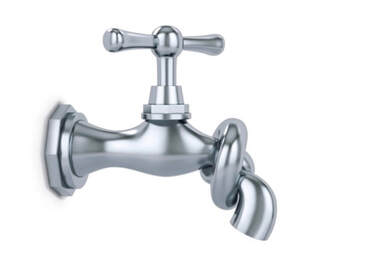
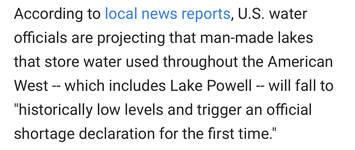
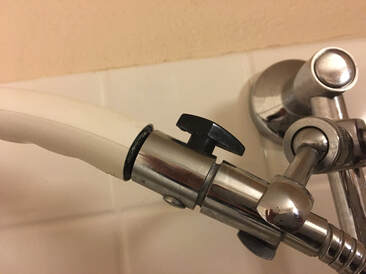
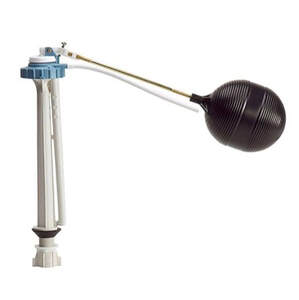
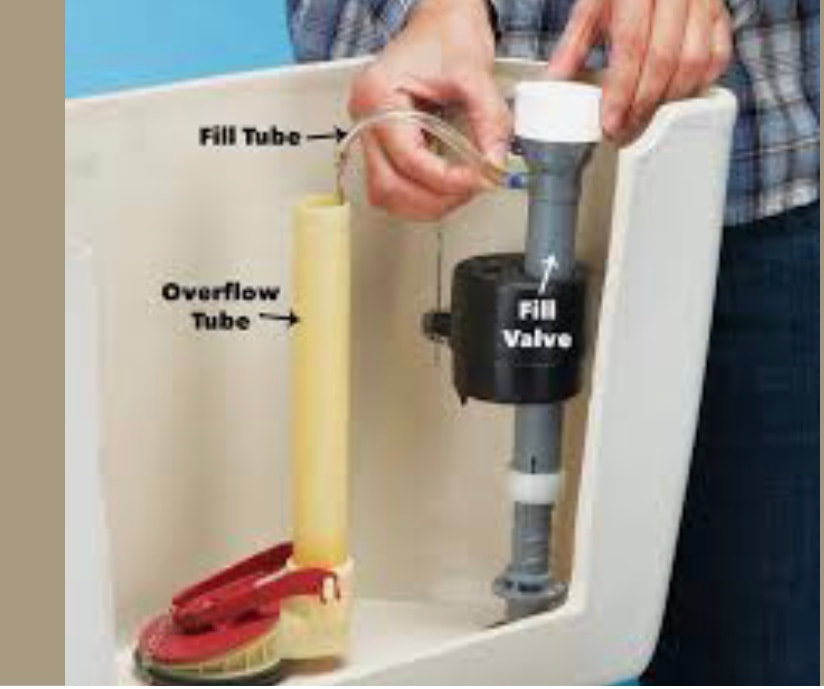
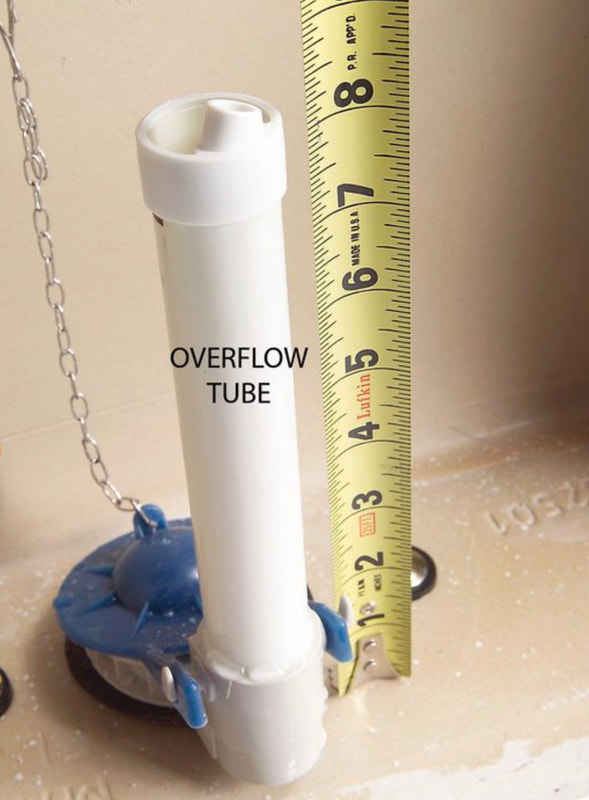
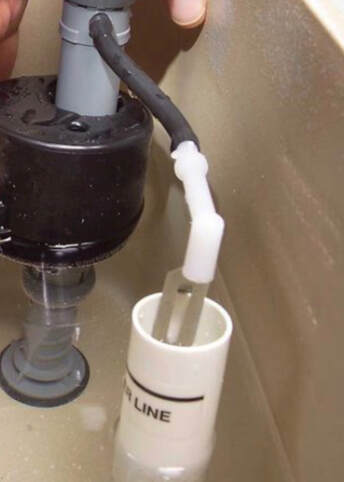
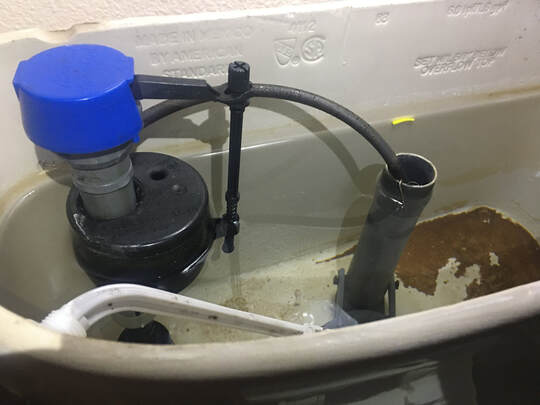
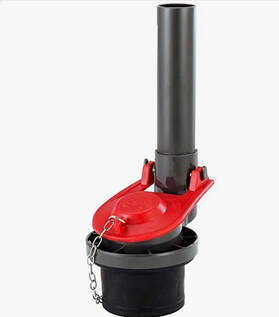
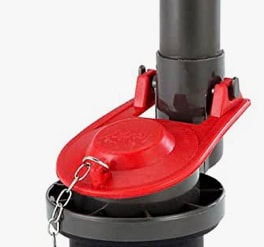
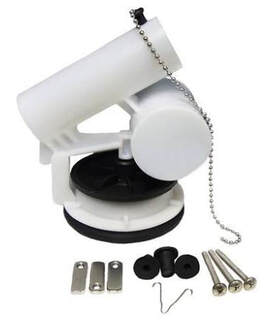
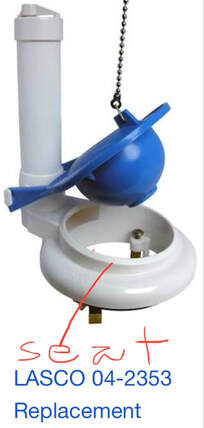
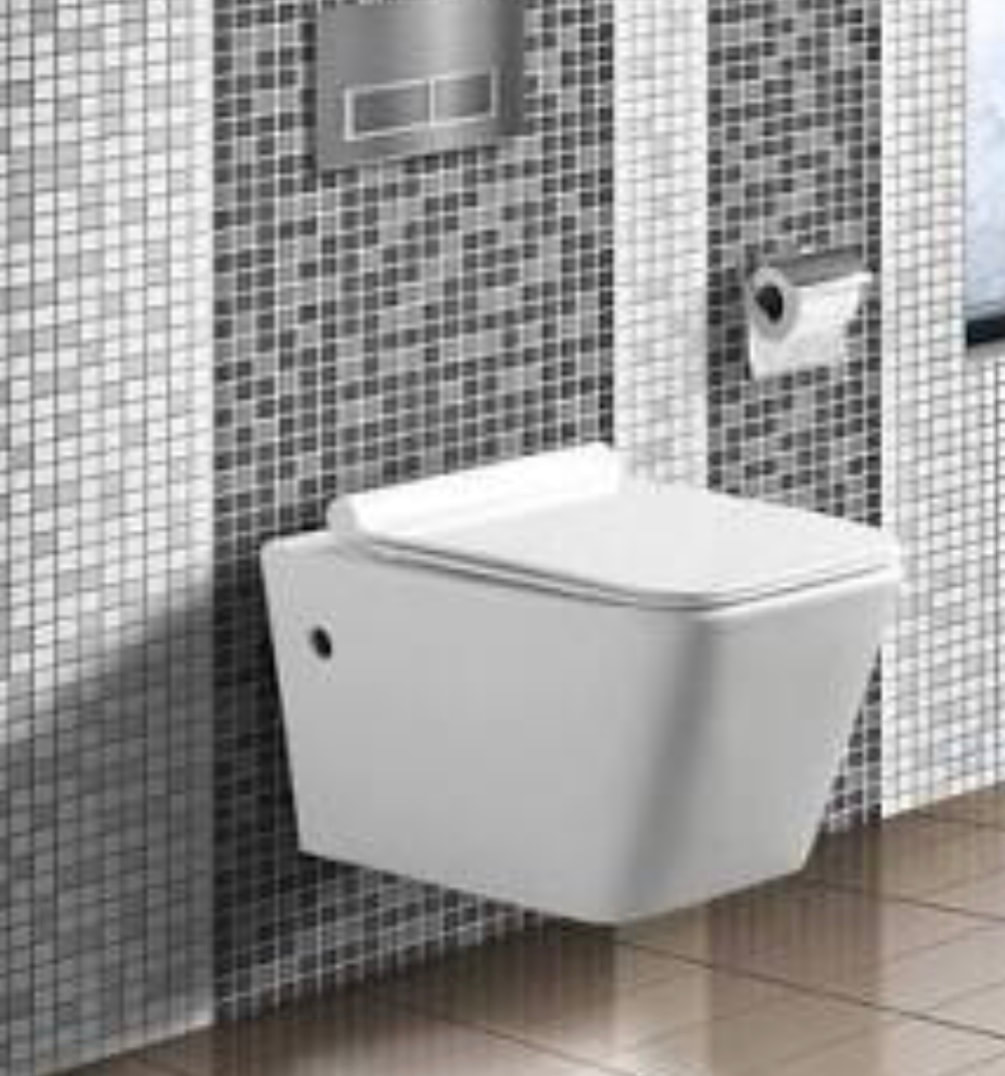

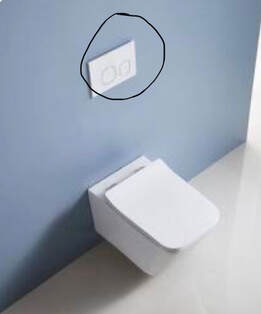
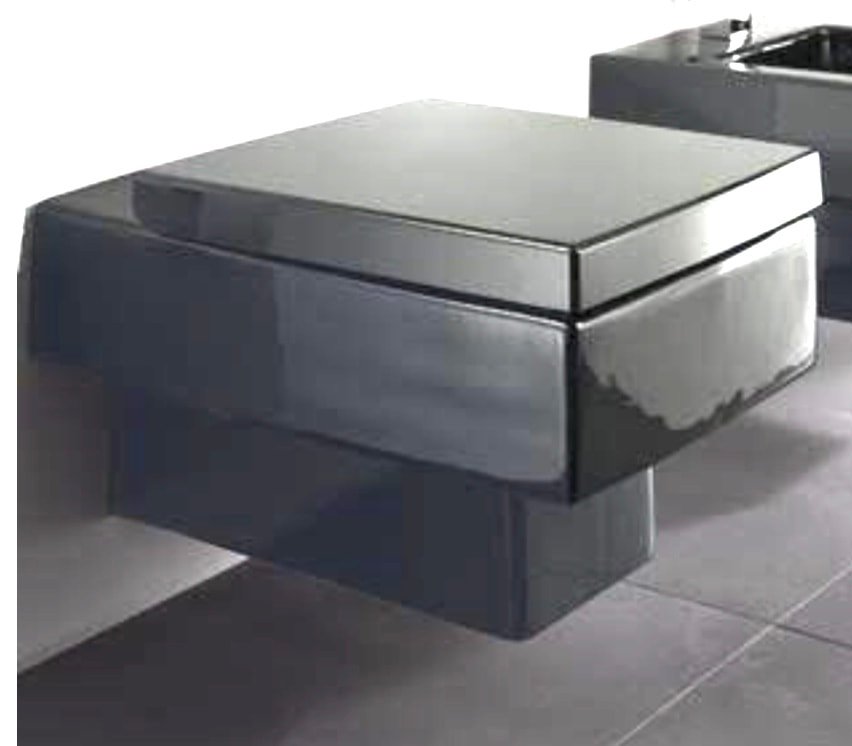
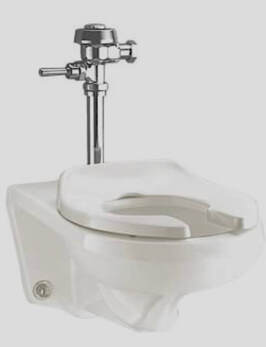
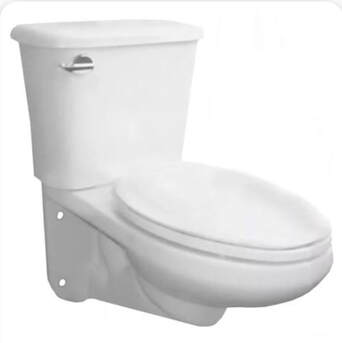
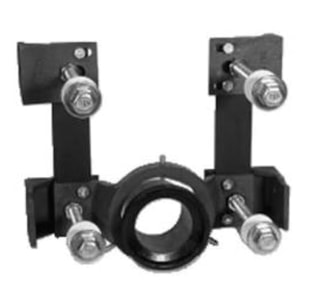
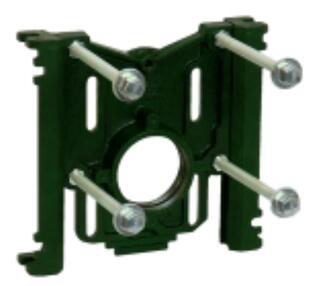
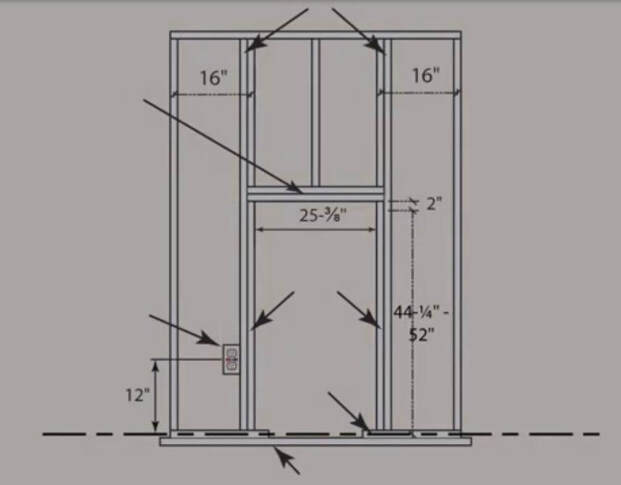
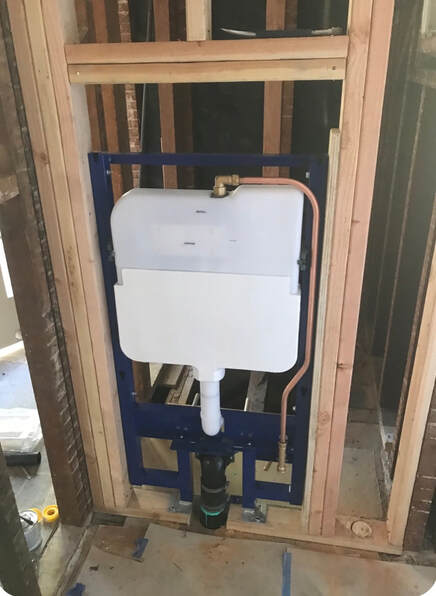
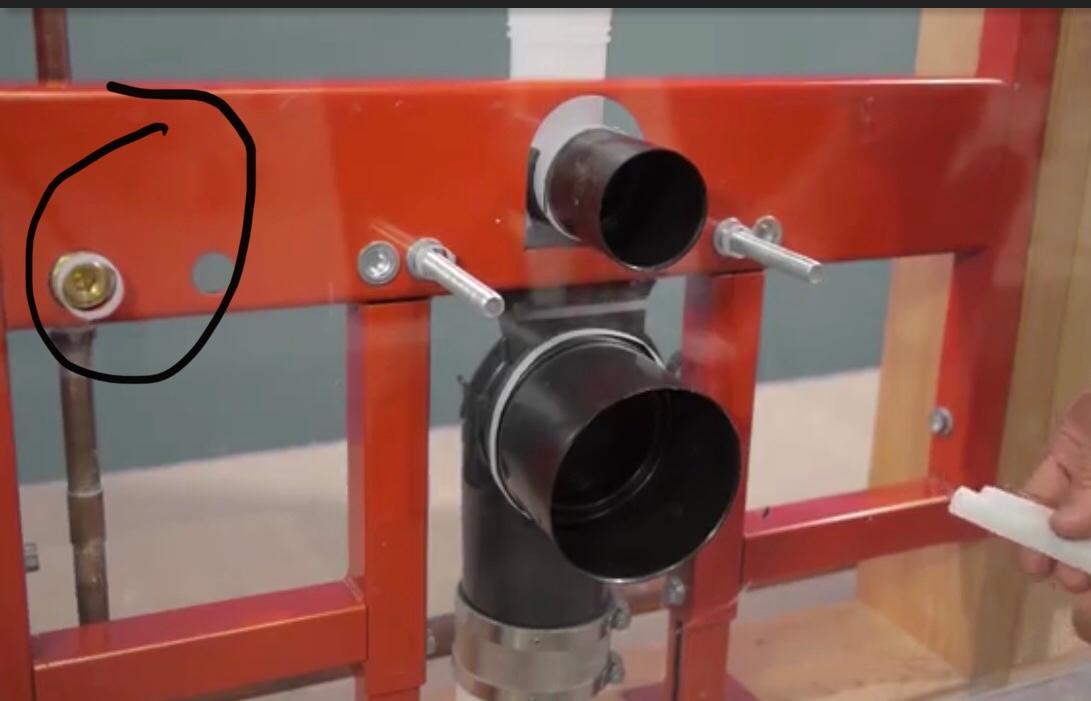
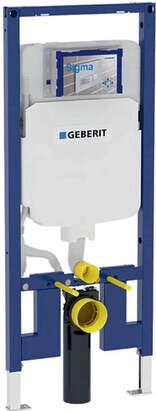
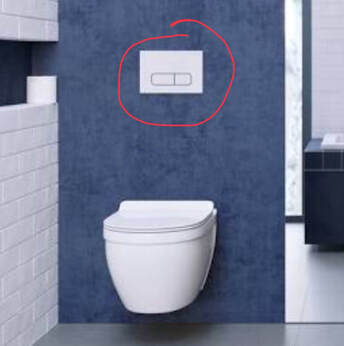
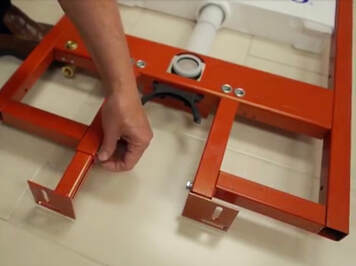
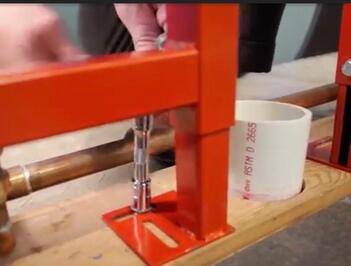
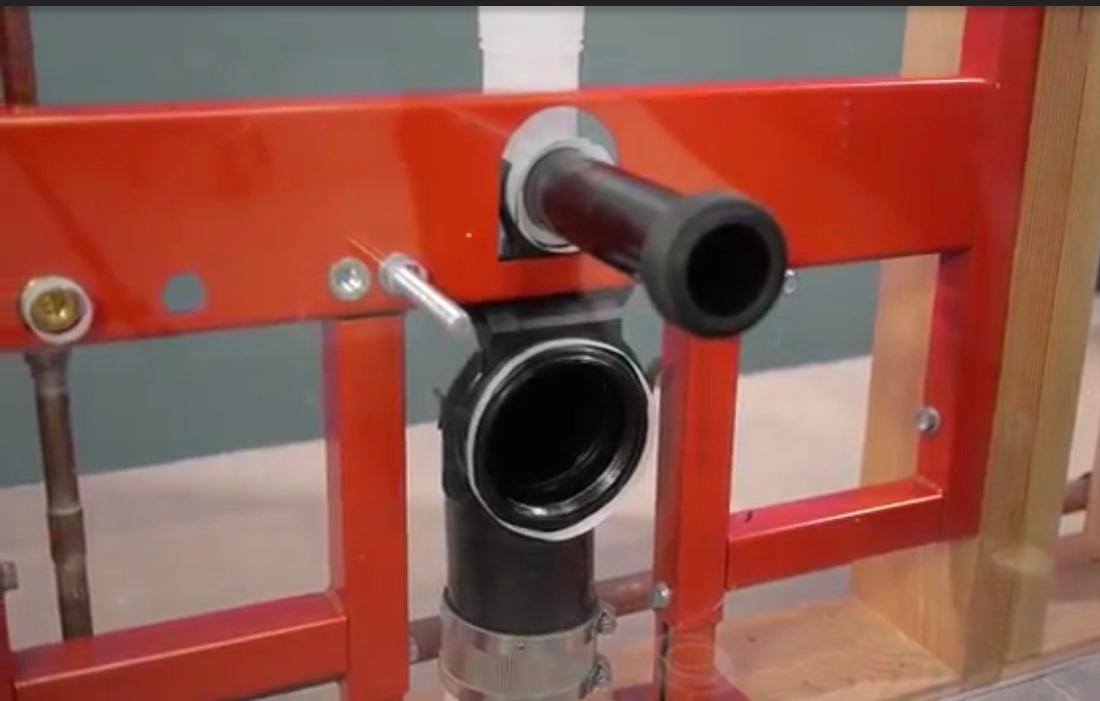
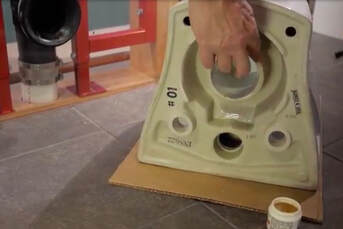
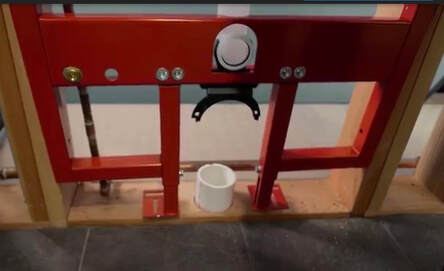
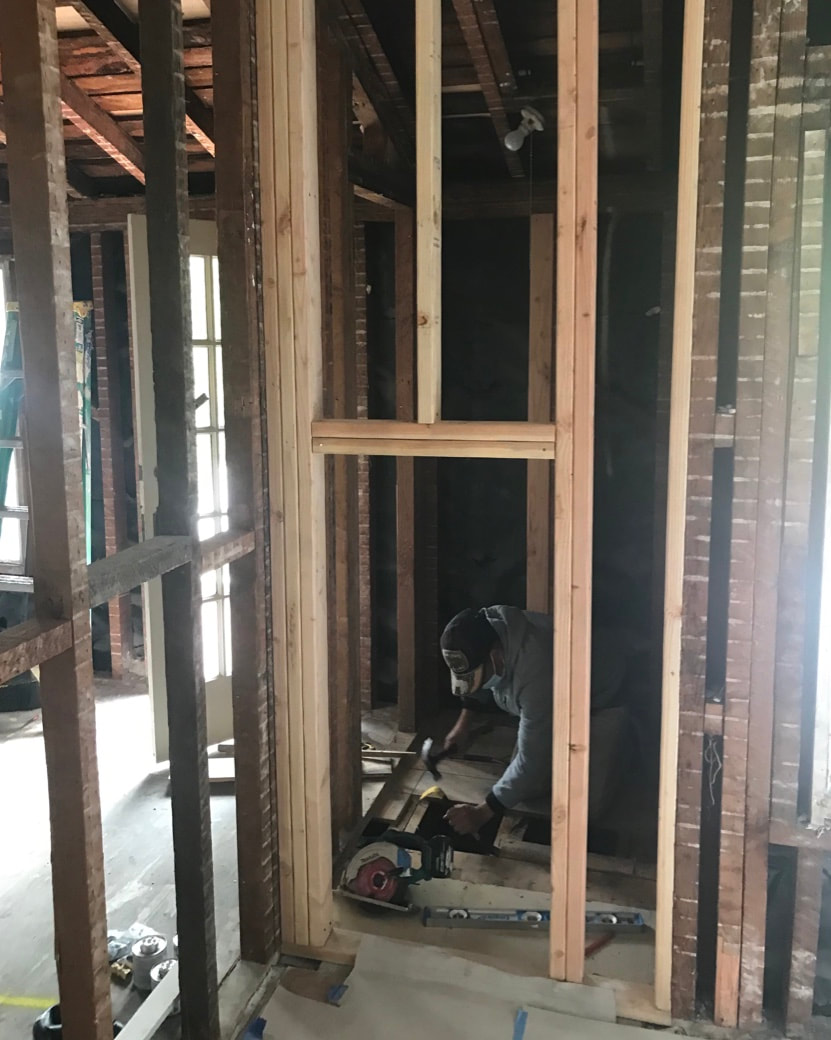
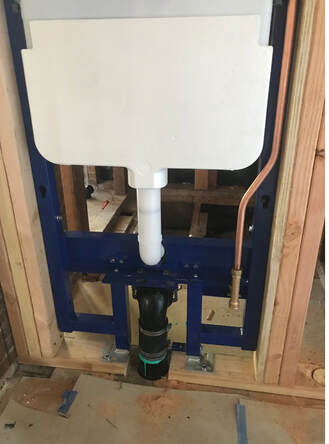
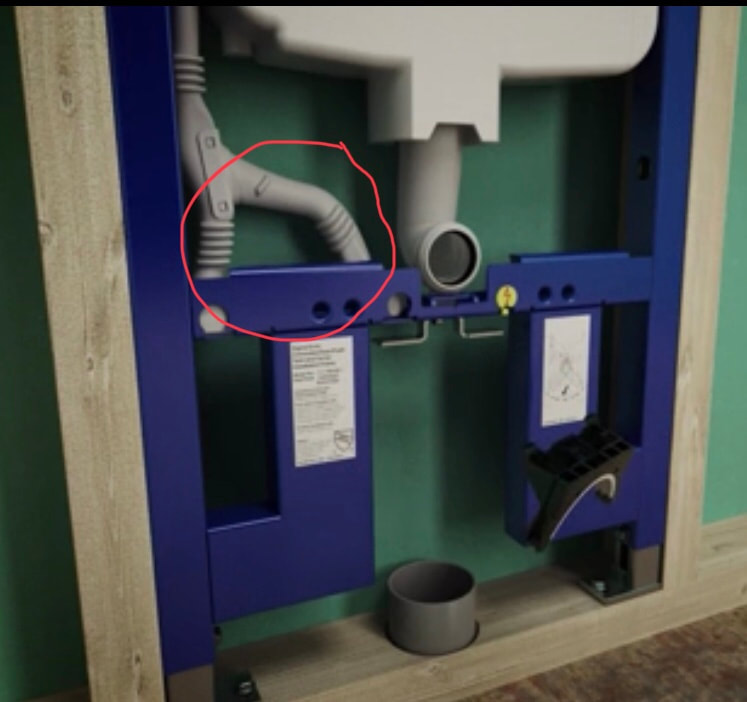

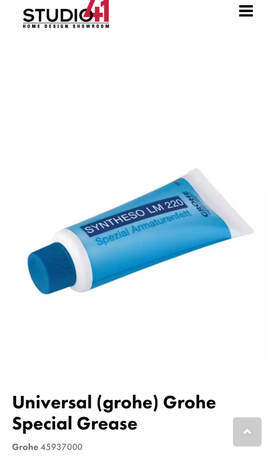
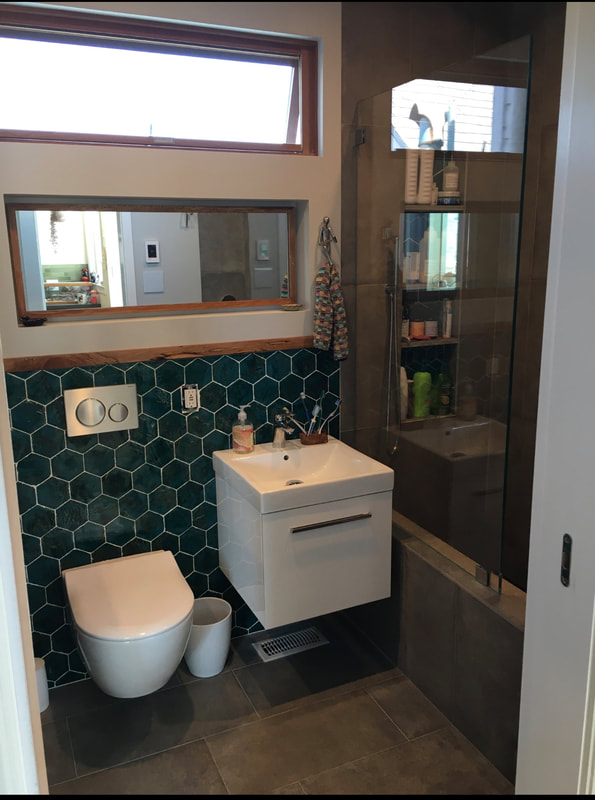
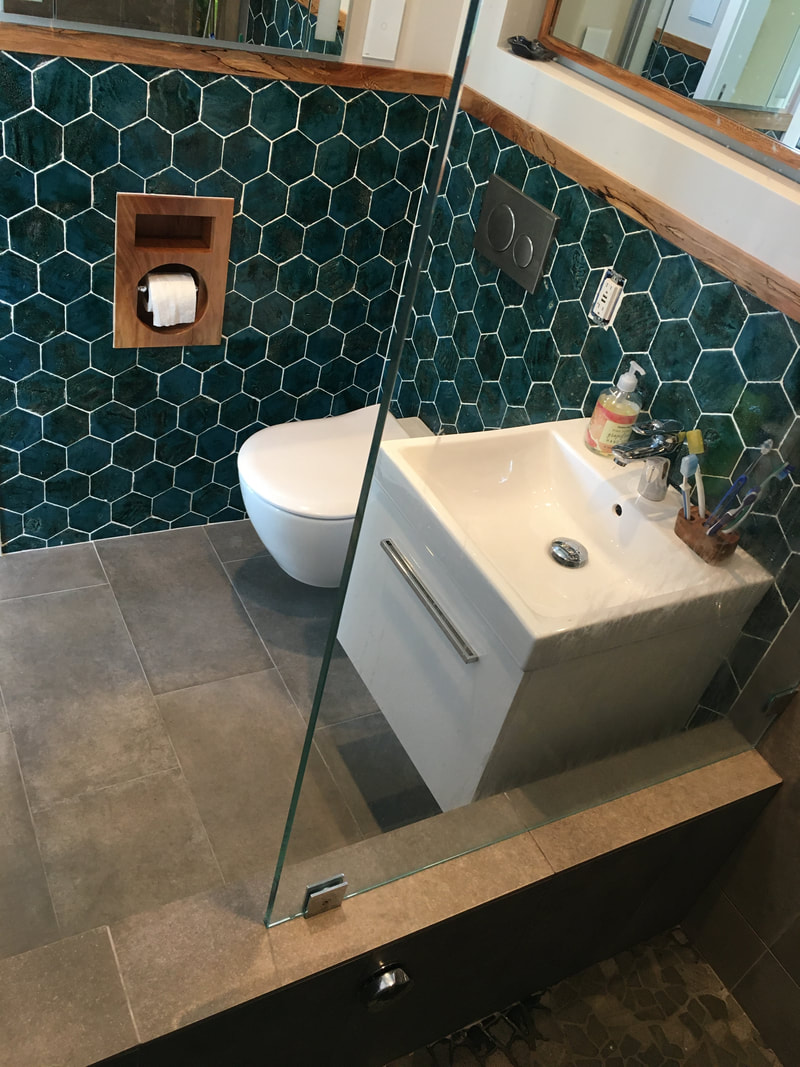


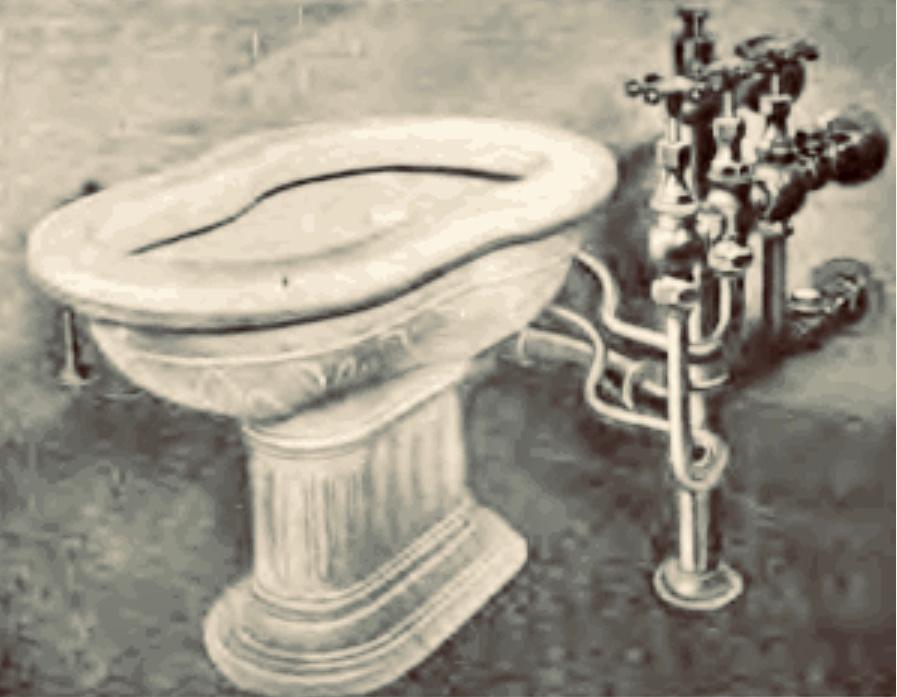
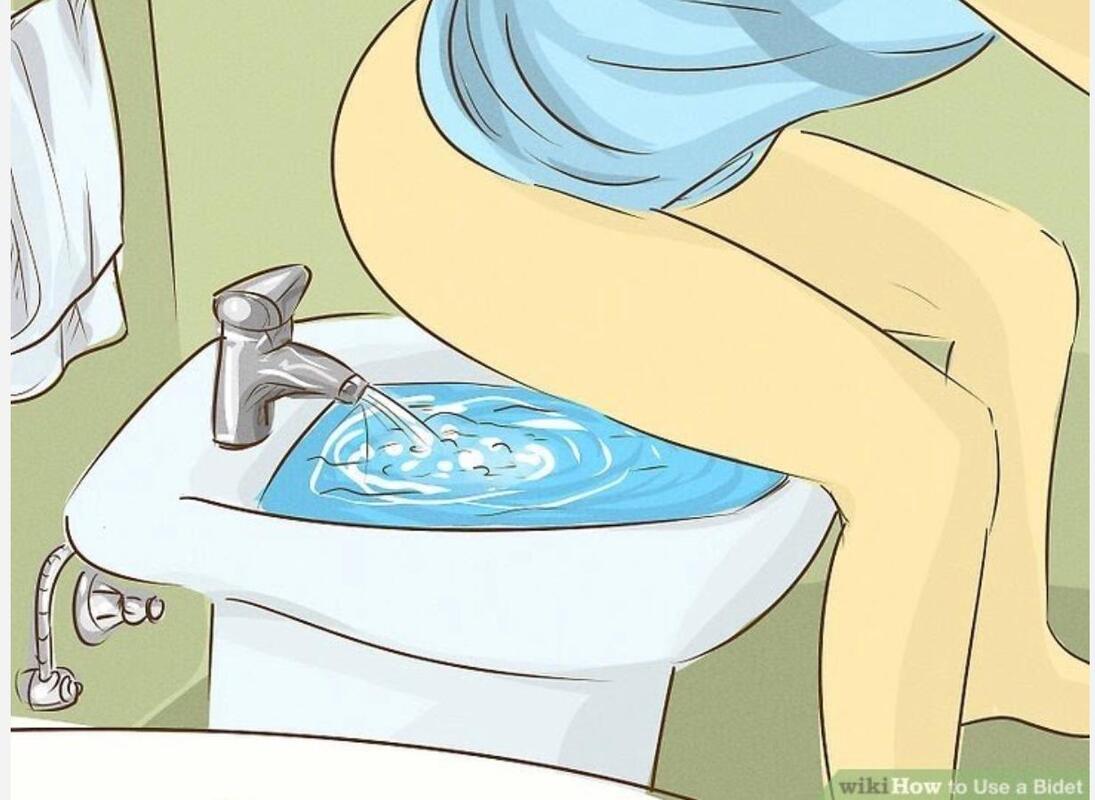
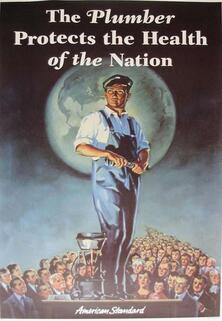
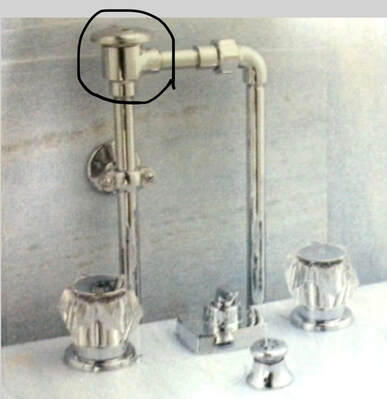
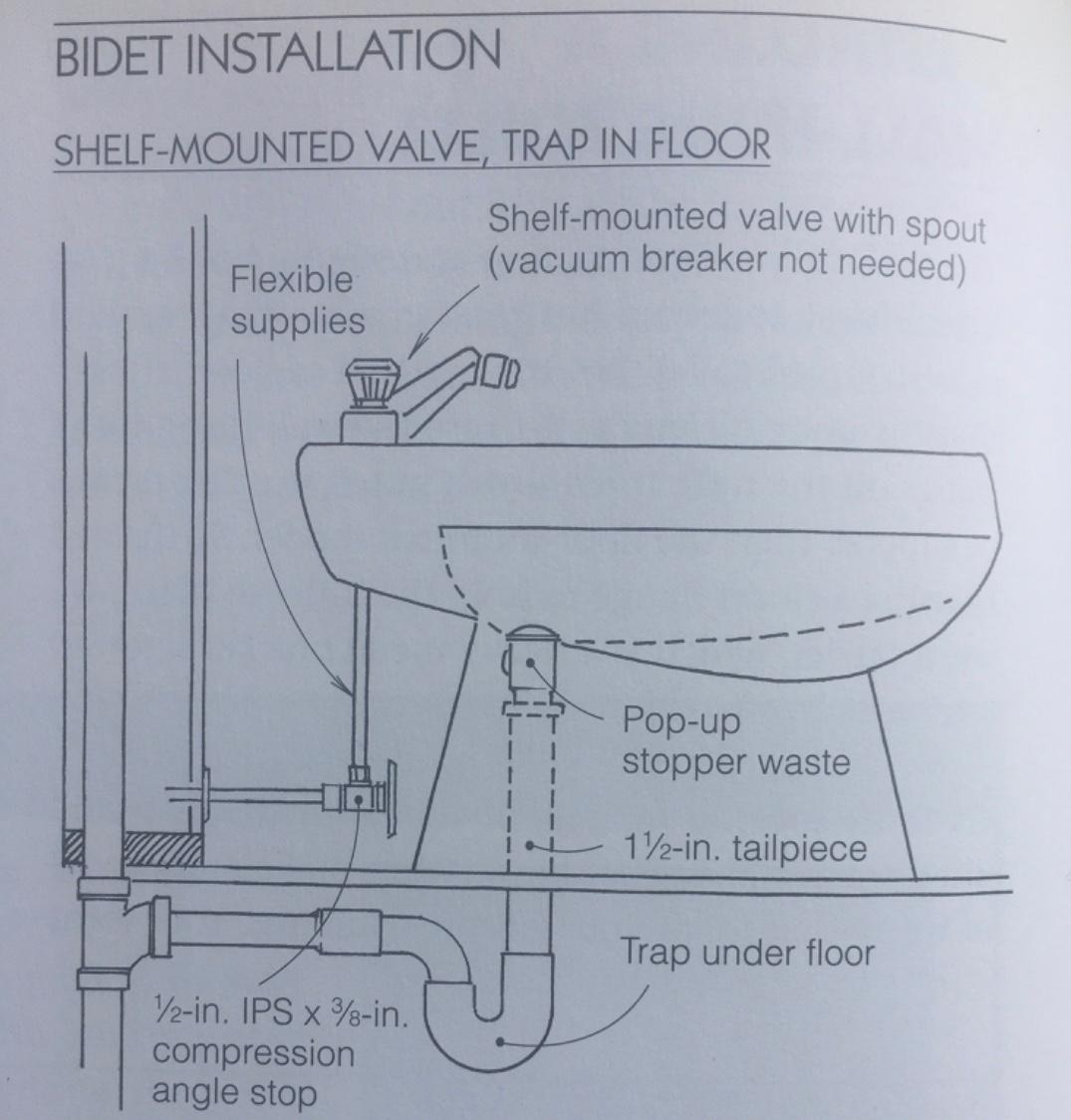
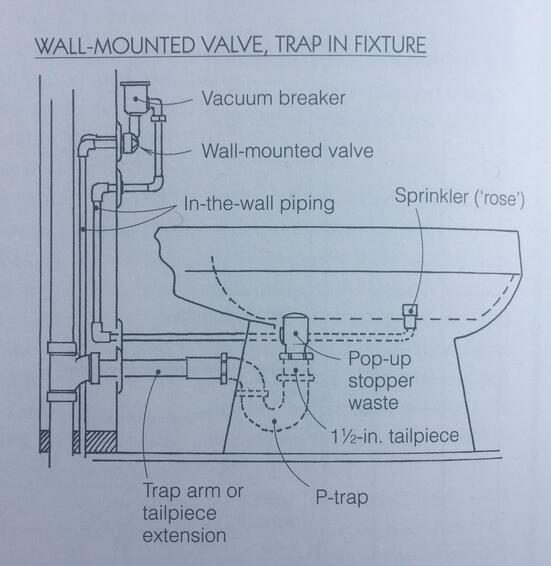
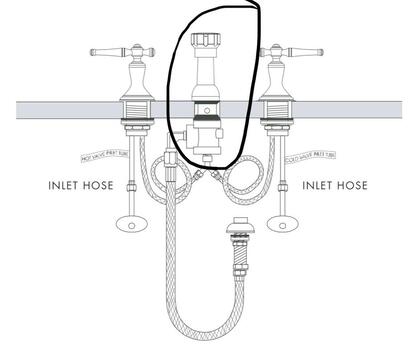
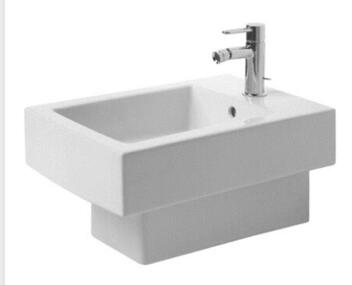
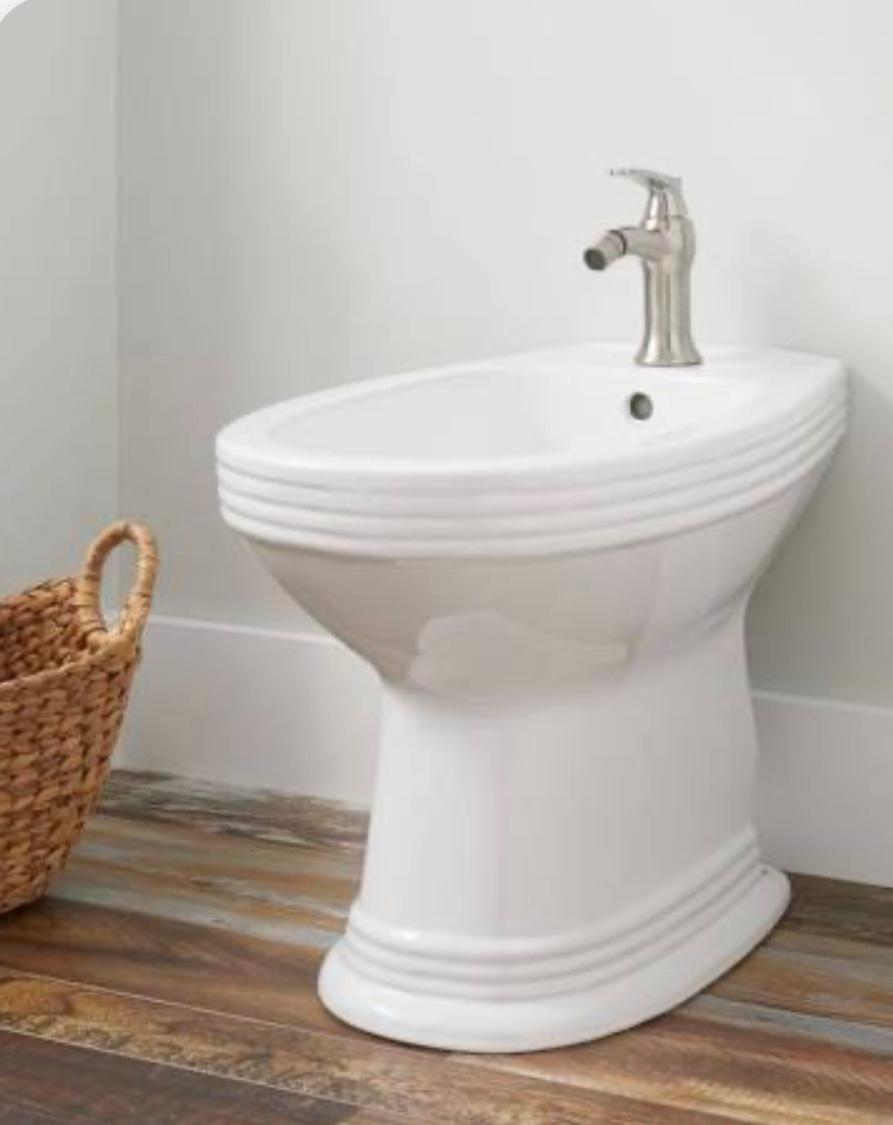
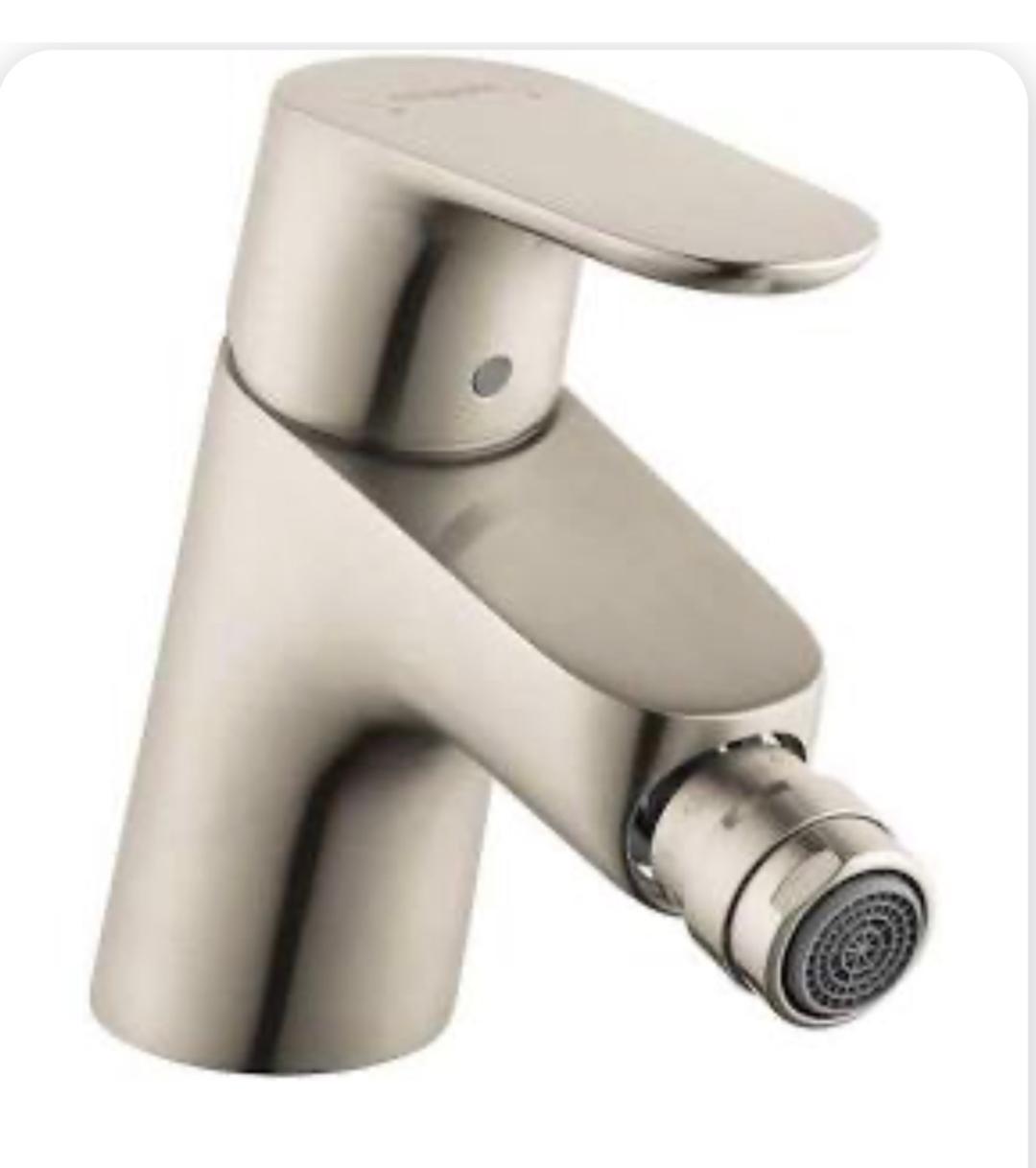

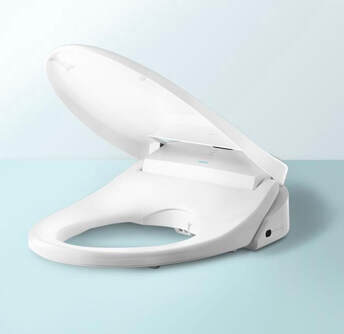
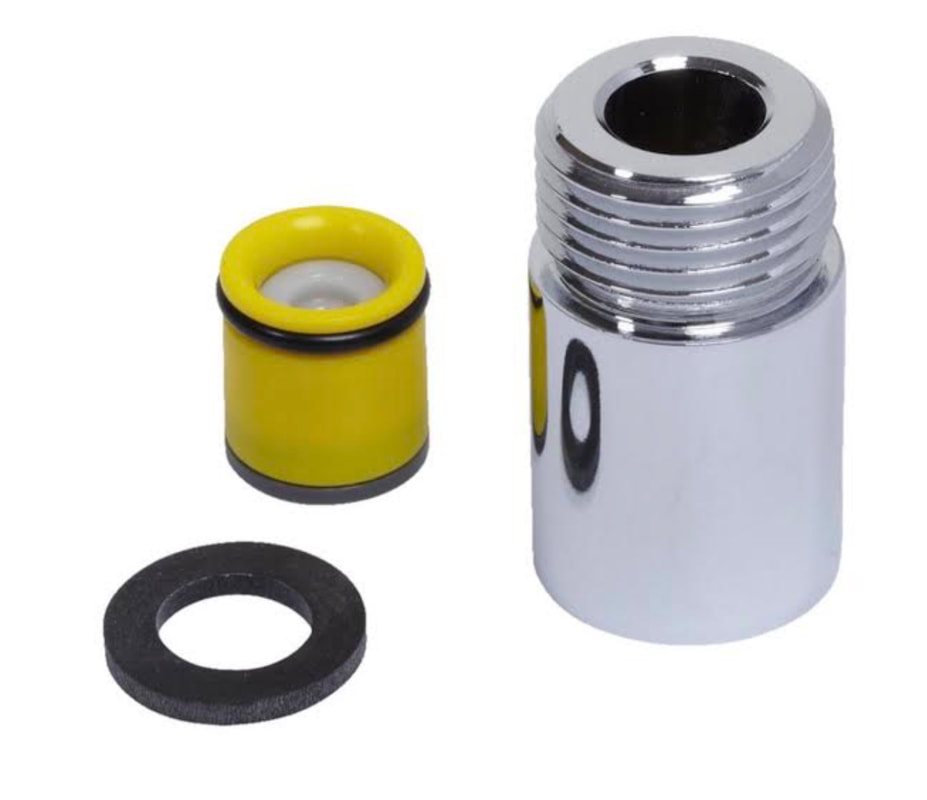
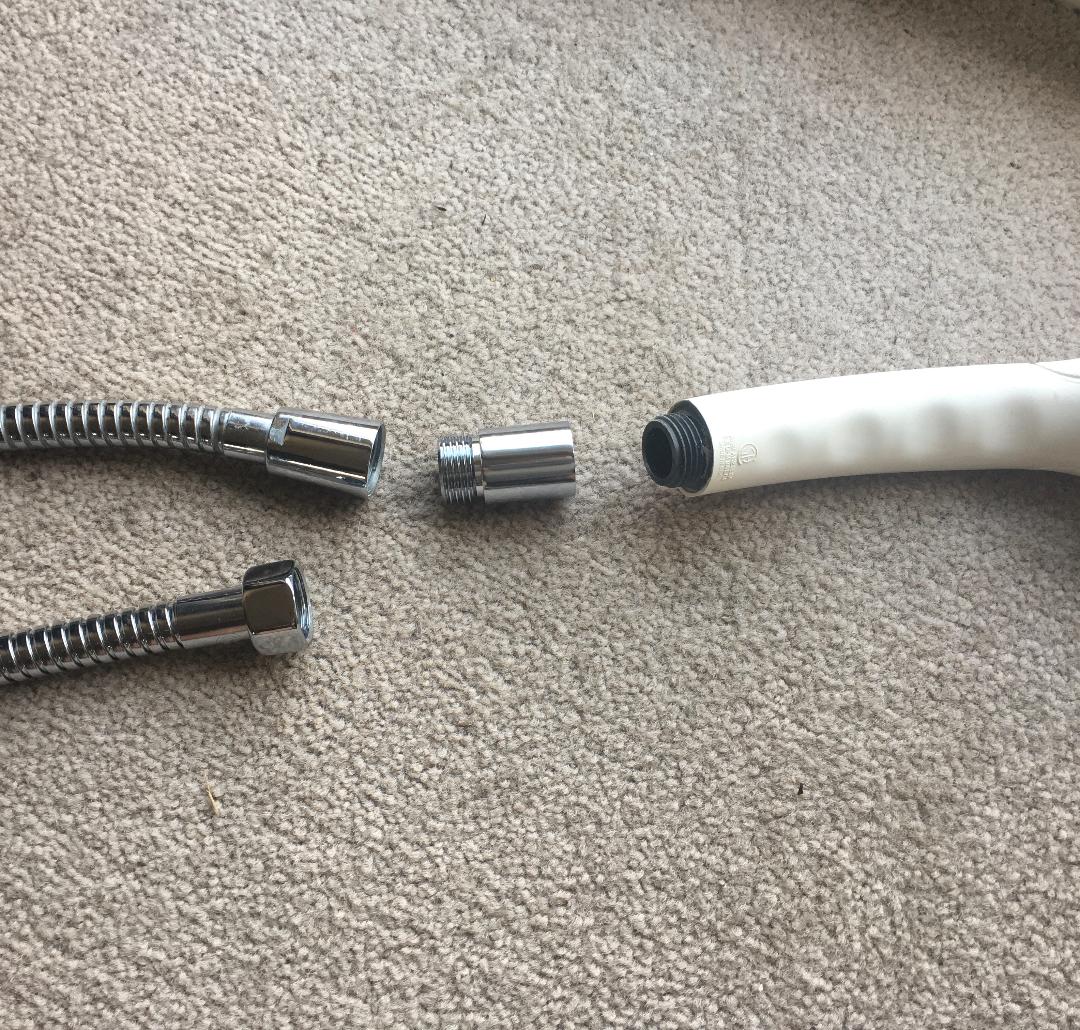
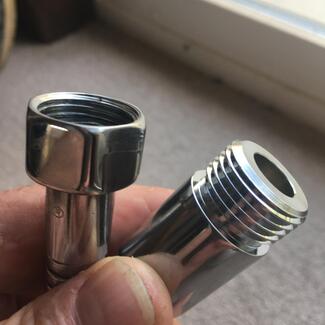
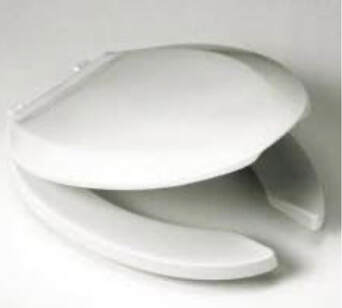
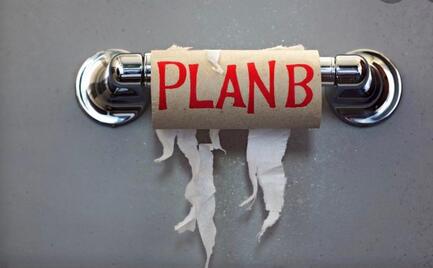
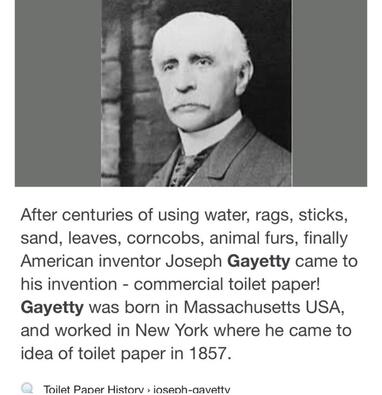

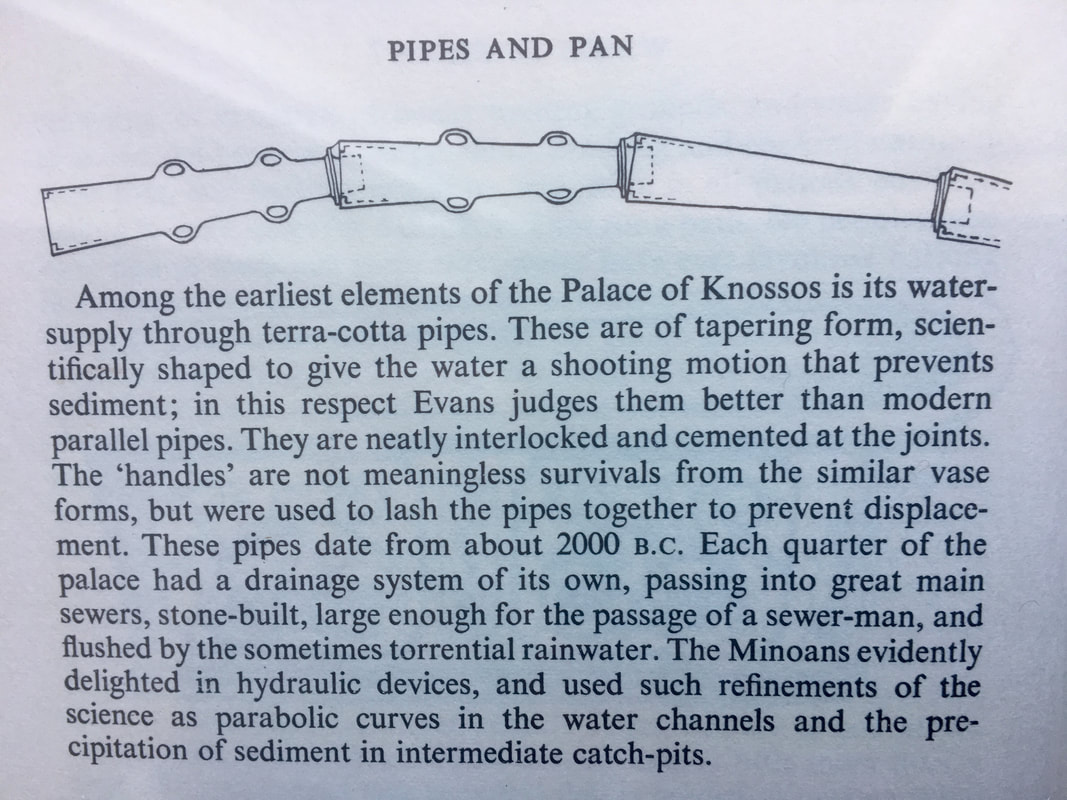
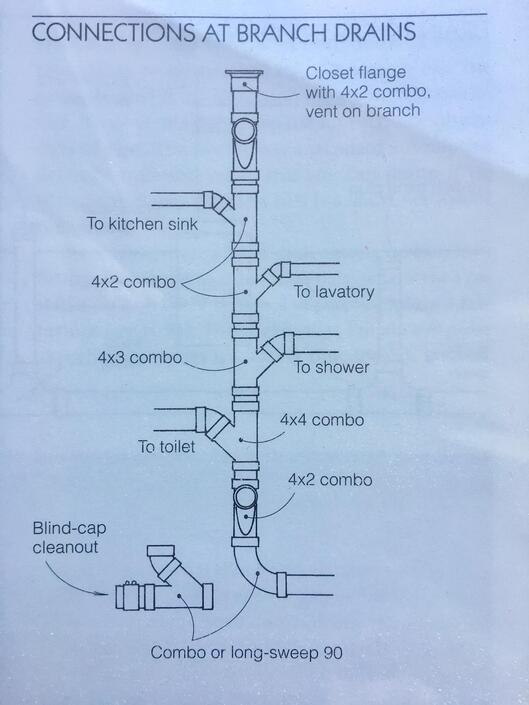
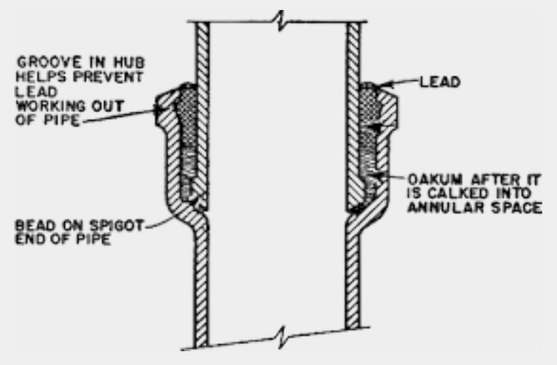
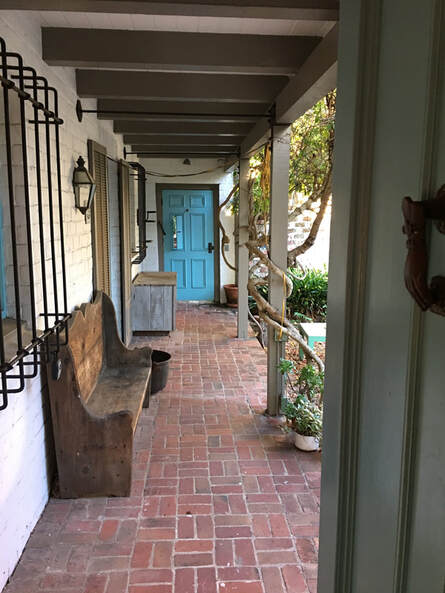
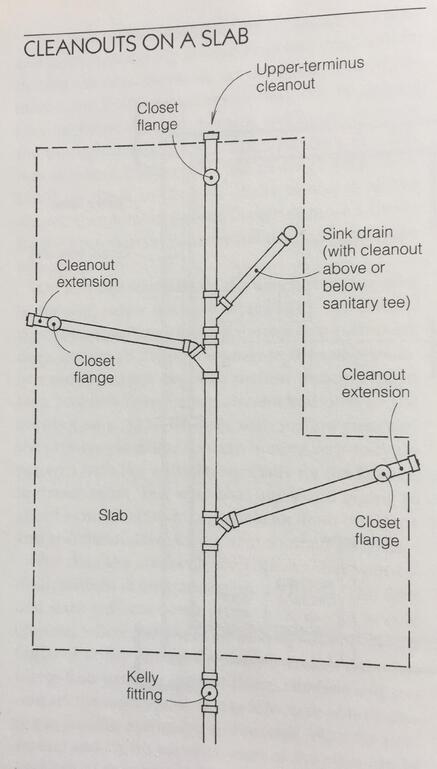
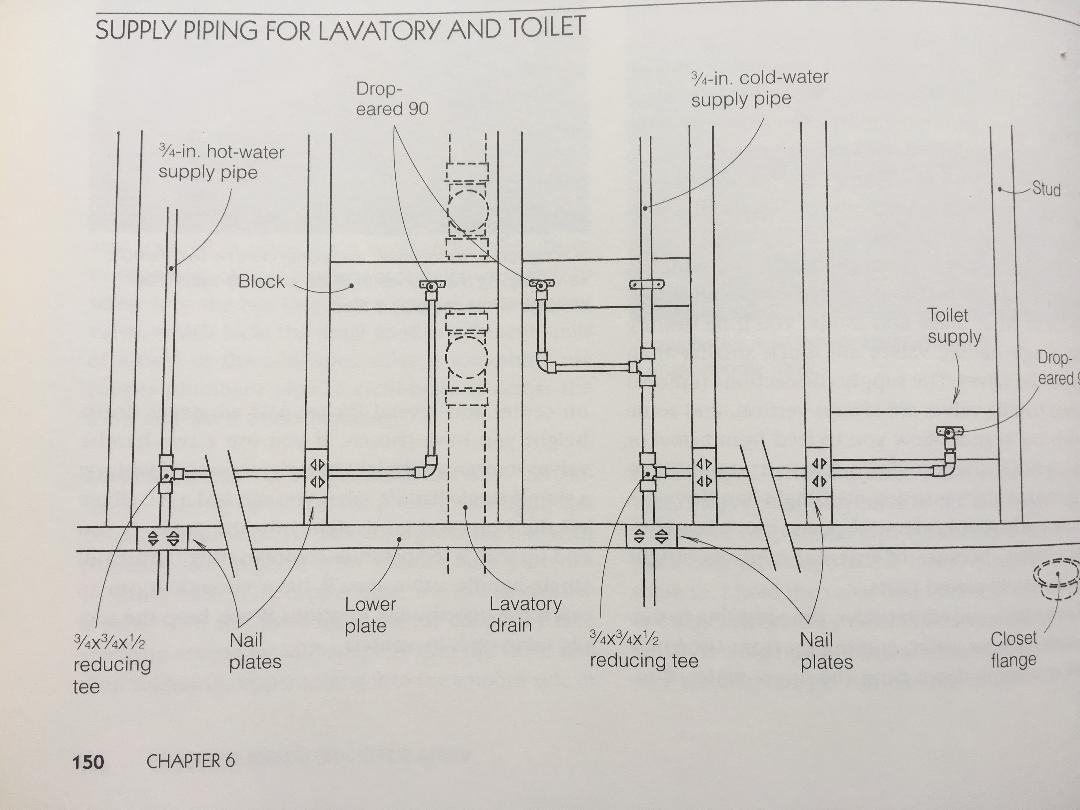

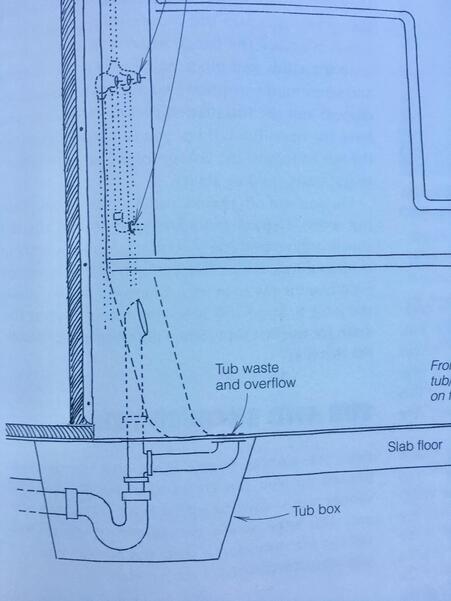
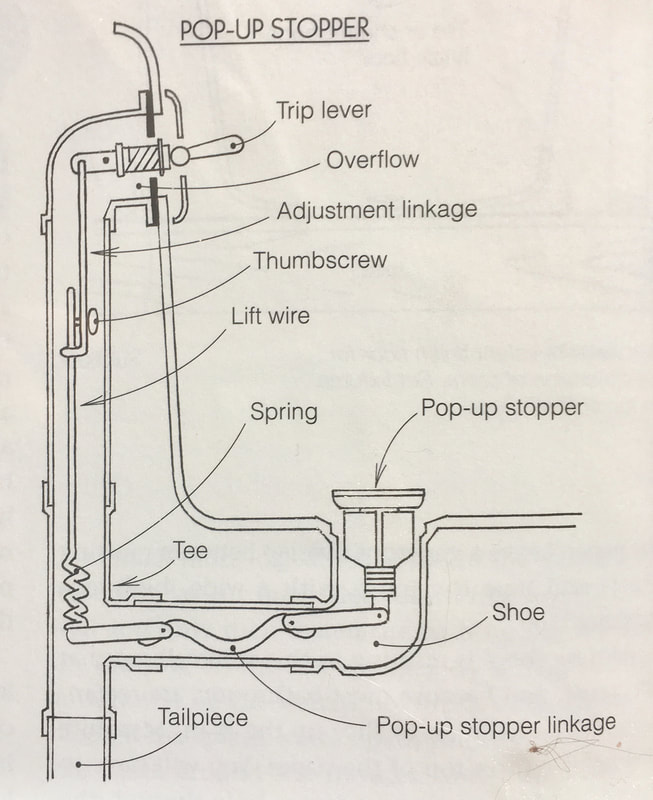
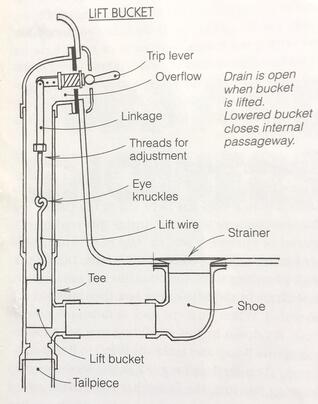
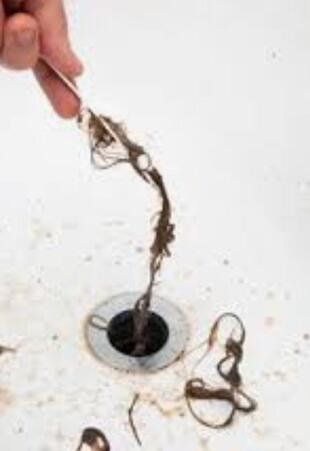
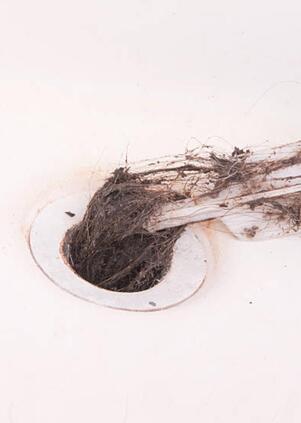
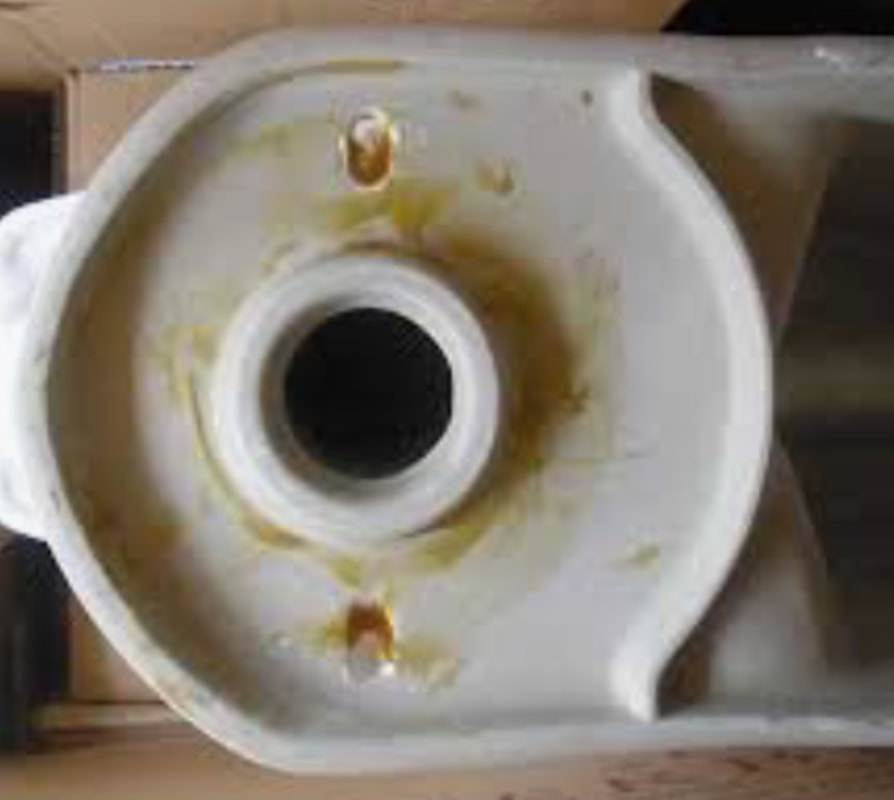
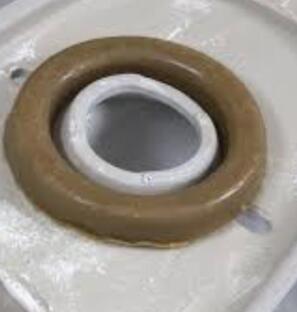
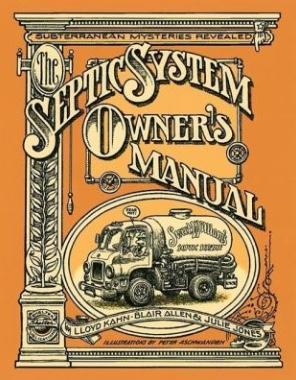
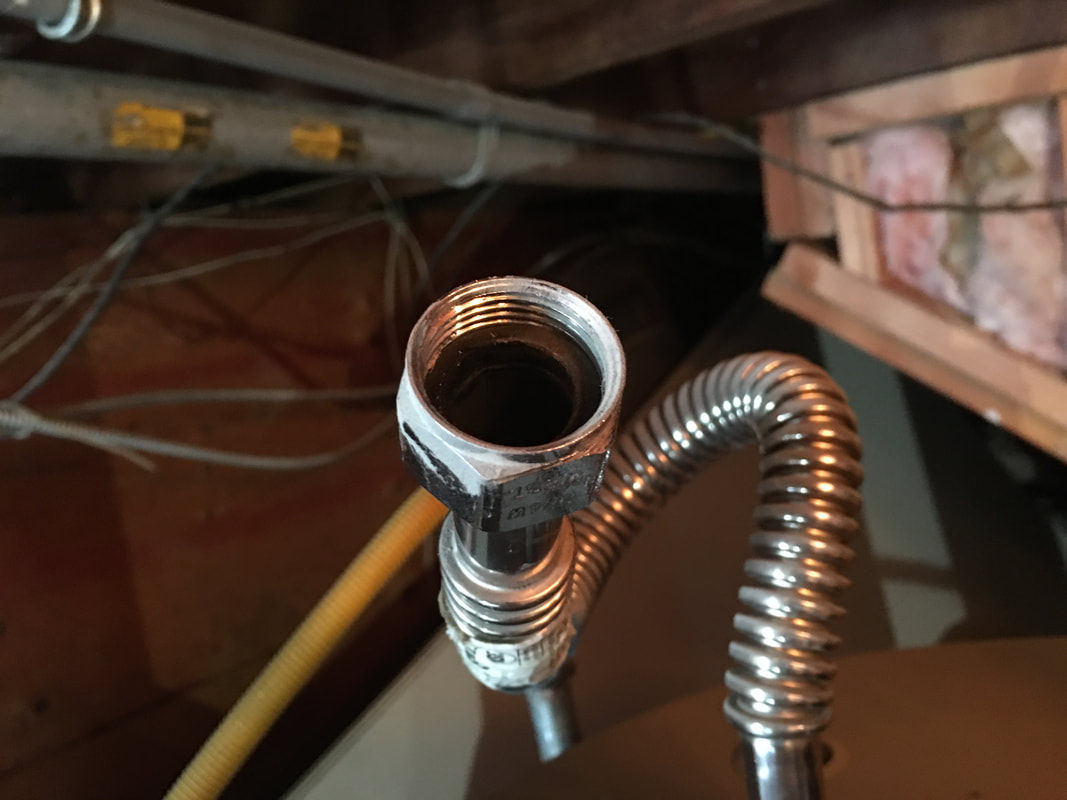

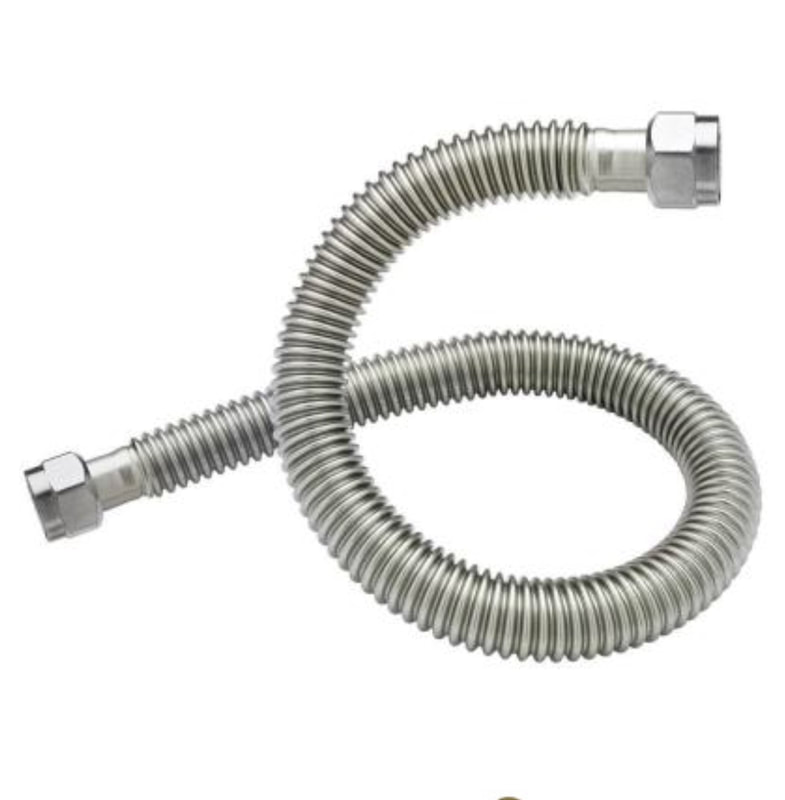
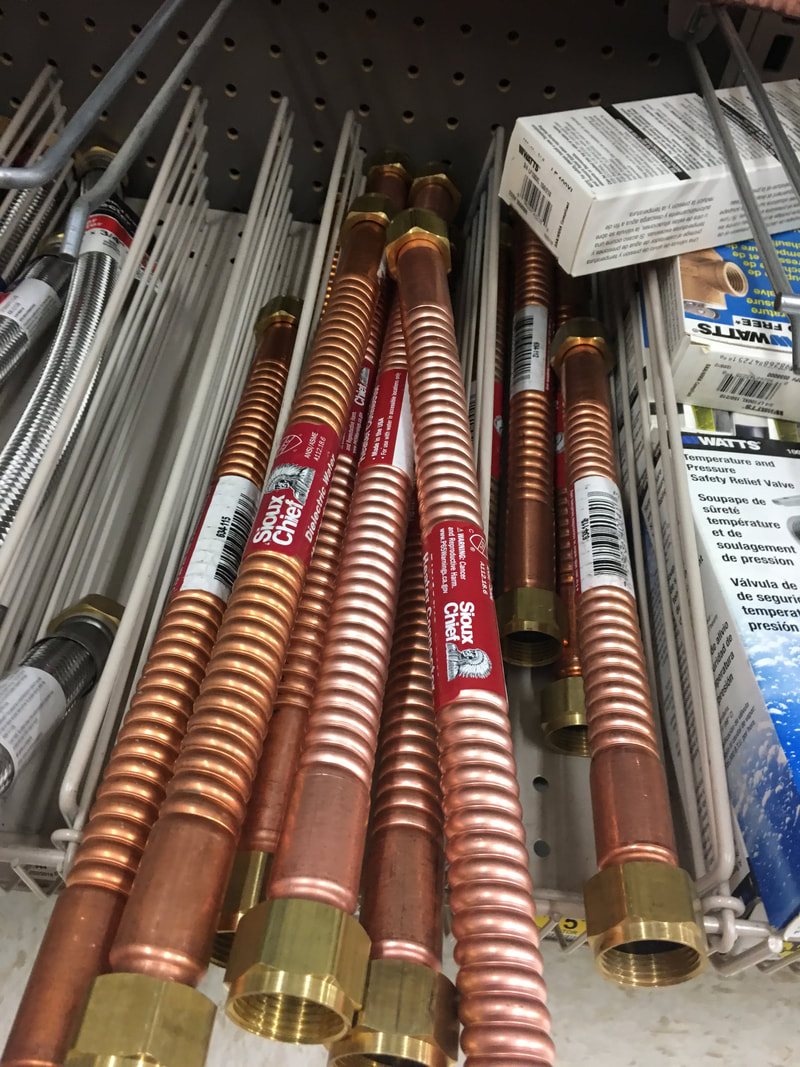
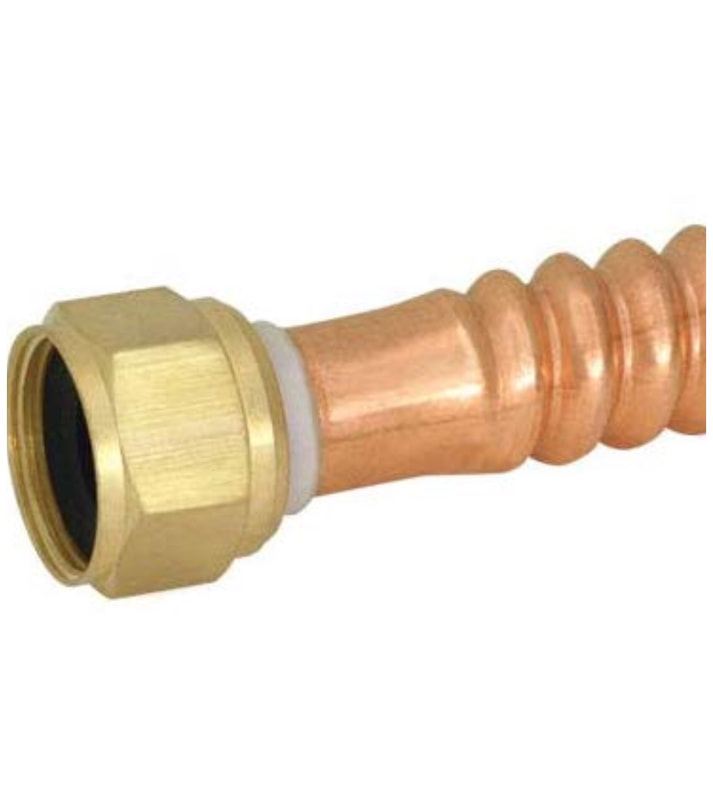
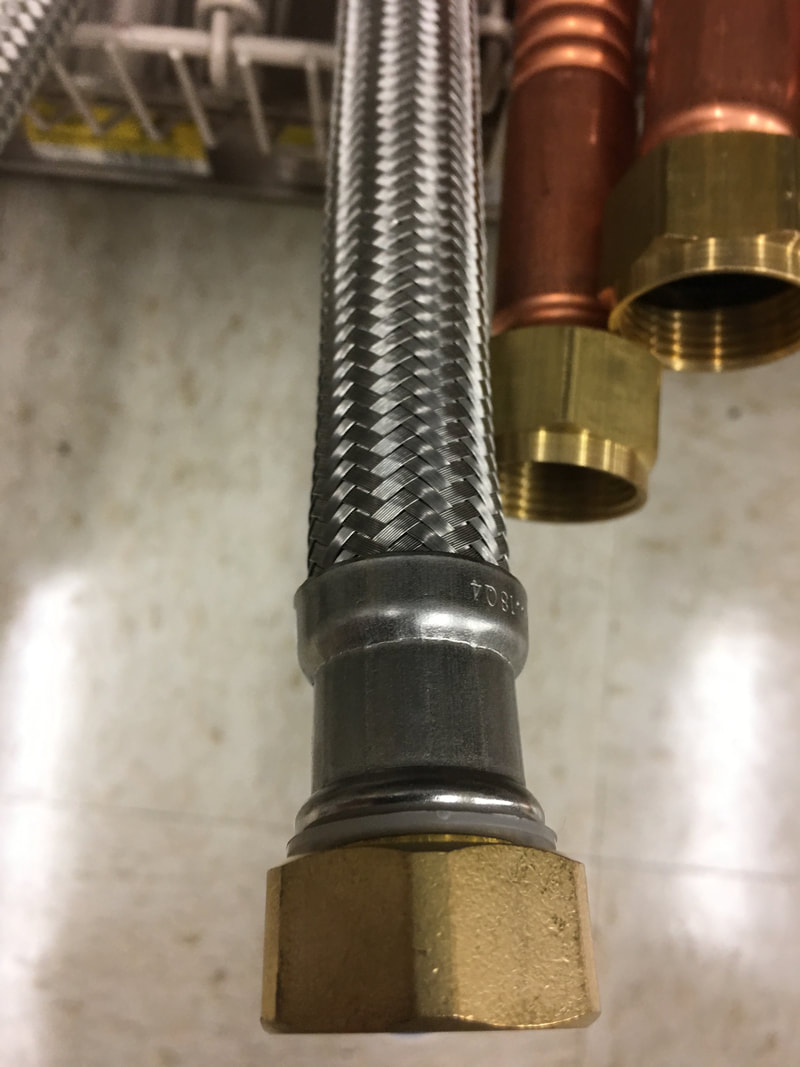

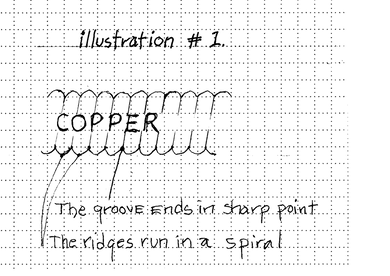
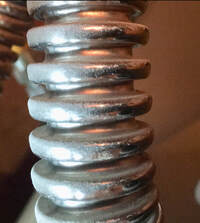
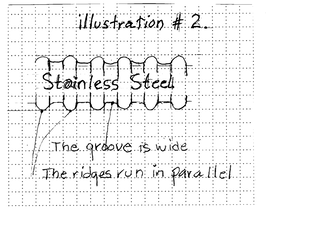
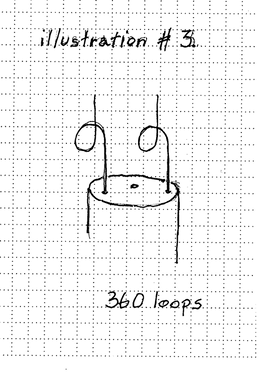
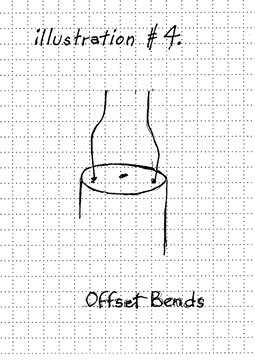
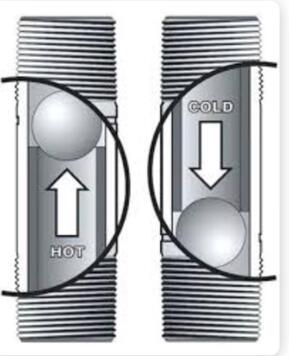
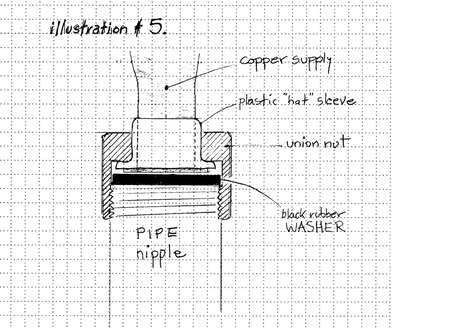
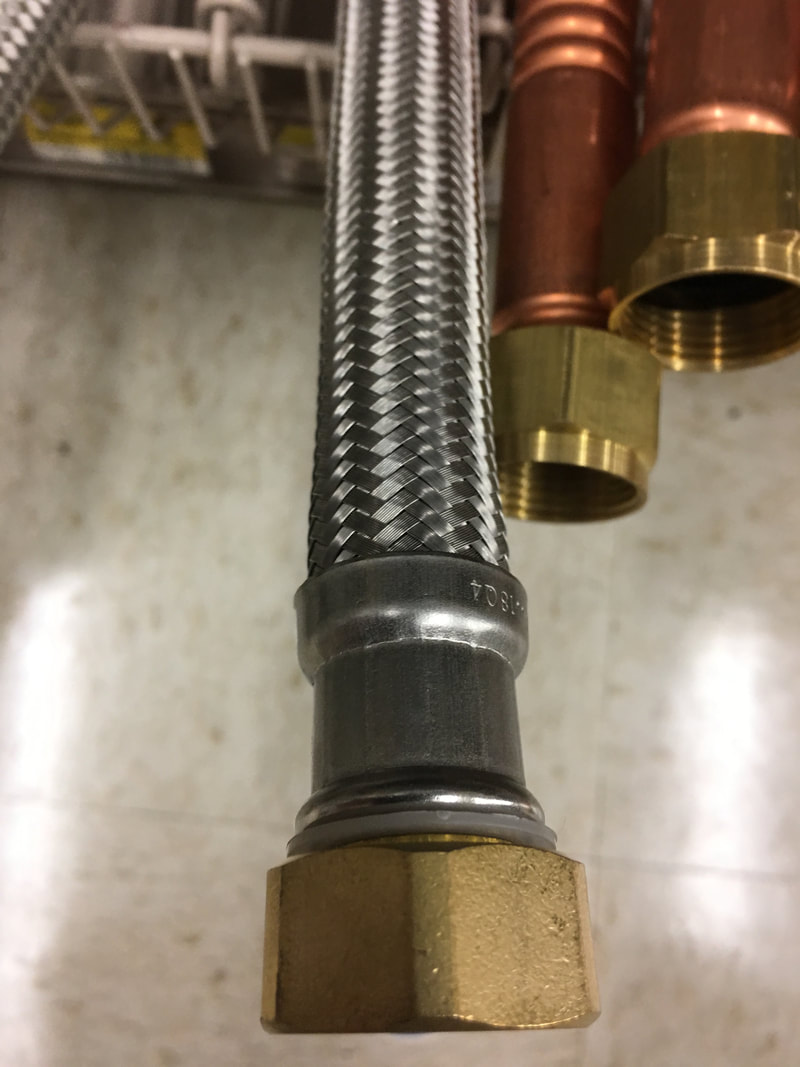
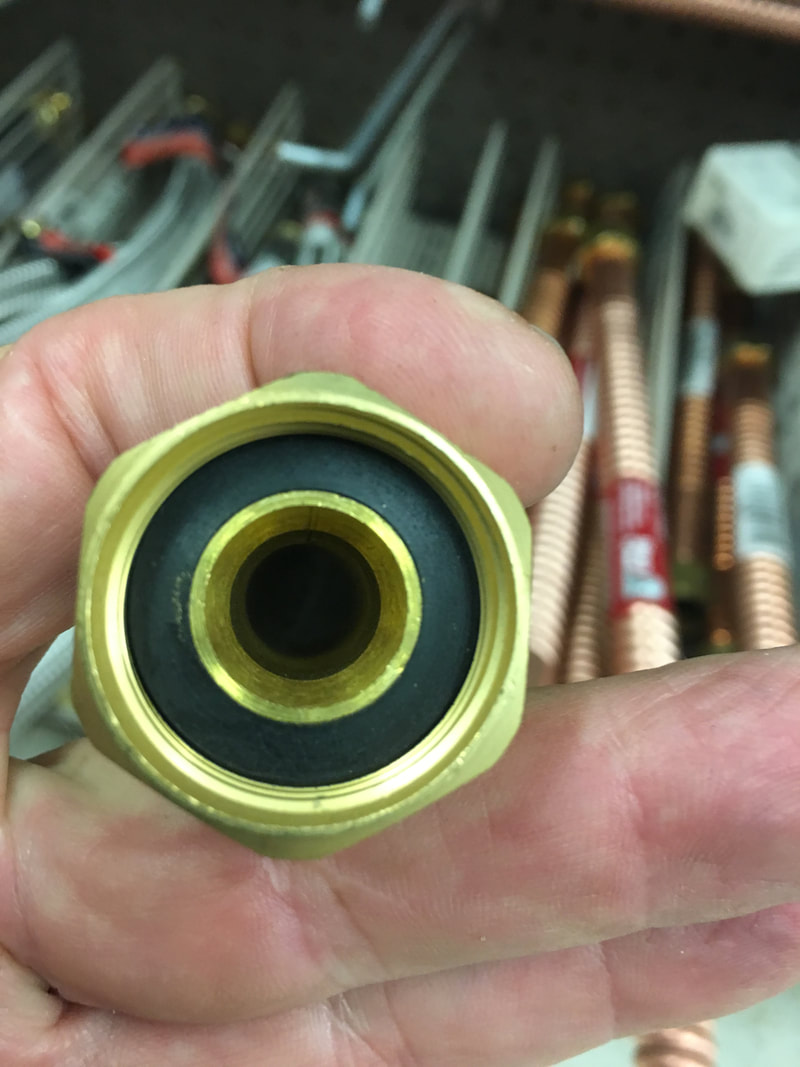
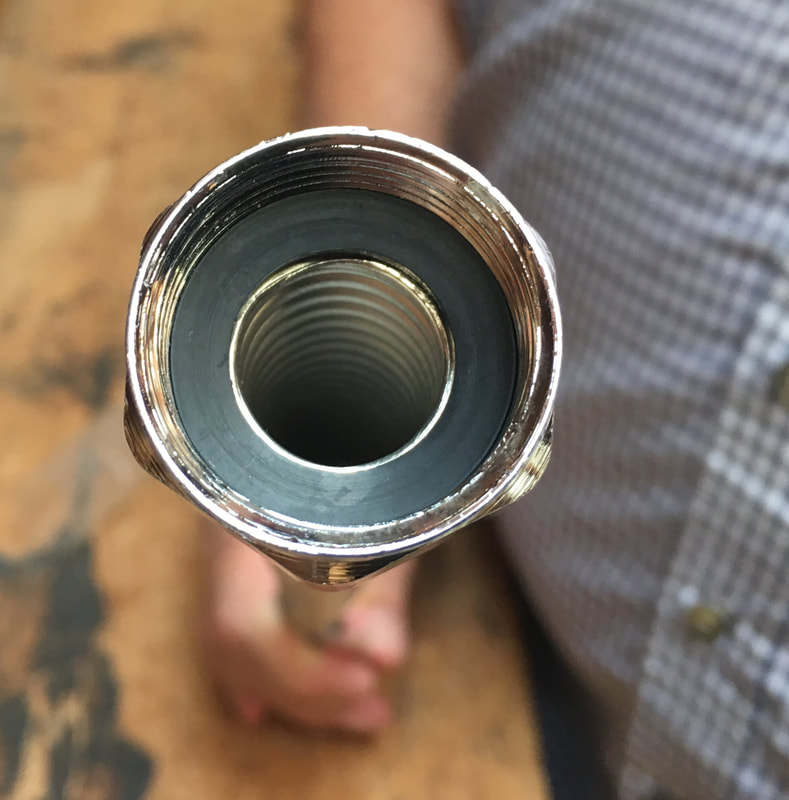

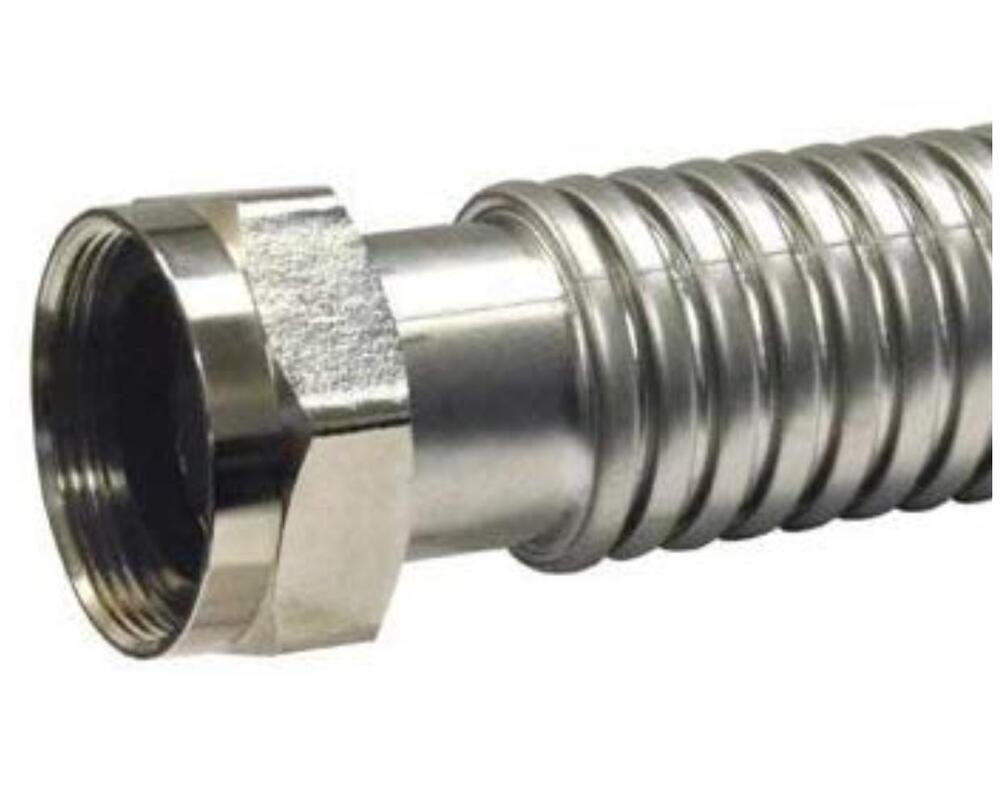
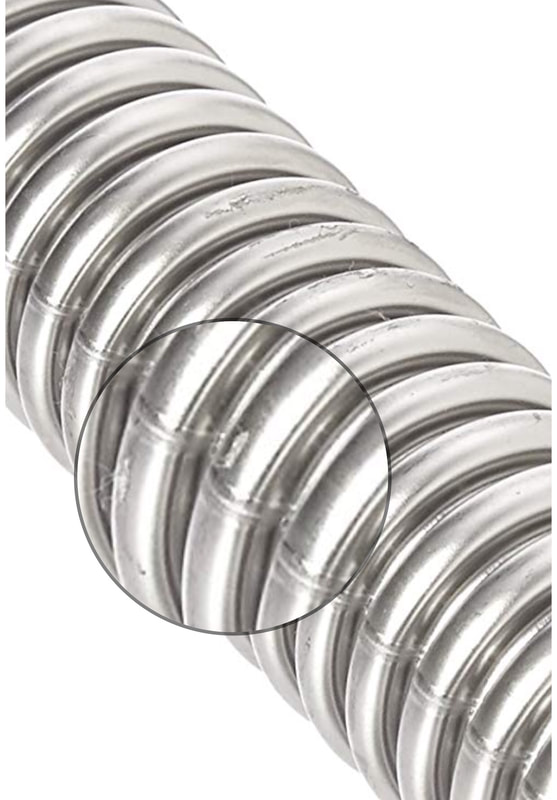

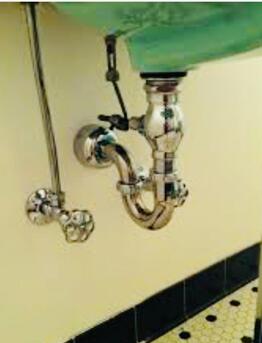
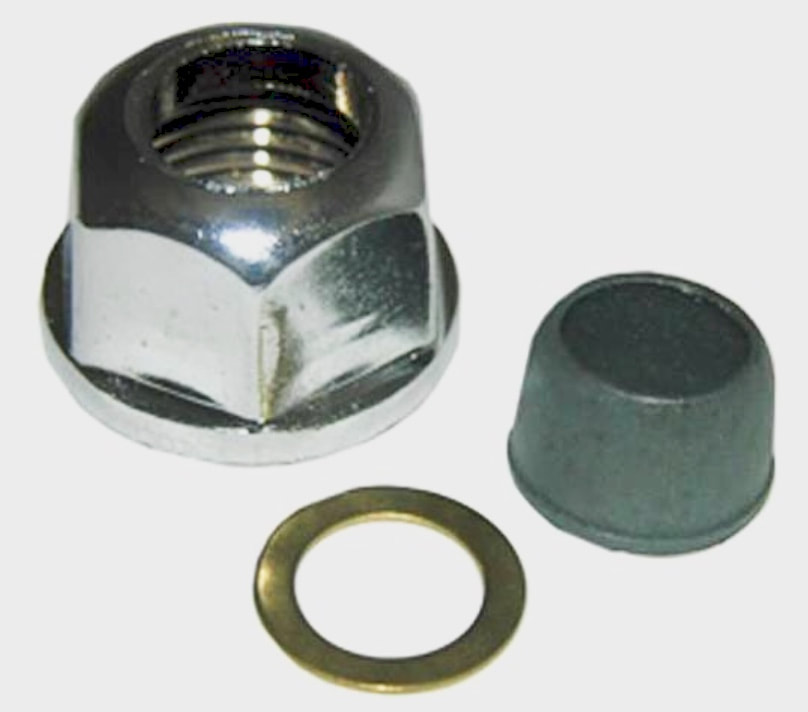
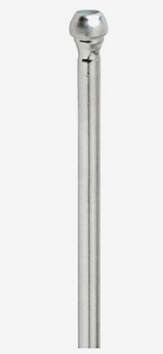
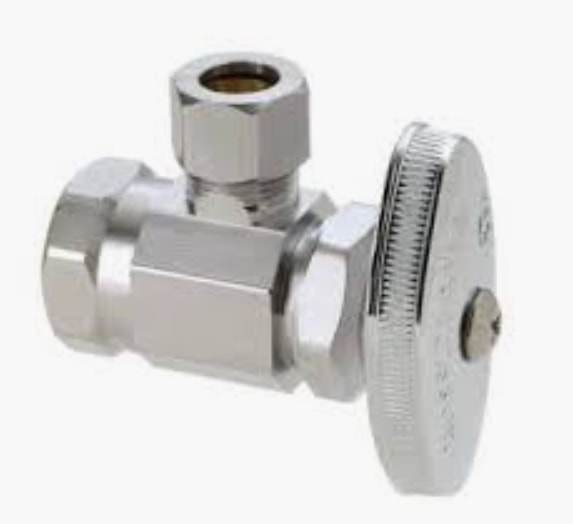
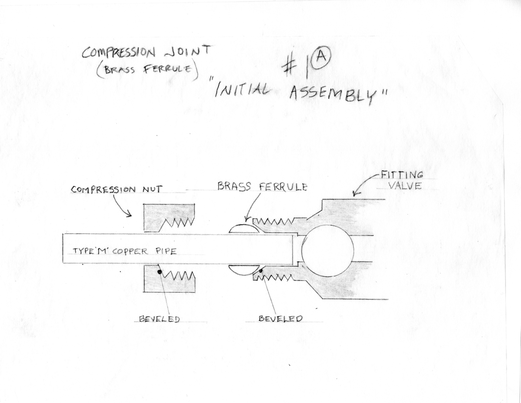
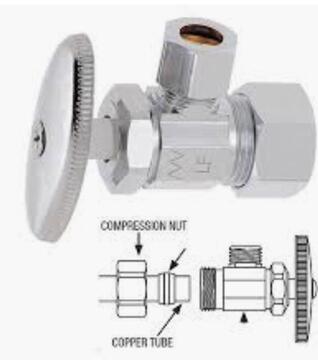
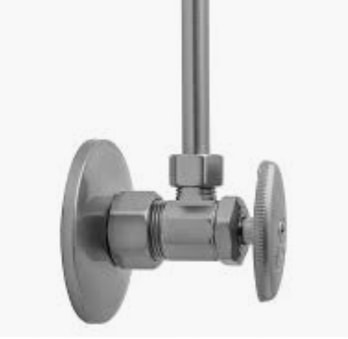
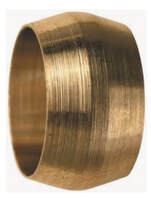
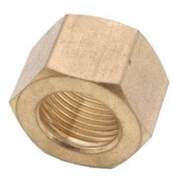
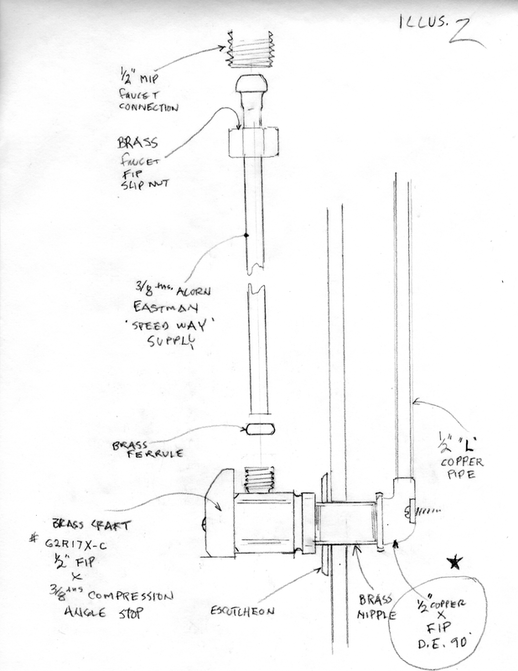
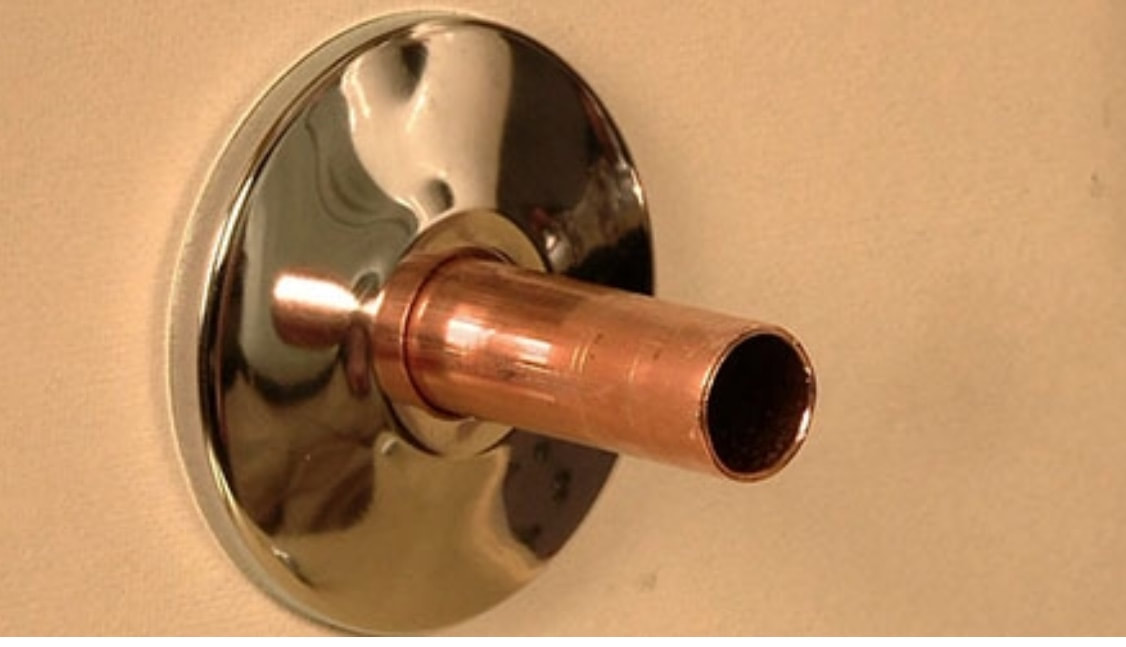
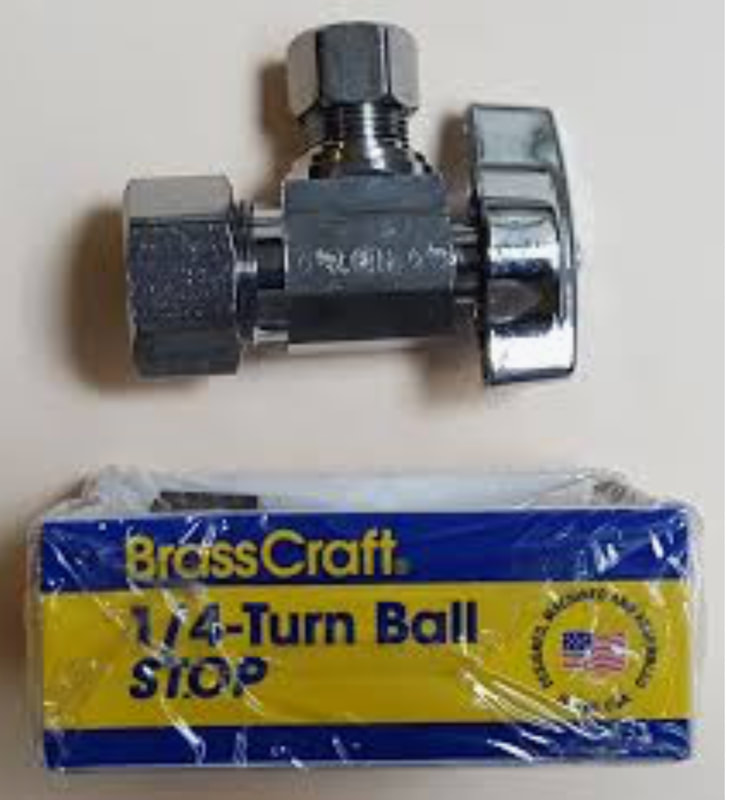
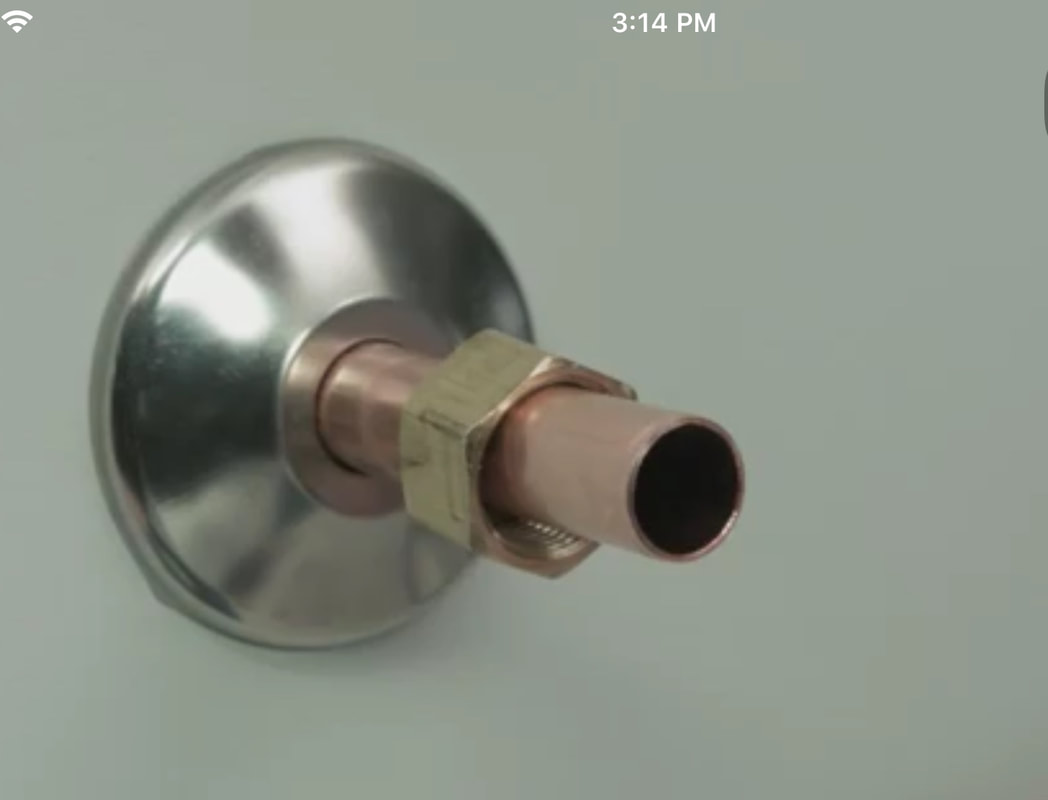
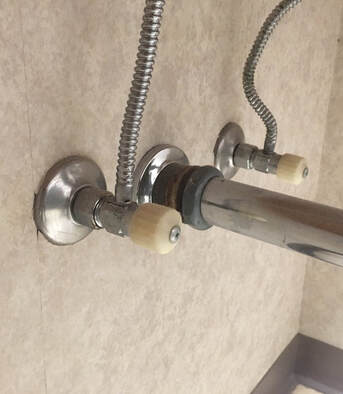
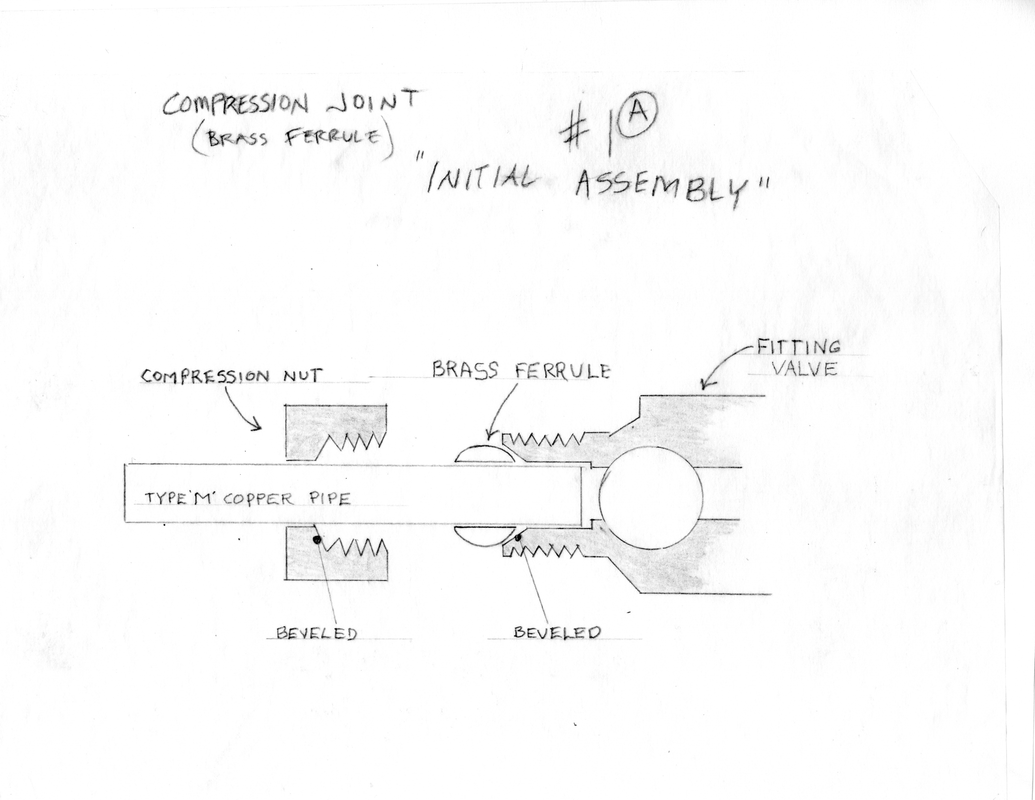
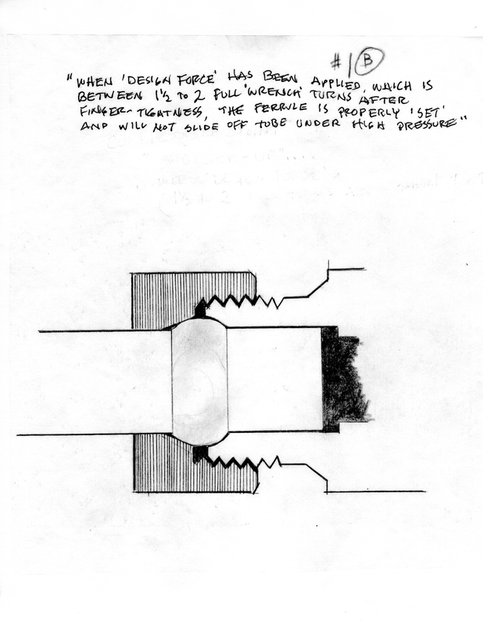
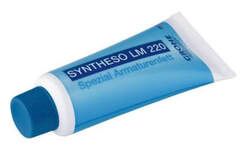
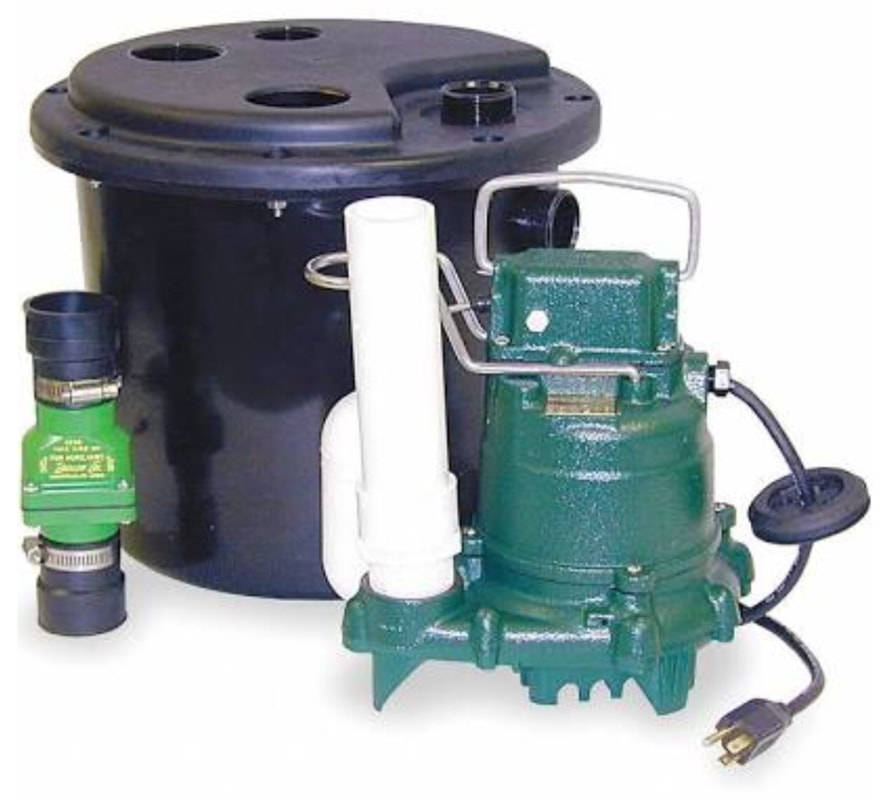
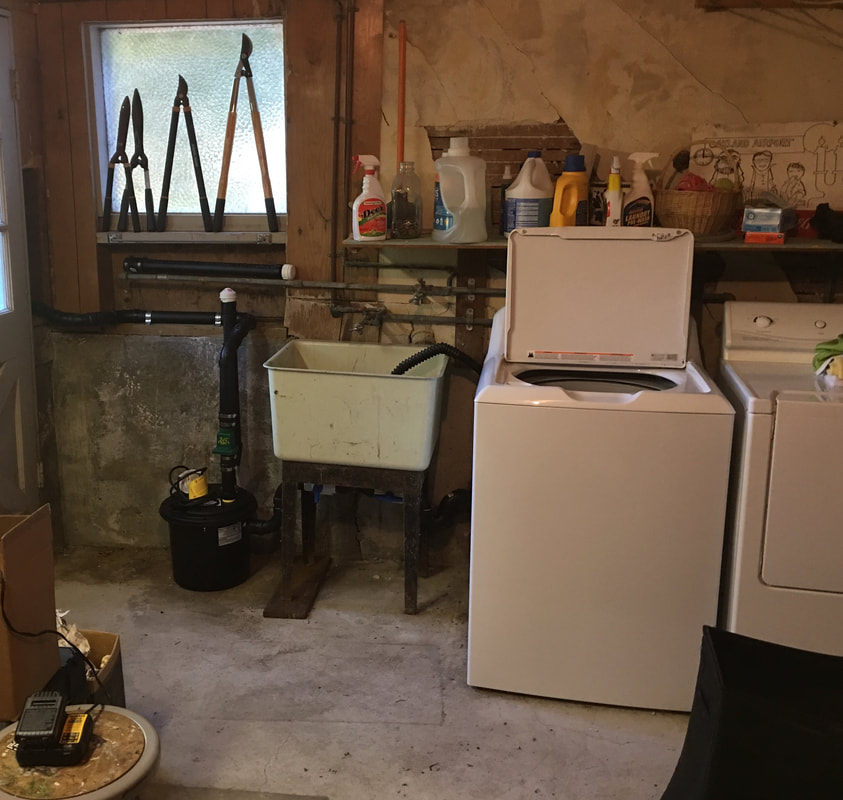

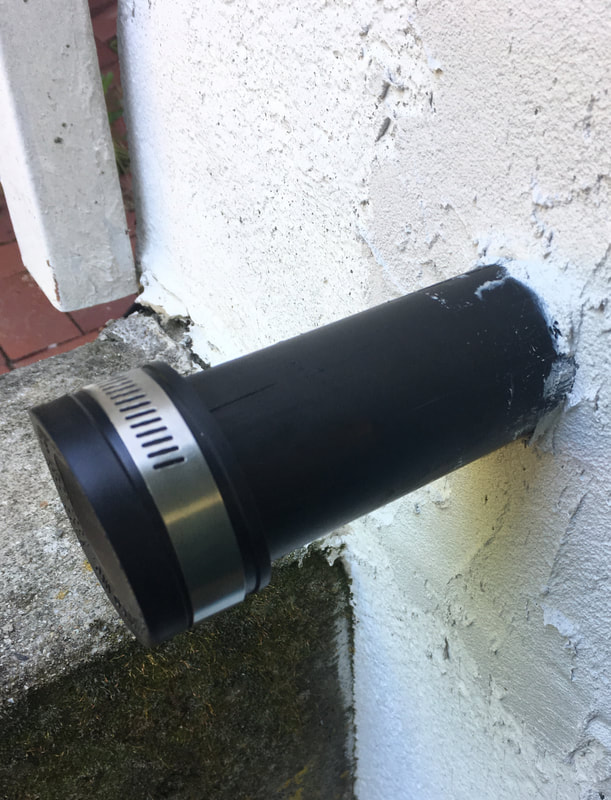
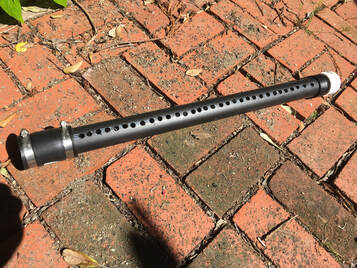
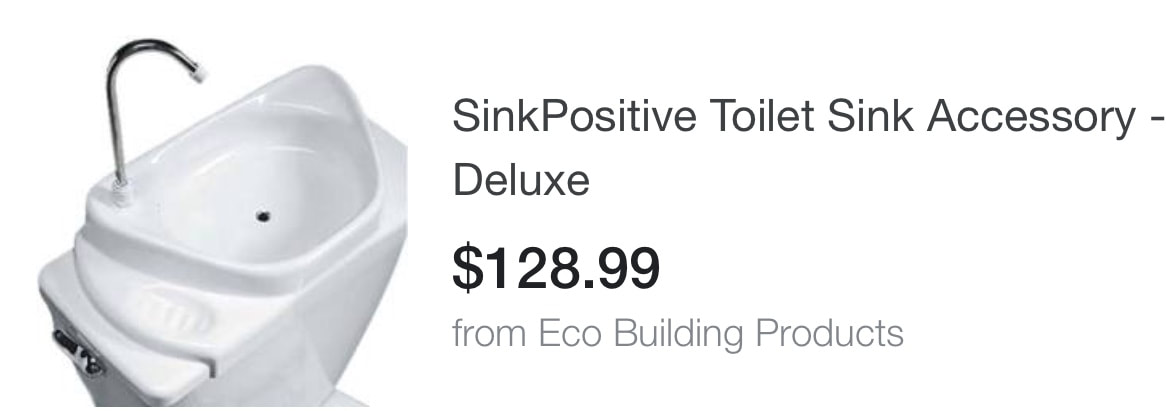

 RSS Feed
RSS Feed